The Meaning of Humanity
An Examination of Rabindranath Tagore's Influences On Honkai Impact 3rd's Narrative
Cast your minds back to Chapter 25, if you may.
Within the pure-white St Freya contained in the Gem of Haste, both you and Kiana are getting ready to say your last goodbyes to Himeko, but you’re not quite ready to go just yet. So, you walk up to her and you talk to her.
And then you talk to her some more.
And you keep talking.
And you keep talking.
And at some point, though your eyes are blurred with tears, you might well have noticed something; Himeko quotes a few poems here, mentioning that they were written by someone named “Tagore”:
“If you shed tears when you miss the sun, you also miss the stars.”
[…]
“One night I burned all my memories, and my dreams became transparent. One morning, I threw away all yesterday, and since then, my steps have been light.”1
Here, Himeko is referring to Rabindranath Tagore, who was a late 19th/early 20th century Bengali polymath; and among other things, his passions included poetry and philosophy. This might seem like it’s just a random literary influence that the writers decided to include as an homage of sorts – which was also what I thought at first when I got to this scene in the story – but a more careful examination reveals that Tagore’s influences on Honkai Impact 3rd’s narrative are far more substantial than one might first think.
Before we begin our analysis however, there is one key piece of information that we should go over: you see, on July 14th 1930, Tagore met Albert Einstein himself, and they had a deep, profound conversation about science, philosophy, and so on. An excerpt of that conversation can be found in this article, which I would highly recommend you read in its entirety, even though it’s difficult to parse in places.
Although it’s not mentioned explicitly, we can easily imagine that HI3rd Einstein also met Tagore and had a similar conversation, after which she recommended his writing to one of her students; namely, Himeko, whom we know (from the Alien Space manga) studied in Caltech under Einstein and Welt. Perhaps Tesla was also involved somehow, given her passion for Indian culture (as we saw in the Anti-Entropy visual novel), in which Tagore was held in very high regard. Either way, this meeting could well have been the reason Tagore became a literary influence for HI3rd writers in the first place, being the sci-fi nerds that they are.
In this conversation, we see Einstein arguing that the validity of science must be based on the existence of an objective reality that is external to human perception – a position that implicitly forms the philosophical basis of science since the European Enlightenment of the 18th century – otherwise, what is it that we are measuring? But on the other hand, Tagore is taking science as evidence of the exact opposite: that the human mind is capable of comprehending that which is beyond human perception; or rather, that our rational faculties, including our capacity for scientific endeavours, is part of that human perception, and therefore, the universe must necessarily be a human universe, for humanity is capable of conceiving everything it has to offer.
Of course, this is quite the oversimplification, but we will be examining Tagore’s philosophy in greater detail as we go on, so do keep all this in mind. In any case, I’d argue that these two sources specifically – that is, Tagore’s poems that Himeko quoted as well as his conversation with Einstein – reveal a tension between his poetry and his philosophy that we can see reproduced in the conflict between Project Stigma and the Herrschers of Humanity in the Part 1 Finale story arc. This, I believe, is the most substantial mark that Tagore has on HI3rd’s narrative.
Tagore’s Philosophy and Project Stigma
Let’s start with Project Stigma: in his conversation with Einstein, Tagore speaks of a ‘Universal Being’ or ‘Universal Man’ with a ‘Universal Mind’, which I believe to be the ultimate aim of Project Stigma (at least, Dr MEI’s 16th revision of it) manifesting in the form of the Spiritual Adam, especially in the context of PROMETHEUS’ explanation in relation to narratives and civilizations in Act 2 of Chapter 33:
Tagore to Einstein, 14th of July 1930:
“The infinite personality of Man comprehends the Universe. There cannot be anything that cannot be subsumed by the human personality, and this proves that the Truth of the Universe is human Truth. I have taken a scientific fact to explain this – Matter is composed of protons and electrons, with gaps between them; but matter may seem to be solid. Similarly humanity is composed of individuals, yet they have their interconnection of human relationship, which gives living unity to man’s world. The entire universe is linked up with us in a similar manner, it is a human universe. I have pursued this thought through art, literature and the religious consciousness of man.”
[…]
“When our universe is in harmony with Man, the eternal, we know it as Truth, we feel it as beauty.”
[…]
“Truth, which is one with the Universal Being, must essentially be human, otherwise whatever we individuals realize as true can never be called truth – at least the Truth which is described as scientific and which only can be reached through the process of logic, in other words, by an organ of thoughts which is human. According to Indian Philosophy there is Brahman, the absolute Truth, which cannot be conceived by the isolation of the individual mind or described by words but can only be realized by completely merging the individual in its infinity.”2
PROMETHEUS, Act 2 of Chapter 33:
“Everything beautiful in your life comes from human invention and perception. It’s impossible to talk about such things apart from human will.”
[…]
“Civilization has always made exist that which was only imaginary – humans have created everything they have. It’s allowed them to make this… That too, is a narrative.”
[…]
“I don’t mean repetitive rhetoric that continues ad nauseam – I mean believable narratives of substance. Morality, money, language, customs, aesthetics, all narratives. All stories.”
[…]
“The human mind itself, the giant, woven web of neurons – is also a narrative constituting a story unique to each person… their self; their true self. In this sense, civilization is originally stories told by stories, a huge web formed by ideas, with individual units we call people.”
[…]
“Project Stigma is the narrative about narratives. Created by a story to govern all stories. As the other doctor likes to put it, it is “the absolute idea of self-existence, conceptual infinity””3
As we can see in these quotations, both Tagore and PROMETHEUS conceives of humanity as an all-encompassing, universal, interconnected web of ‘narratives’ in the broadest possible definition of what a narrative can be, with Project Stigma being the culmination of the totality of those narratives; and thus, we can already see the influence of Tagore’s philosophy on HI3rd’s story.
Conflicting Logics
On the other hand however, this so-called ‘Universal Man’ of Project Stigma as the apotheosis of human civilization is directly and explicitly contrasted against the logic of the Honkai and its Herrschers with regards to the relationship between fiction and reality:
PROMETHEUS:
“Whether it’s your history, or our history, the meaning that has been woven by humanity acts on humanity itself all the time. There are always those who live and die for faith and money. These things deciding who lives and dies… humanity made them.”
[…]
“Humans control stories, stories control humans. This is a delicate balance that allows civilization to flourish… But with Honkai, fiction wages war against reality… The balance is broken and humanity and stories must find their place once more. Herrschers and Project Stigma are at two ends. One, an independent narrative free from civilization, one, a universal story that needn’t be narrated…”
Thus, one may conjecture that the Honkai and its Herrschers are a manifestation of that objective reality external to the ‘fiction’ that is humanity – which Einstein argued in favour of – though, rather than the kind of objective reality that acts more or less mechanically and can be passively measured as the object of science, it is a reality that is actively hostile to humanity. That being said however, the Herrschers of Humanity do seem to be a point of reconciliation between these two conflicting and diametrically opposed logics:
PROMETHEUS:
“Of course, the conflict isn’t irreconcilable.”
Mei:
“You’re talking about… the Herrscher of Human?”
PROMETHEUS:
“Yes. Such Herrschers belong to civilization, to those that need to create fiction. If they can overcome Finality… Then this is the best answer the paradoxical Honkai has to offer.”
Mei:
“And… Project Stigma?”
PROMETHEUS:
“As Dr MEI said… Project Stigma is the standard answer.”
Mei:
“Standard? In the sense of Finality?”
PROMETHEUS:
“More than that. Standard meaning the worst. Is that not the human way of thinking? Stories offer wonderful pictures of human civilization… But this isn’t usually true for individual experiences. Early farmers were worse off than hunters, early workers worse than farmers; though there would be no standard for civilization without them. But there’s no narrative where they are rewarded for their efforts. Some narratives even tell them they deserve to suffer… This is humanity’s standard narrative. People’s lives driven by imagined purposes in exchange for progress, consciously or unconsciously. It lets fiction grow wild… History has shown that letting go can help liberate people from the shackles of the previous narrative. But the price of liberation is very high… setting mountains ablaze, countless deaths in war, Project Stigma which deconstructs humanity… if you view humanity as a whole, they choose the worst answer, generation after generation… Denying reality with fiction.”
Tagore’s Poetry and the Herrschers of Humanity
Here, we can see that not even PROMETHEUS thinks of Project Stigma as the best answer to the problem of the Honkai, despite it being the culmination of human civilization itself. In fact, she even thinks of it as being the “standard” in the sense of it being the “worst” answer, and instead, the “best” answer lies in an alternative logic which she expresses in terms of letting go and being liberated from the shackles of the previous narrative; and wouldn’t you know it, this is something that Bronya has also articulated in this exact conversation and elsewhere in this story arc in terms of inheritance:
Bronya:
“As it happens, as the third Herrscher of Reason, Bronya’s path is also filled with inherited narrative.”
[…]
“…But the Herrscher of Reason’s spirit is inheriting reality. The Herrscher of Reason’s power is the key to fighting Project Stigma.”
She has also addressed this topic in greater detail in a conversation with Mei in Act 2 of Chapter 32, where she spoke about inheritance specifically in relation to notions of sacrifice and letting go:
Mei:
“Now that you can’t use your Herrscher powers, can you still hear three hundred thousand voices echoing in your heart?”
Bronya:
“No. But… after the core stopped responding, I can feel them even more clearly. That’s when I really understood that the existence of inheritance was validated through disappearance. Their voices vanished, true, but their wills became more vivid. When making a choice, I sometimes can’t really tell… Whether it comes from myself or them. Like [how] we were unknowingly influenced by Herrscher of Sentience today.”
Mei:
“But regarding this topic, I don’t think we need to avoid Herrscher of Sentience too much.”
Bronya:
“Indeed. How to put it… on this occasion, rather than Bronya and Mei… We’re first and foremost two successors.”
Narrator:
“Though not without detours, two eras had bestowed one of their greatest legacies upon the two girls.”
[…]
Bronya:
“I know little about your life with the World Serpent. Rita’s gathered covert intelligence, but it’s not the same as experiencing it. But after we’re reunited, the commonalities we share tell me that…”
[…]
Bronya:
“Mei. After receiving some kind of inheritance, you seem to… be able to understand the sacrifice of others.”4
We see this alternative logic appear in Tagore’s poetry – the poems that Himeko quoted, for example – which were all about letting go of the past and moving on; and it’s more than appropriate, considering that it was quoted in a scene where Kiana has to let go of Himeko and walk through that infamous door. This is the kind of inheritance that Bronya is talking about here – one “validated through disappearance” – for she had to let go of Joyce as the amalgamation of the 300,000 consciousnesses contained in the Core of Reason in order to awaken as the Herrscher of Truth, just like how Kiana had to let go of Himeko in order to inherit her legacy through the Gem of Haste, and how Mei had to let go of Elysia in order to inherit her Authority of Origin.
We may thus sum this up like so: whereas the logic of Project Stigma is to weave the narrative of narratives that is human civilization to the point of its absolute, eternal self-existence in order to capture Finality and staunch the flow of time, thereby affirming humanity in its eternity in a feedback loop, the logic of the Herrschers of Humanity is the exact opposite of that; to embrace the passage of time, inheriting the spirit of previous generations and carrying them forward into the future, which can only be done by letting go of the past, thereby ‘overcoming’ Finality instead of merely ‘capturing’ it. Again, as PROMETHEUS put it in her explanation, this is the so-called “best” answer to the “standard” – or rather, the “worst” – answer of Project Stigma; the ‘best of all possible worlds’, so to say.
There is one last additional dimension to this of course, which is that the creators and executors of Project Stigma very much saw all this coming, and were in fact hoping for it; for Project Stigma was created in order to be overcome by the Current Era of humanity. Otherwise, Dr MEI and PROMETHEUS would not have helped the Herrschers of Humanity escape the bubble world they were trapped in, and Kevin would not have stood by and watched as this new era of humanity grew dissatisfied with the idealized Dreamland that Project Stigma provided for them, and as Fu Hua made off with a fragment of the Authority of Finality that she stole from his shadow. As a matter of fact, it’s precisely through Project Stigma that the Herrschers of Humanity achieved their newfound powers with which they confronted both Kevin and the Cocoon of Finality.
To return briefly to Tagore, literature was one of the ways in which he, by his own admission, pursued that which he spoke of in his philosophy, so perhaps there was no tension at all between his poetic and philosophical logics to begin with; or rather, that tension is more akin to the dynamic of anticipation and release found in lyricism, music, and, well, poetry, which constitute a veritable movement. Likewise, we could thereby understand the overcoming of Project Stigma as a matter of the old era passing on the torch to the next era, though they must also ensure that this new generation will be ready to bear the flames of Prometheus.
Humanity’s Departure From Childhood
The struggle that the Herrschers of Humanity go through to inherit the legacies and carry forth the spirits of their predecessors are individual instances that are emblematic of humanity’s collective struggle to “graduate from their childhood”; once again, as per PROMETHEUS’ explanation.
Indeed, it is a veritable struggle, for letting go of the past and moving onwards into the future is no trivial matter. The fear, pain, loss, grief, and despair are all part of this process of growth, along with all the love, warmth, kindness, trust, and compassion. As Kahlil Gibran put it in his poem, ‘The Coming of the Ship’ (which one of the Gray Serpents (1904) of all people quoted in Act 3 of Chapter 34):
“It is not a garment that I cast off this day, but a skin that I tear with my own hands. Nor is it a thought I leave behind me, but a heart made sweet with hunger and with thirst. Yet I cannot tarry longer. The sea that calls all things unto her calls me, and I must embark.”56
Thus, the humanity that has gained its adulthood will have become a humanity that admits these Herrschers, and even Finality itself – which once seemed so utterly incompatible with it – into its fraternity, overcoming the limits of its own self-existence in order to become a humanity not all too human, having cast off its old flesh and reconstituted itself anew with these parts that, in its bygone past, was irreconcilably Other to it.
These themes of growing up, letting go, and reckoning with the passage of time are the backbone of HI3rd’s story, for HI3rd is first and foremost a coming-of-age narrative. In this context, Project Stigma is the culmination of everything that has been built up over the past 5-6 years of storytelling in Part 1, so understandably, it’s incredibly complex and multifaceted. At the same time however, it is for this very same reason that both this specific topic and this story as a whole has become a rich tapestry which we can explore to our heart’s content.
On the one hand, we can investigate those other facets of Project Stigma further. Here, we looked into its philosophical and metanarrative aspects – specifically with Rabindranath Tagore’s influences in mind – but there are other sides to it; for example, we can also examine it from the perspective of theoretical physics (i.e. quantum mechanics, thermodynamics, general relativity, etc.), or even other philosophical frameworks such as Plato’s theory of forms or Hegelian dialectics. On the other hand, echoes of the aforementioned themes that we’ve seen here can certainly be seen elsewhere throughout HI3rd’s story in just about every story arc – again, due to how central it all is to the narrative – which allows us to explore it in a variety of different contexts.
That being said, I will have to leave all this for later – perhaps in other articles – for the sake of keeping this one focused on the topic at hand. Safe to say however, I will continue on this journey where we explore the obscure nooks and crannies and less-travelled paths in this story that is so dear and familiar to all our hearts.
solentestuaries is a writer, a fan of Honkai Impact 3rd, and one of the contributors in Hyperion Team 3rd. You can follow her social media at https://twitter.com/solentestuaries
Nanashi E, ‘[Honkai Impact 3] Himeko's Bonus Dialogue - Chapter 25-13 (Finale : Farewell)’ (9 August 2021) [0:30 - 1:05]
Maria Popova, ‘When Einstein Met Tagore: A Remarkable Meeting of Minds on the Edge of Science and Spirituality’ (27 April 2012) [https://www.themarginalian.org/2012/04/27/when-einstein-met-tagore/]
itsOgiru, ‘Honkai Impact 3rd Chapter 33 In the Name of the Truth Act 2 Full CG JP Dub’ (22 December 2022) [57:24 - 1:08:40]
itsOgiru, ‘Honkai Impact 3rd Chapter 32 End of the World Act 2 Full CG JP Dub’ (17 November 2022) [1:18:53 - 1:21:12]
itsOgiru, ‘Honkai Impact 3rd Chapter 34 The Moon's Origin and Finality Act 3 Full CG JP Dub’ (14 January 2023) [1:10:23 - 1:10:52]
Kahlil Gibran, ‘The Coming of the Ship’ (1923), from The Prophets, trans. by Alfred A. Knopf [https://poets.org/poem/coming-ship-0]





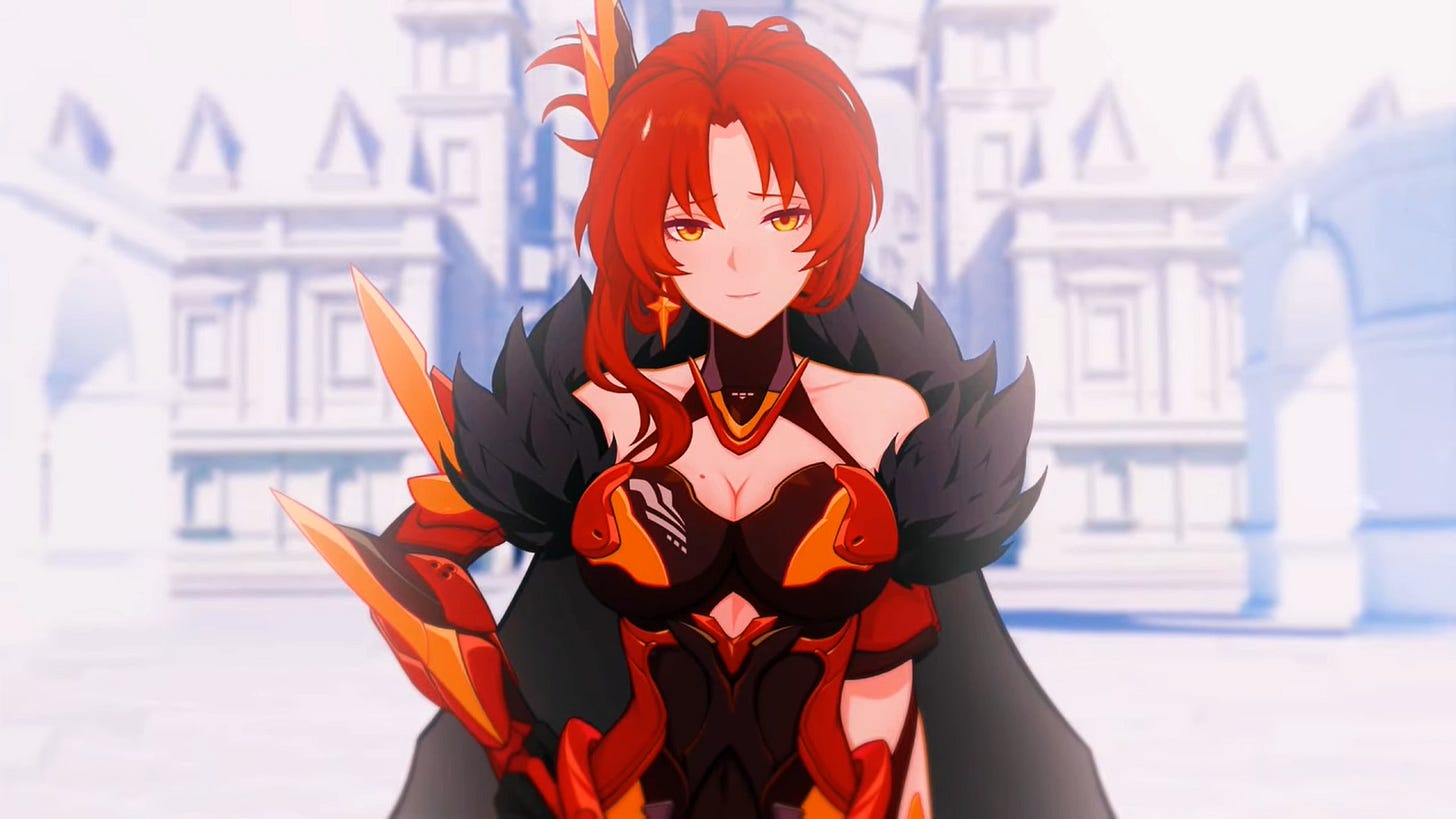
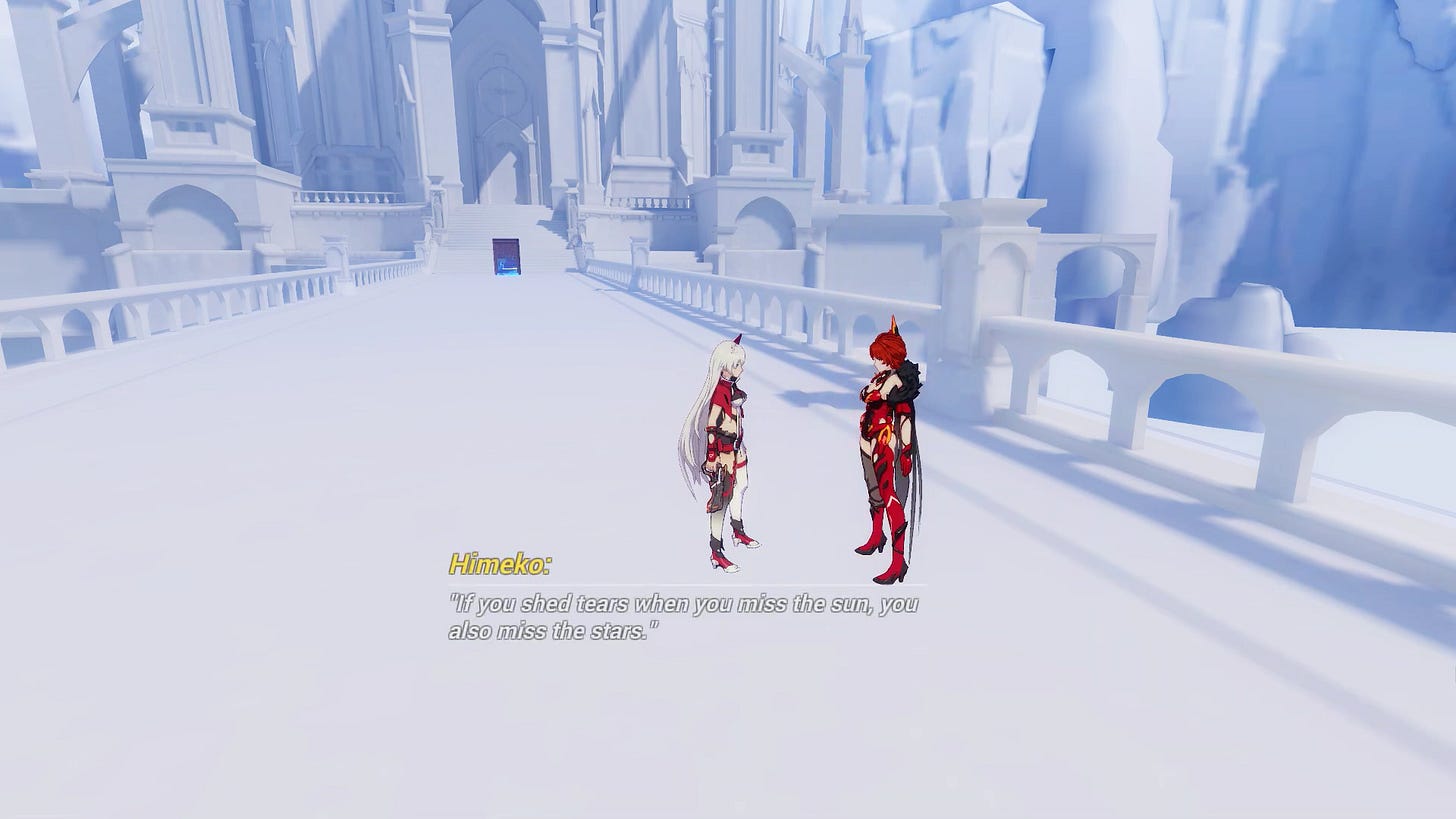
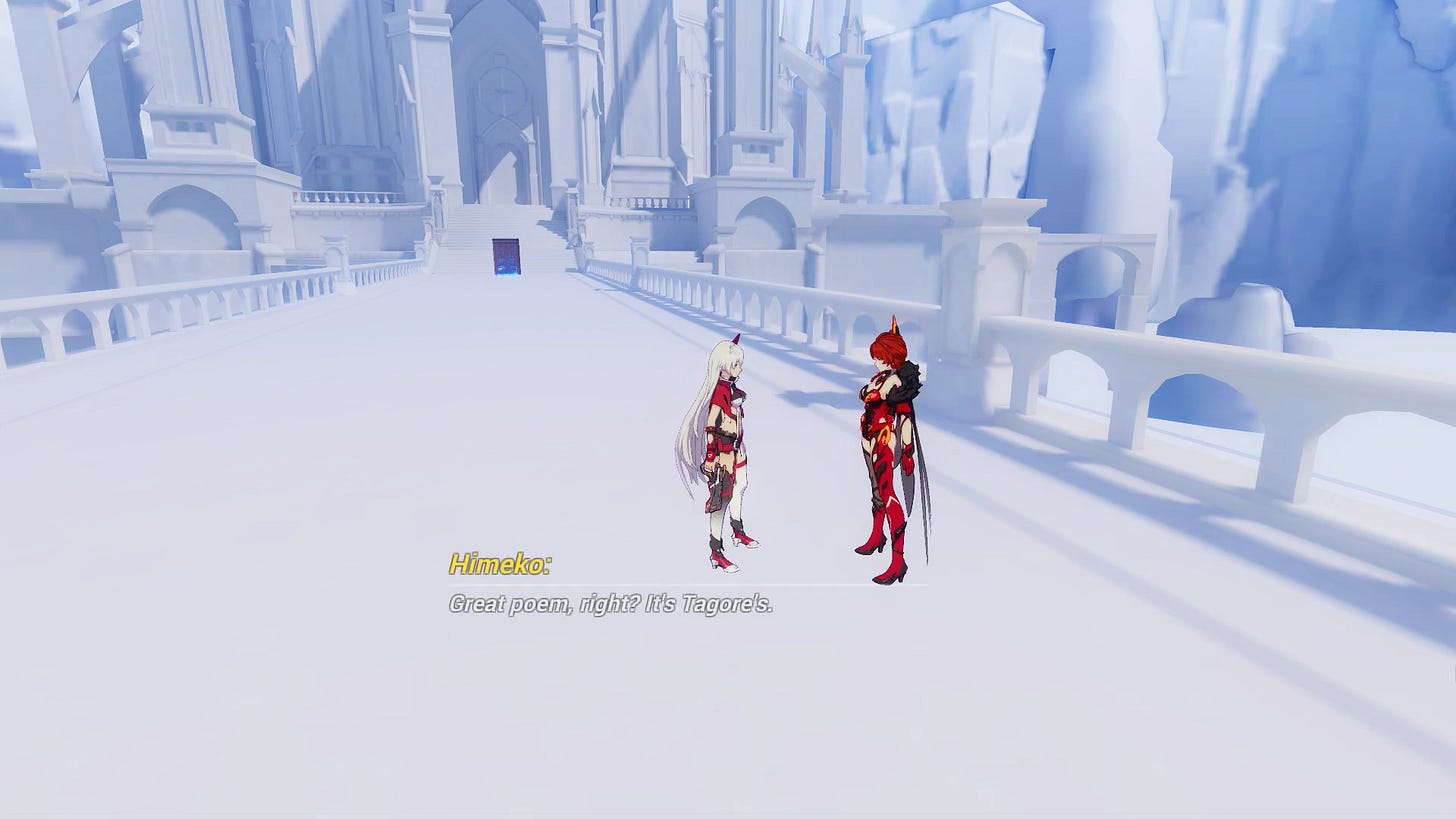
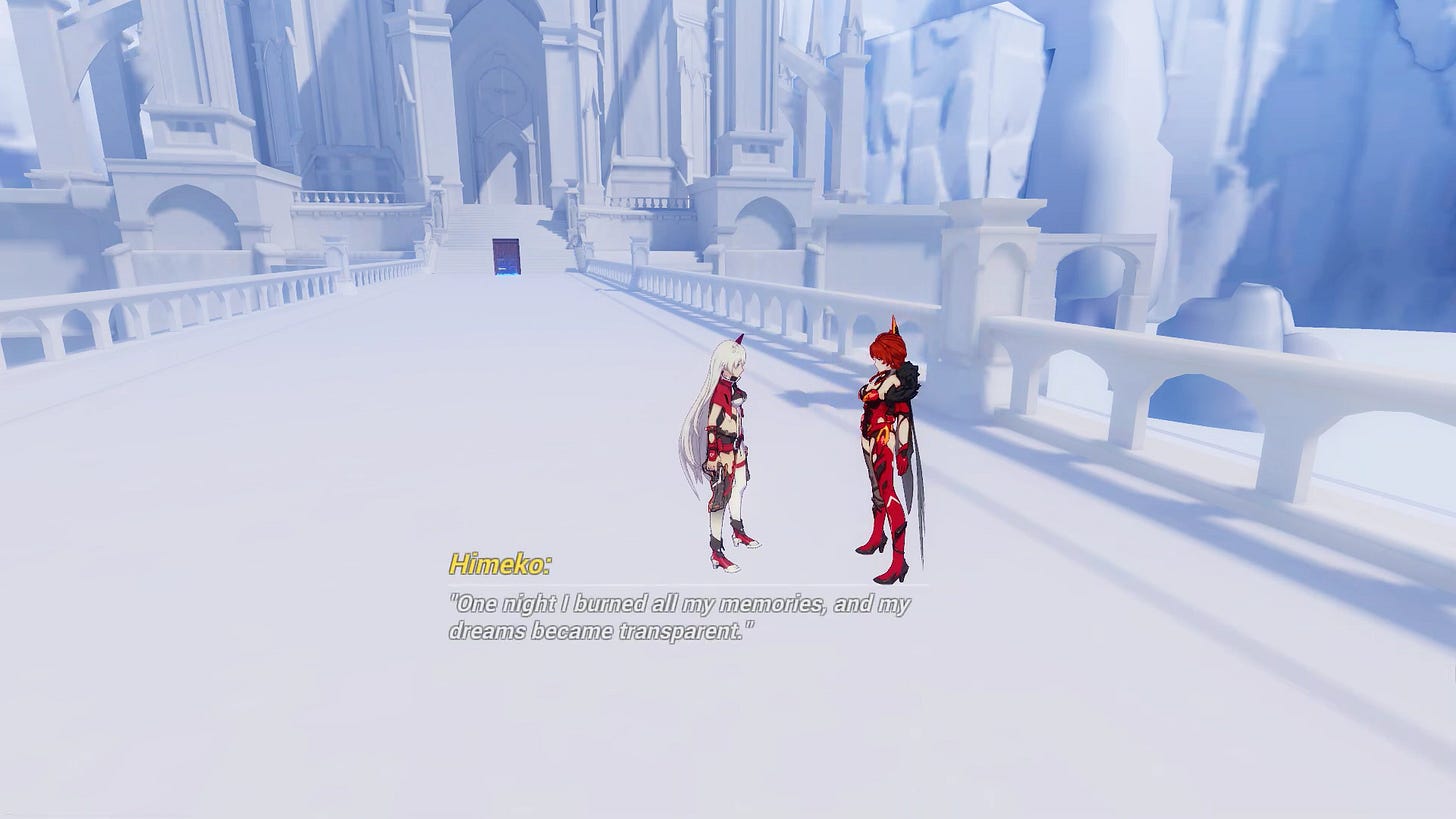
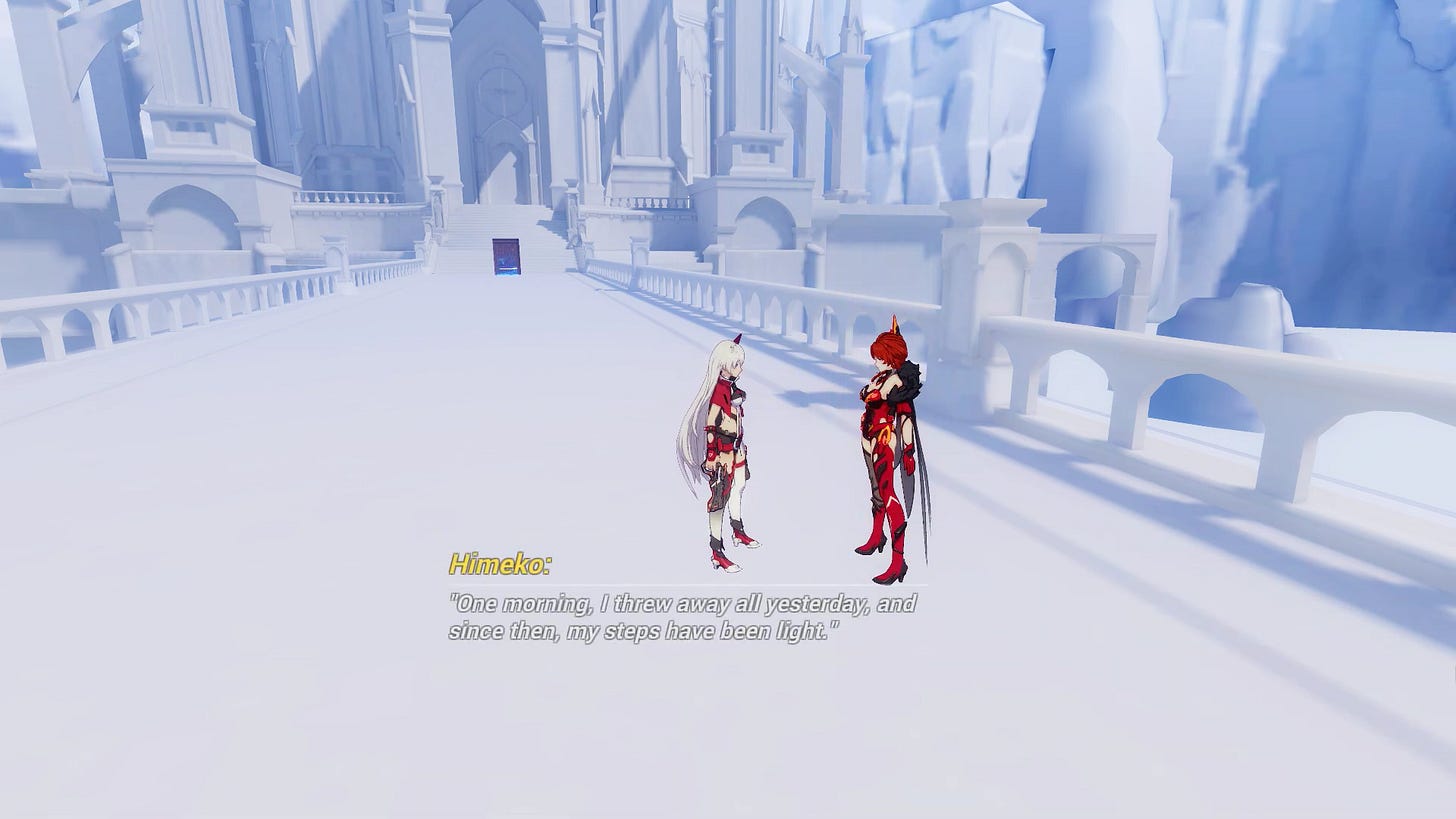
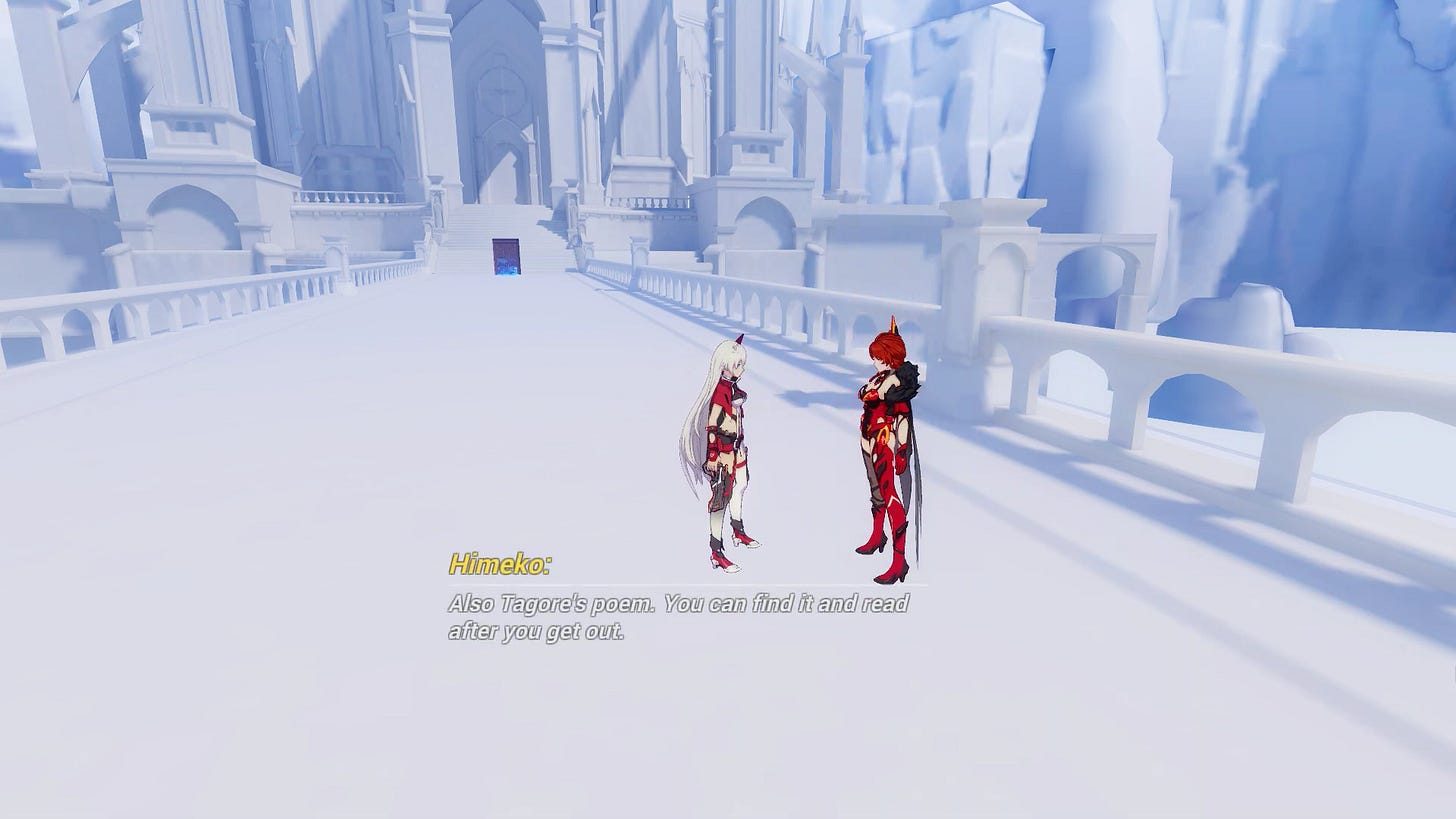
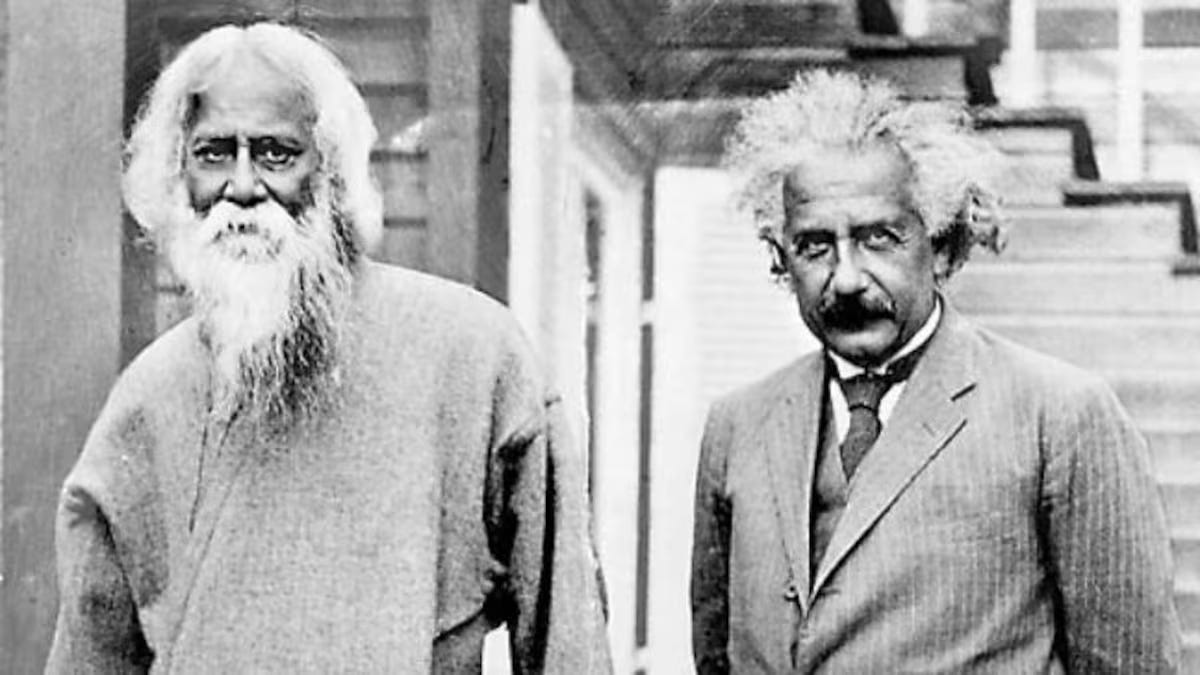
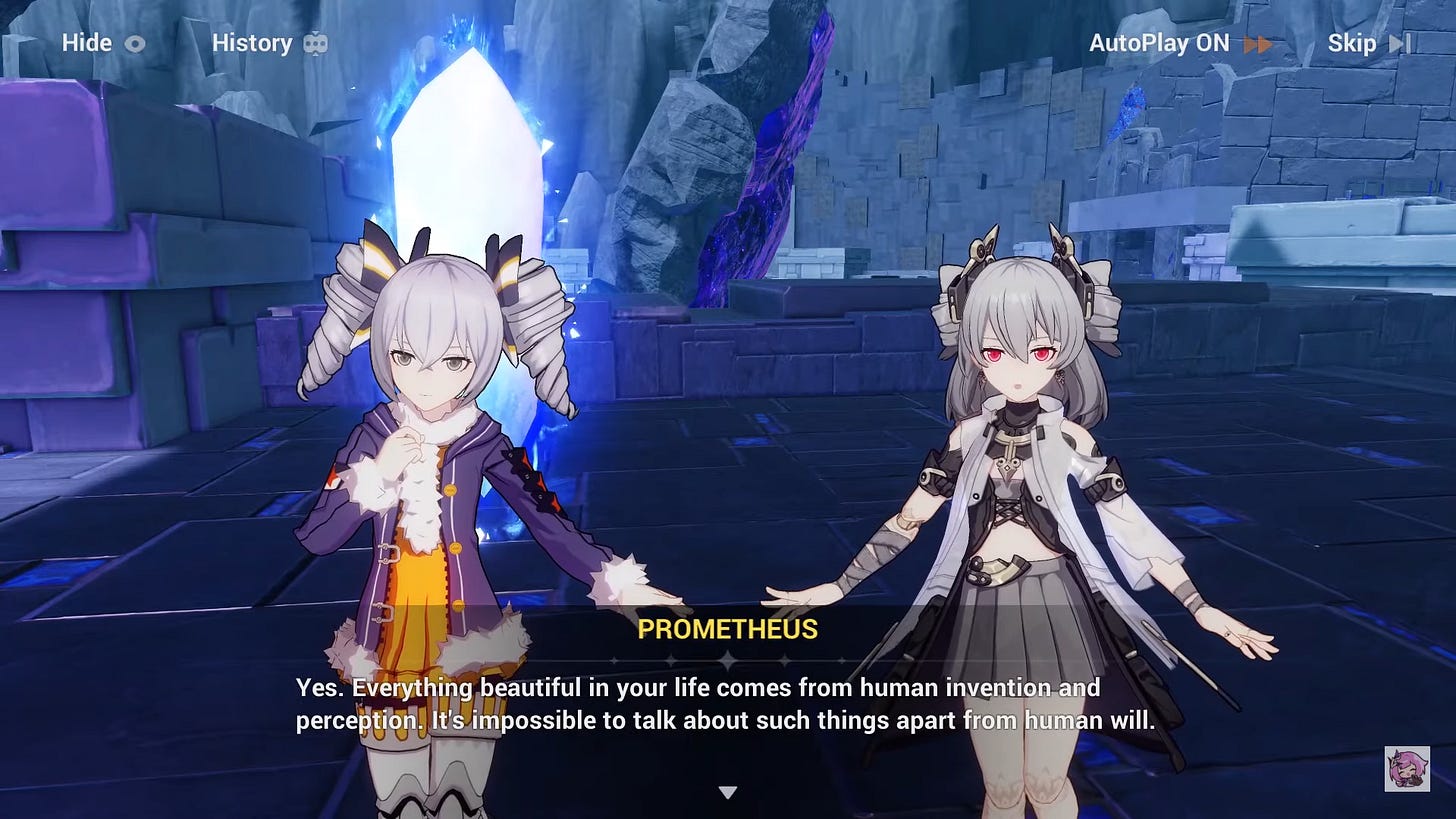
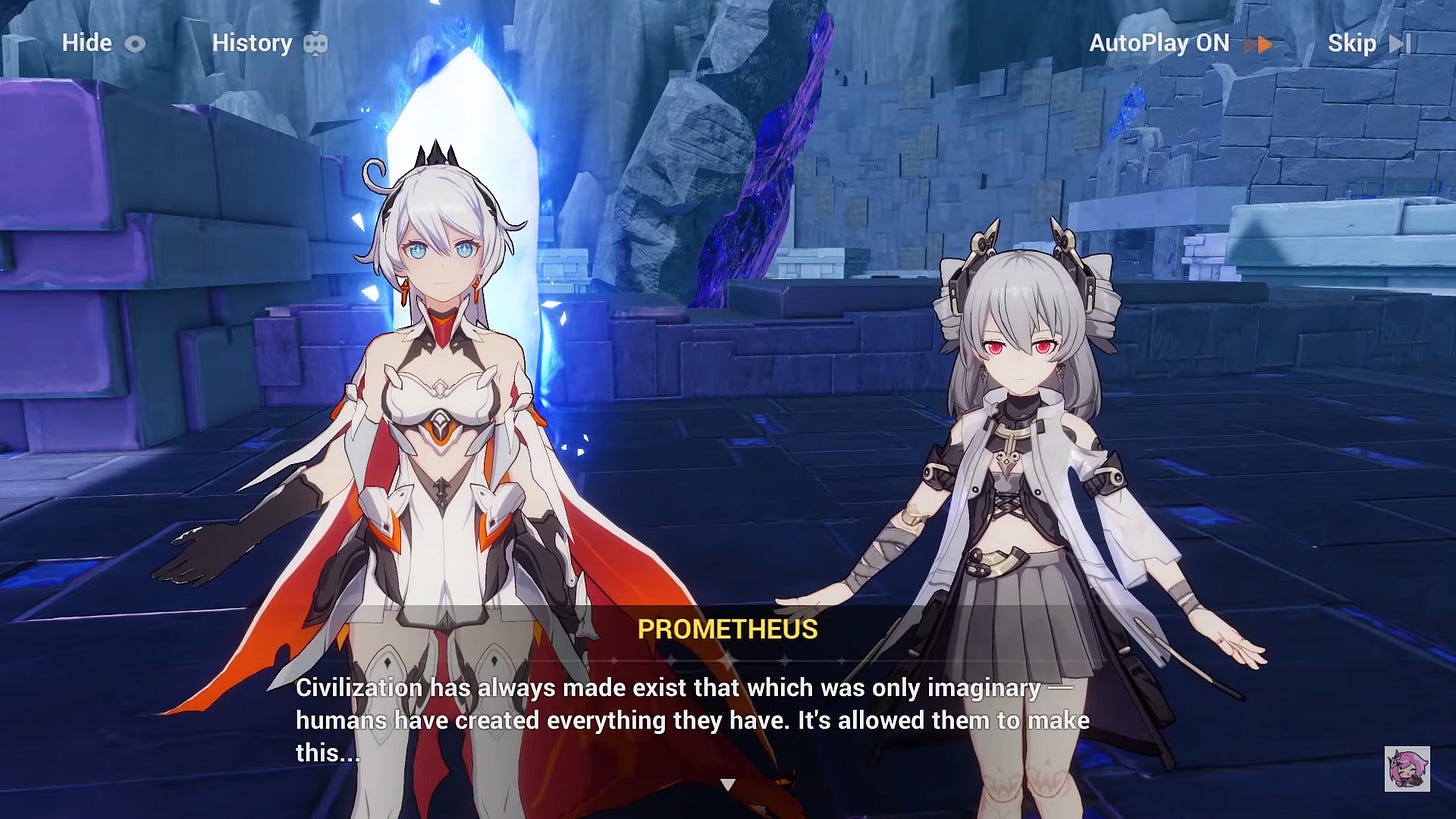
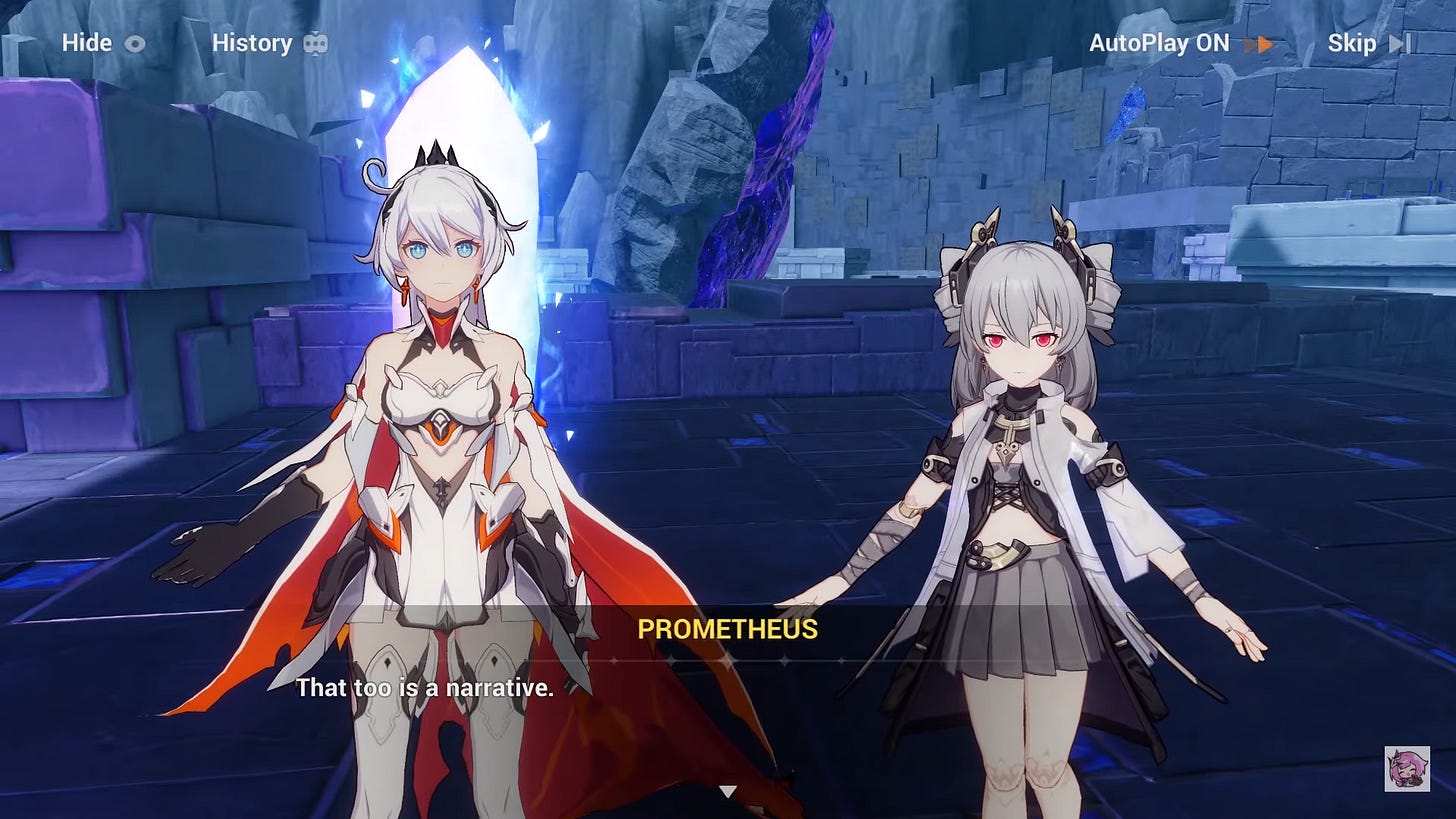
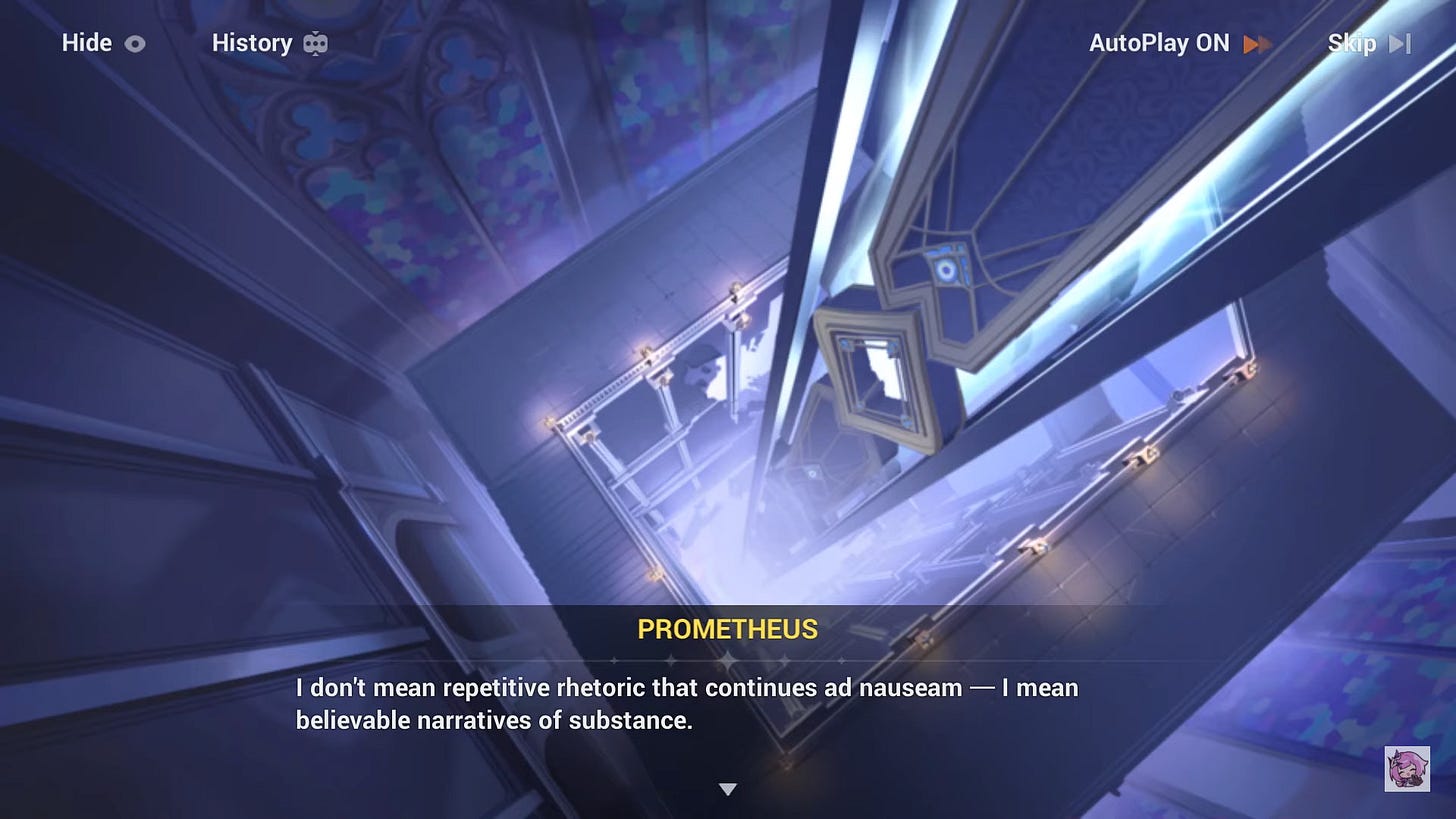
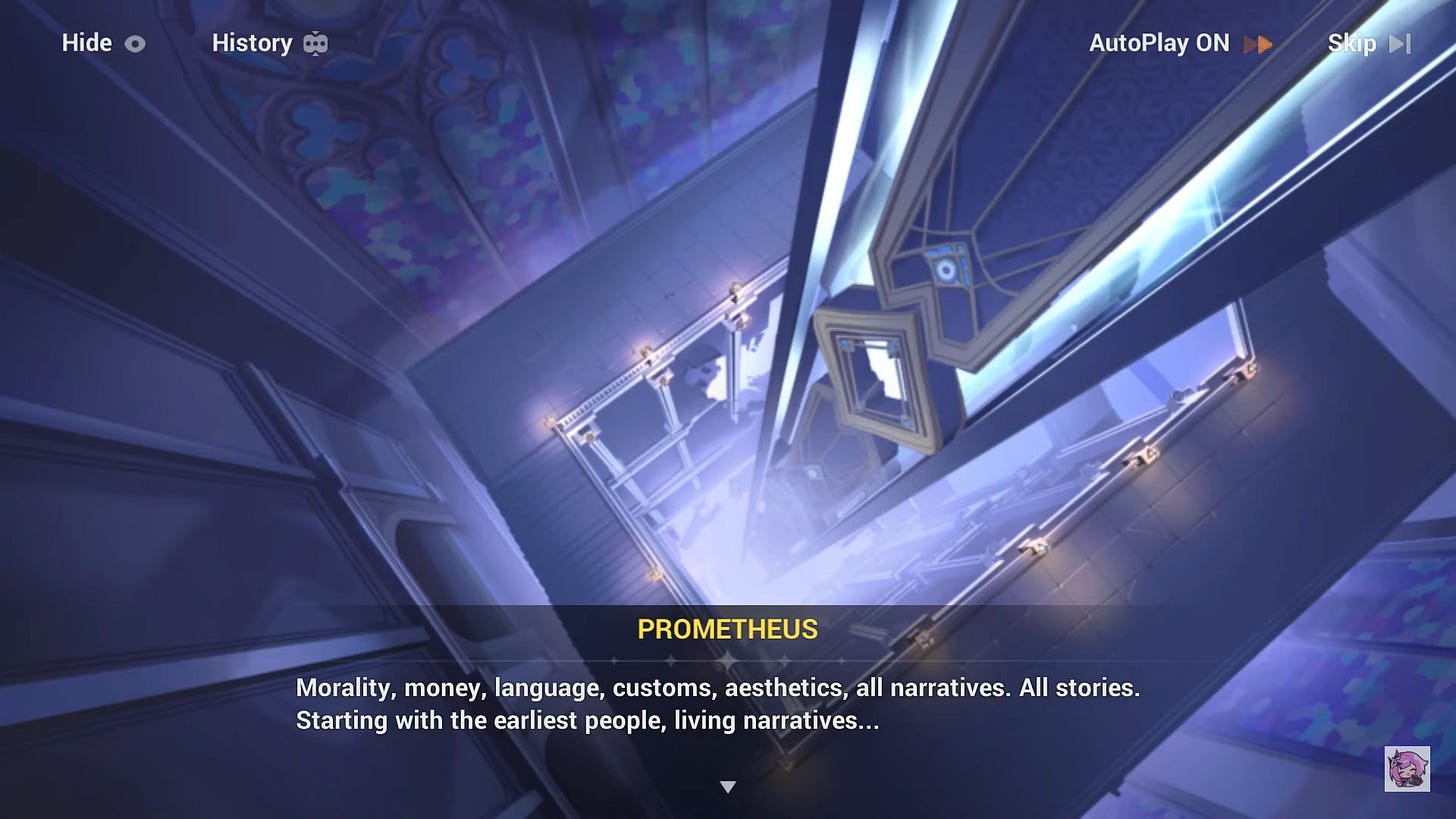
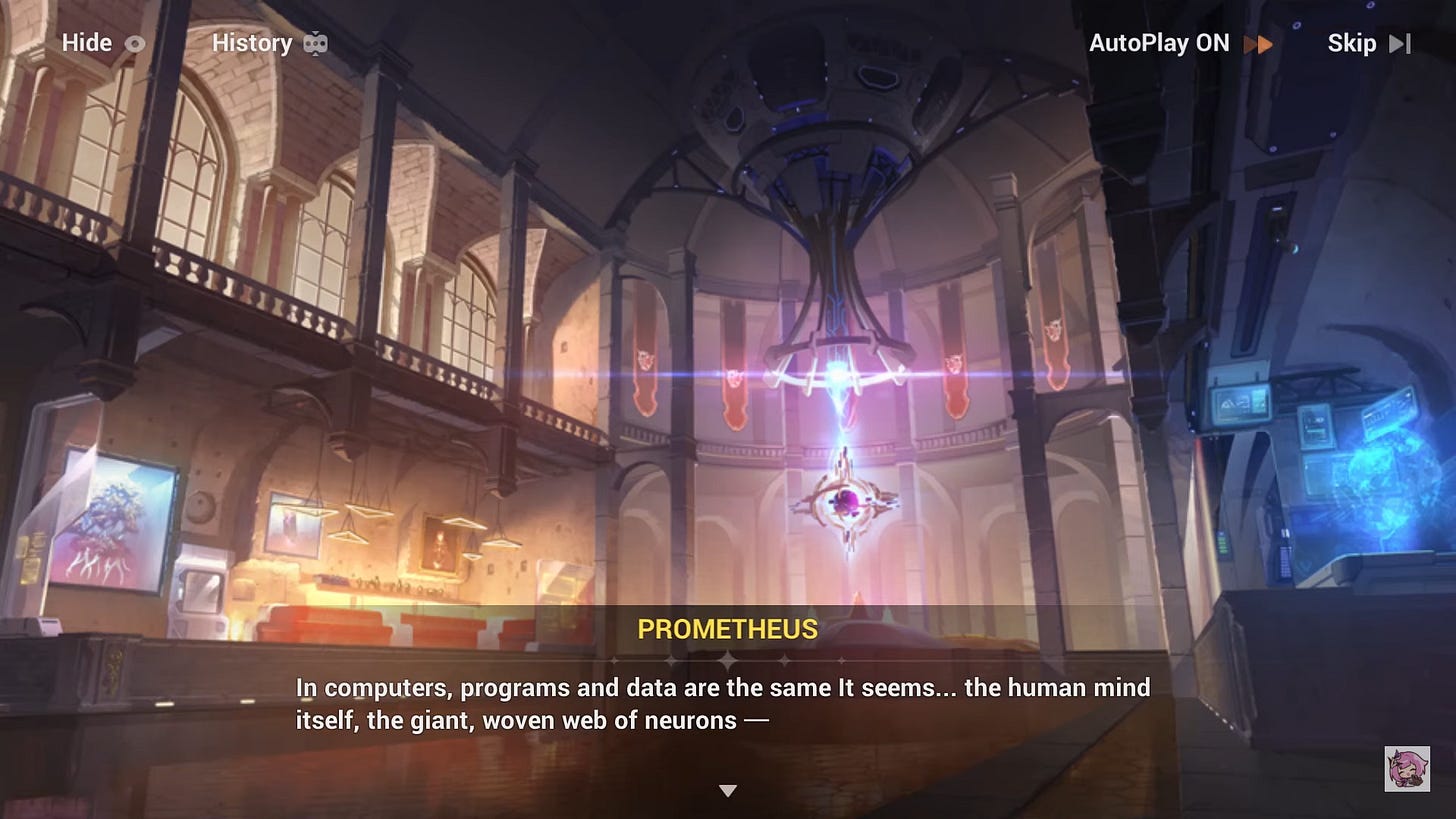
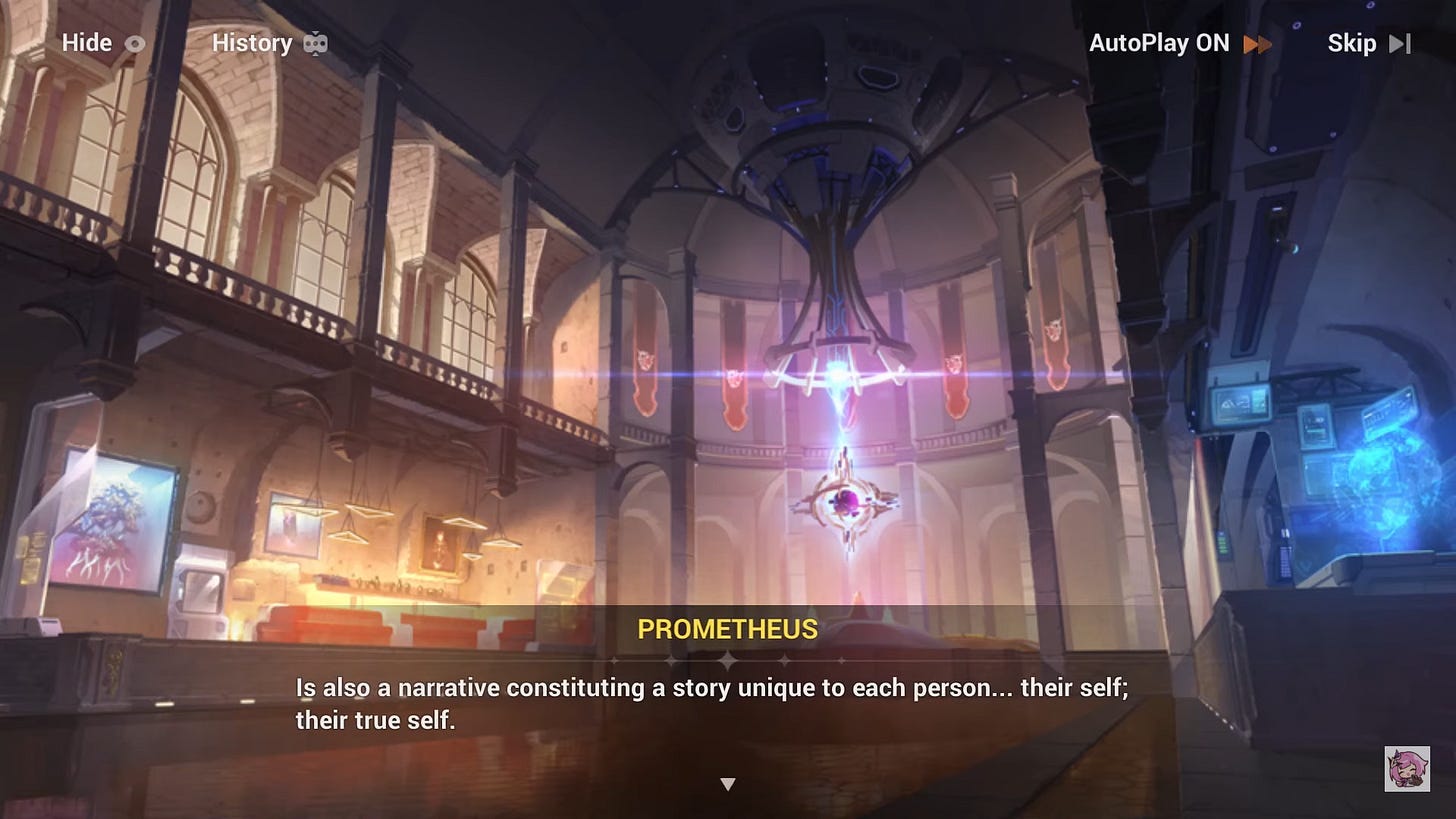
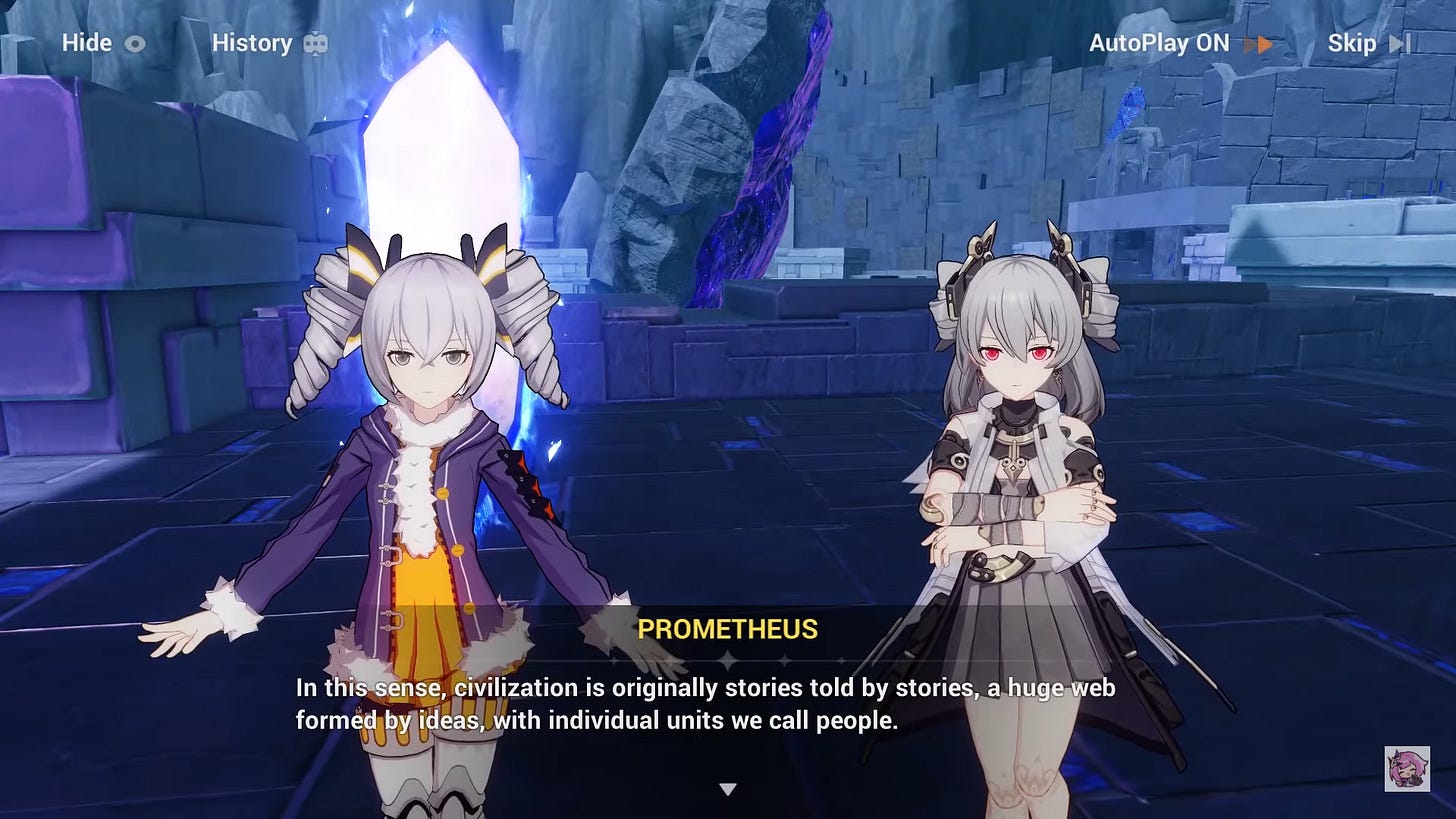
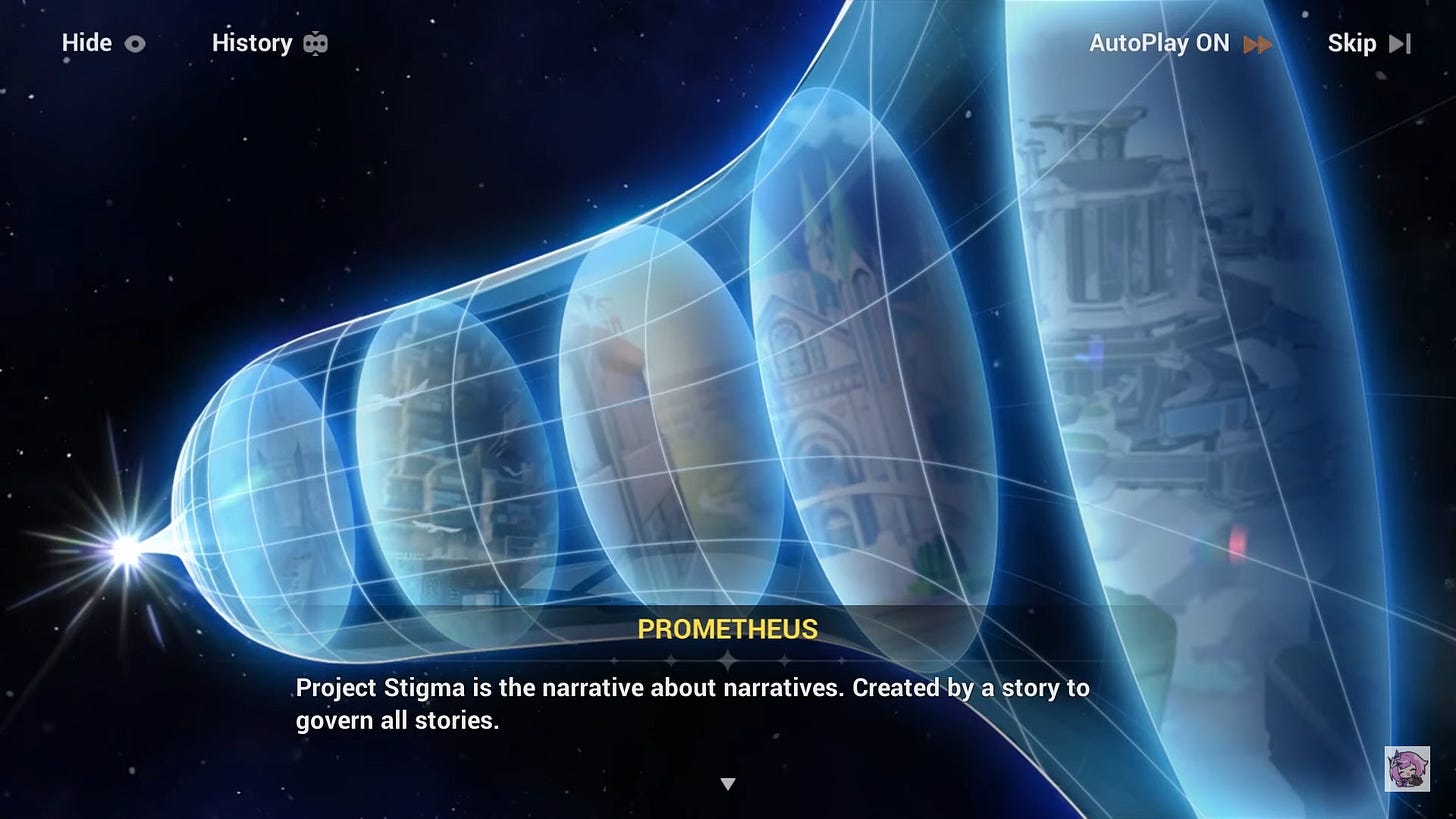
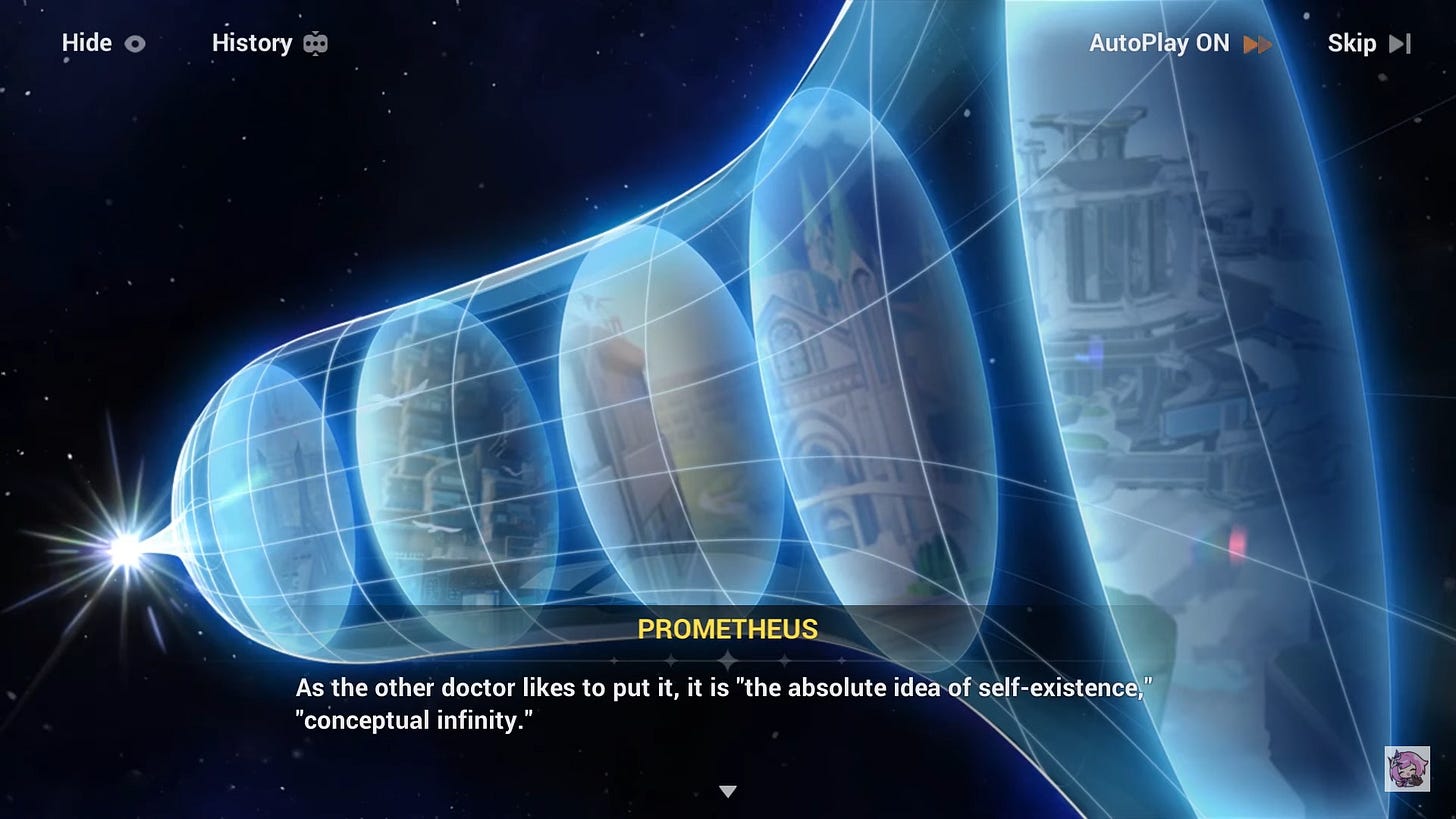
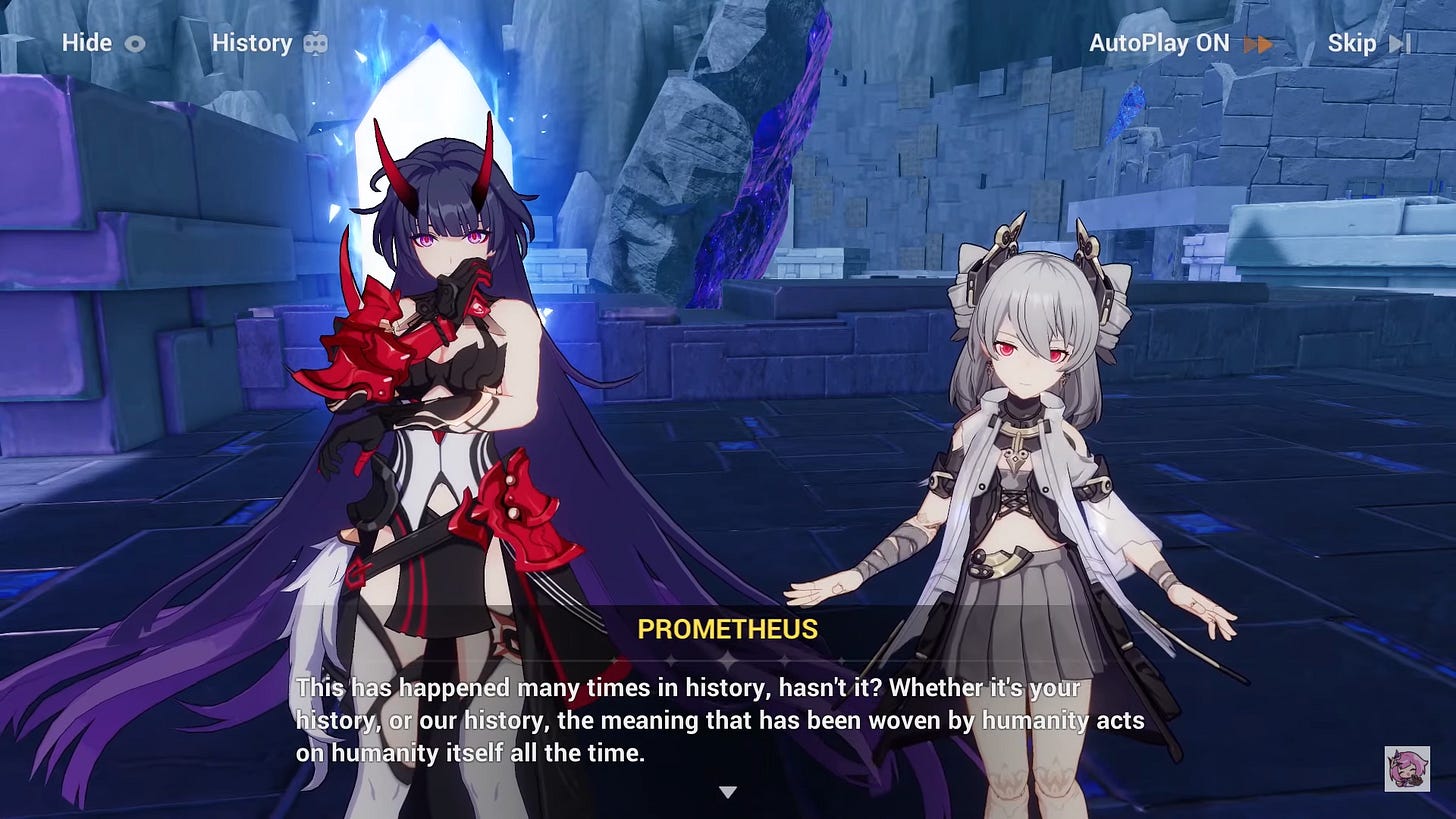
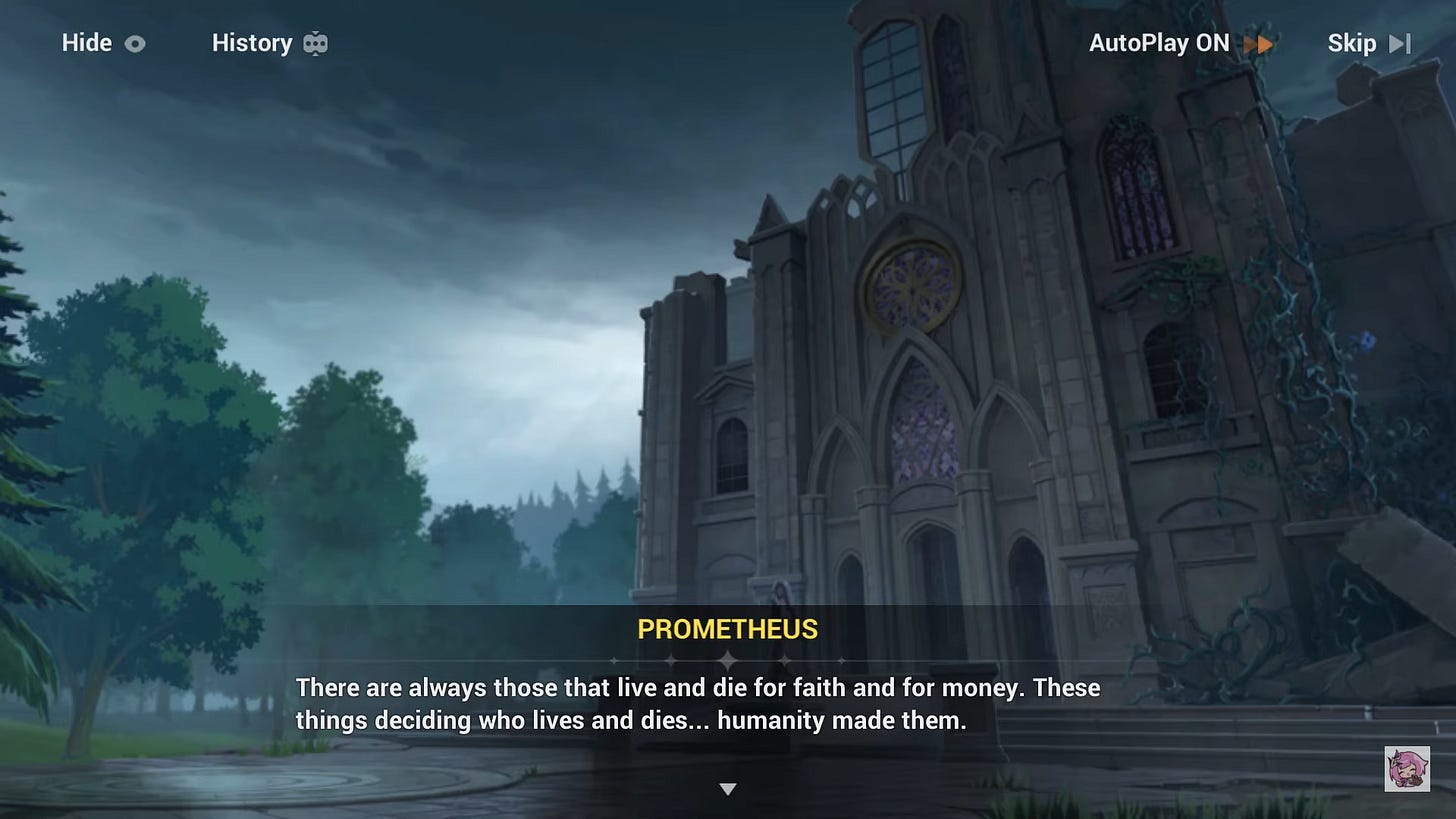
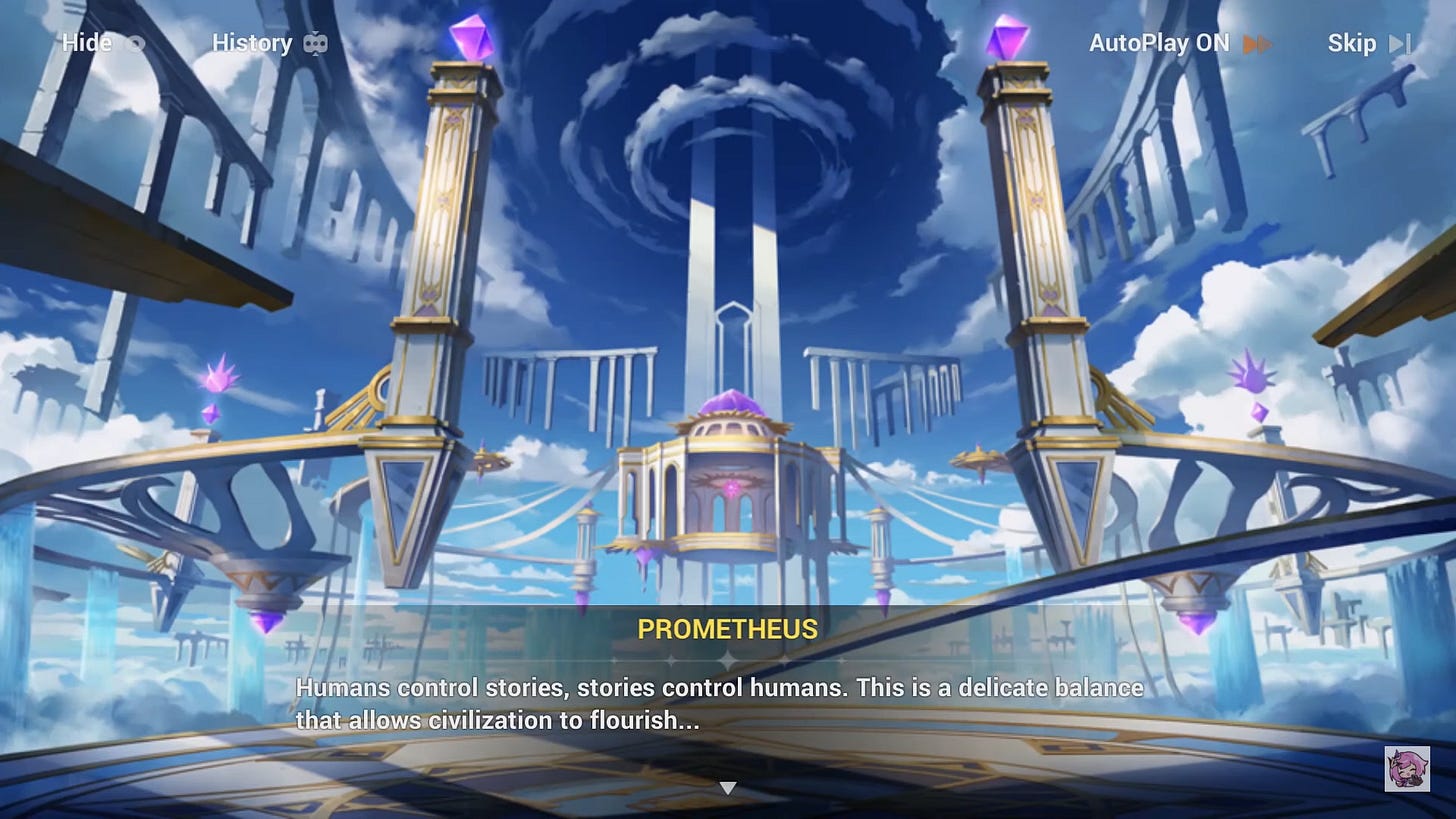
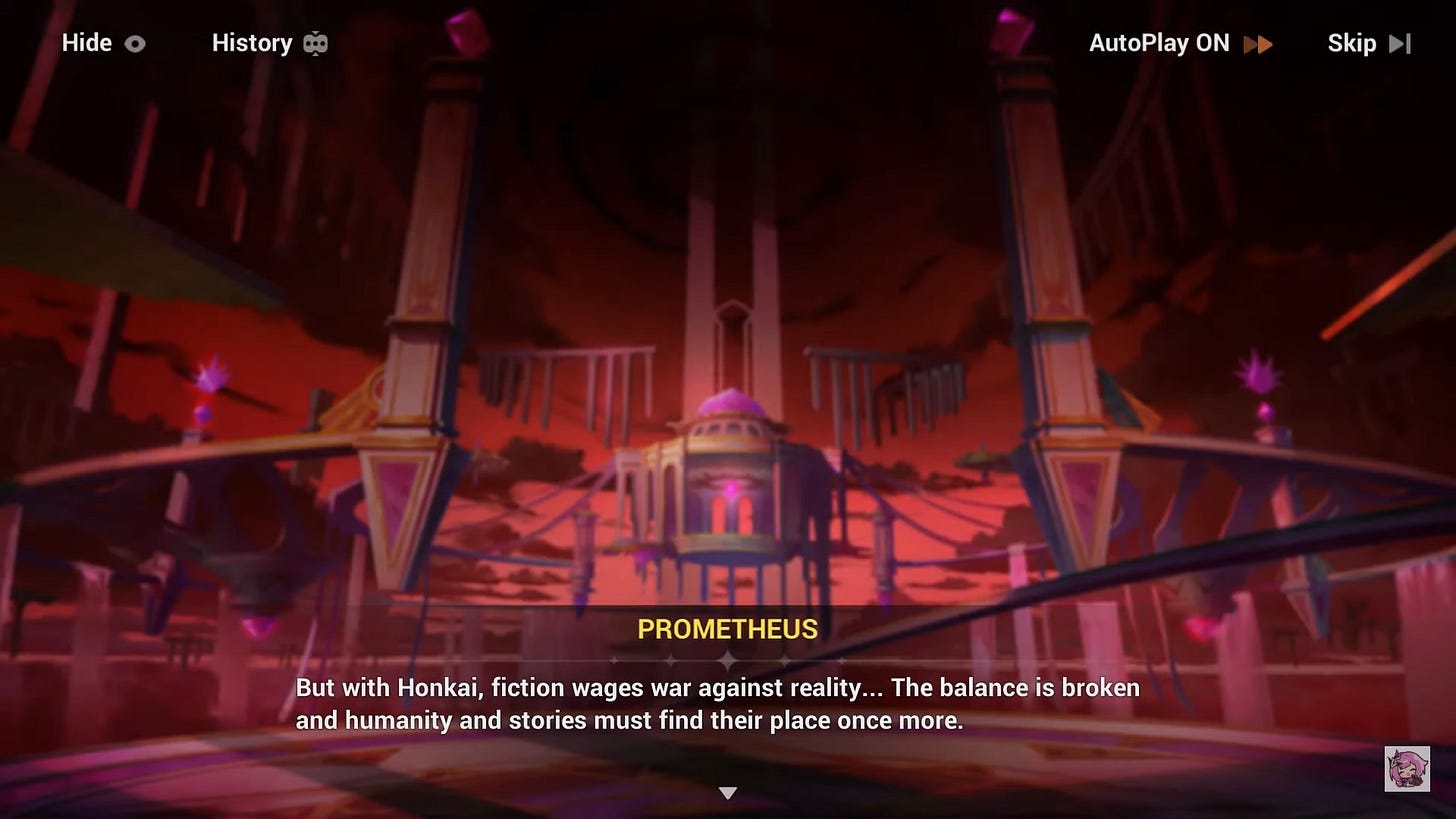
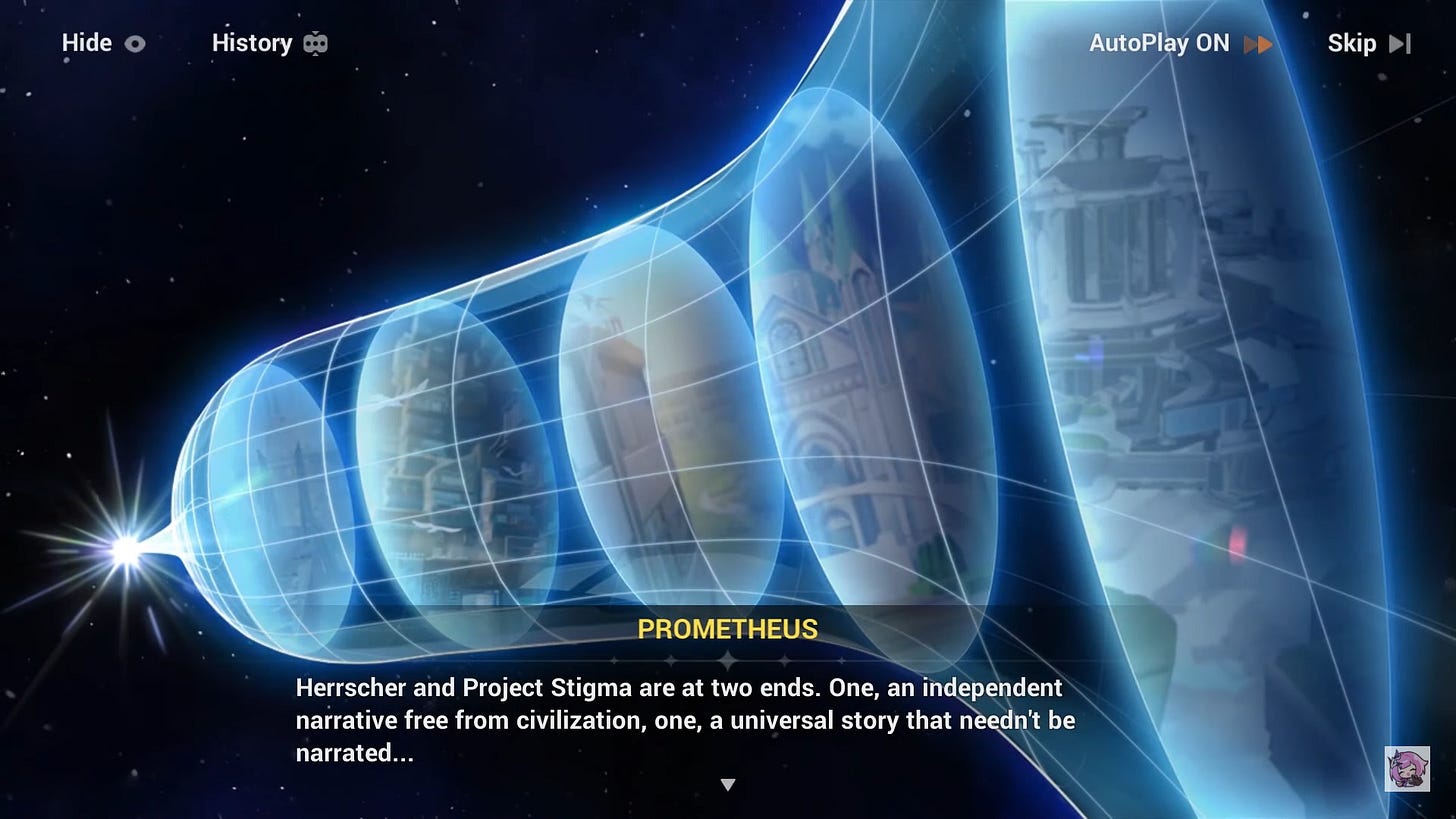
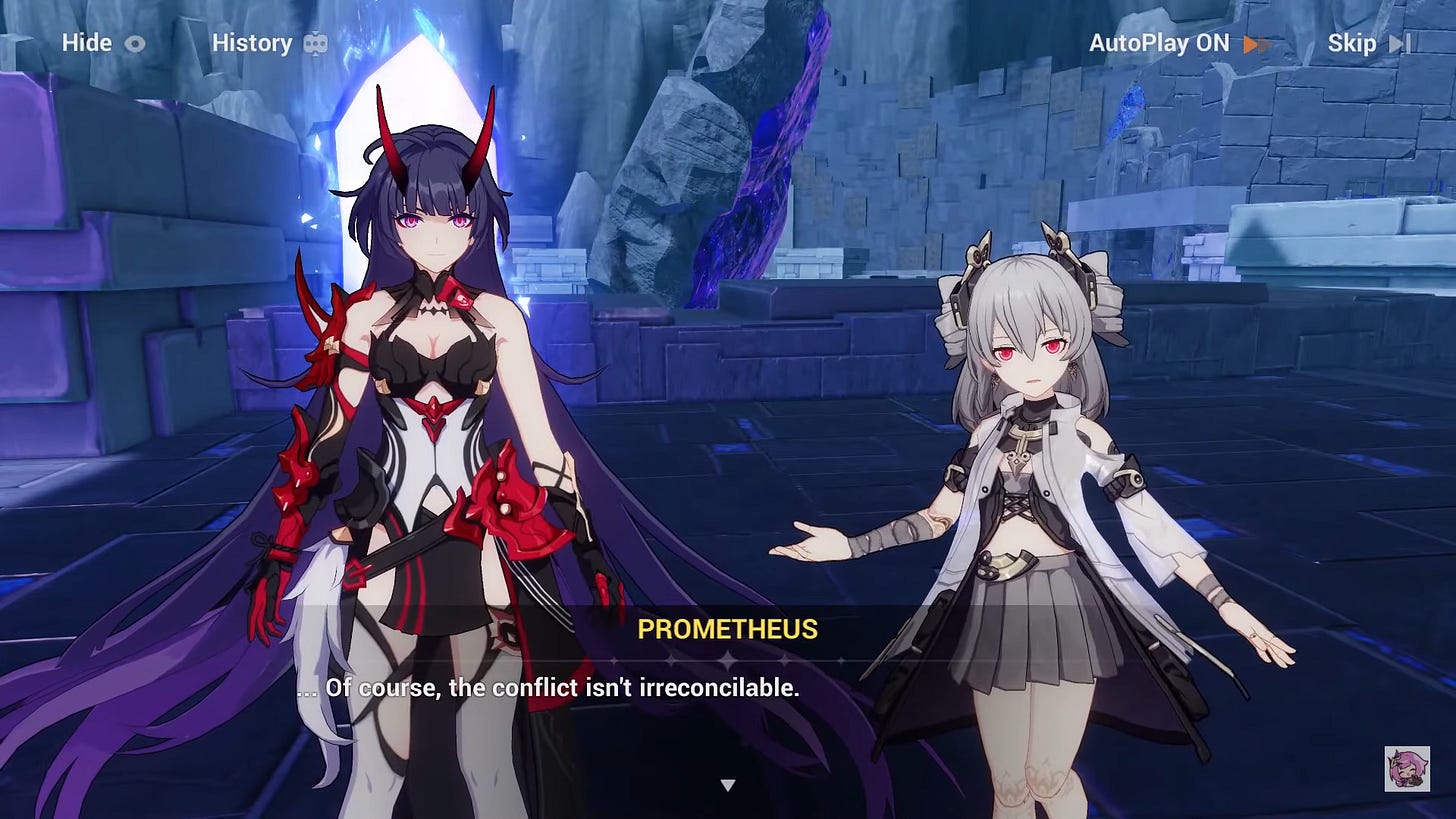
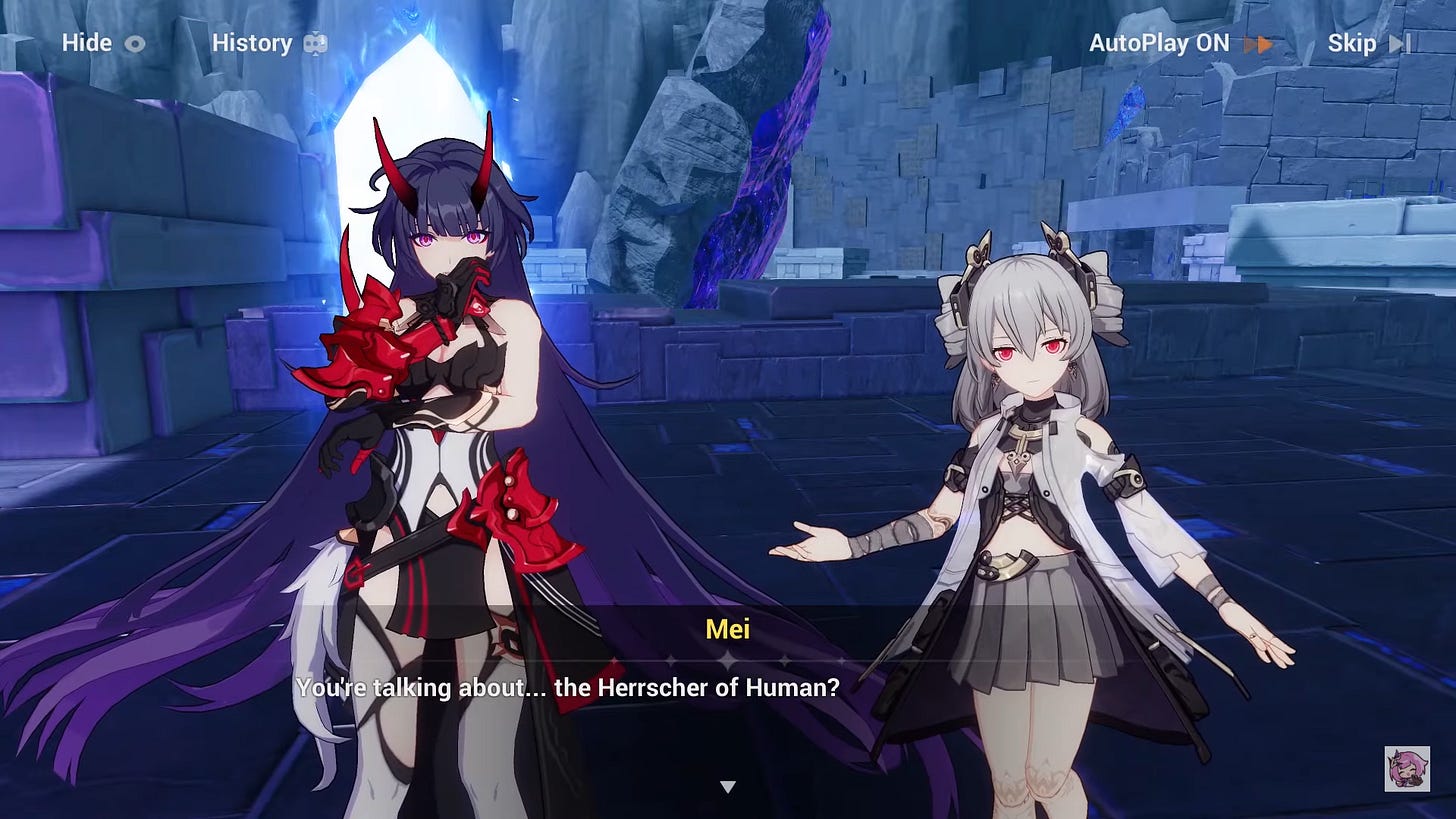
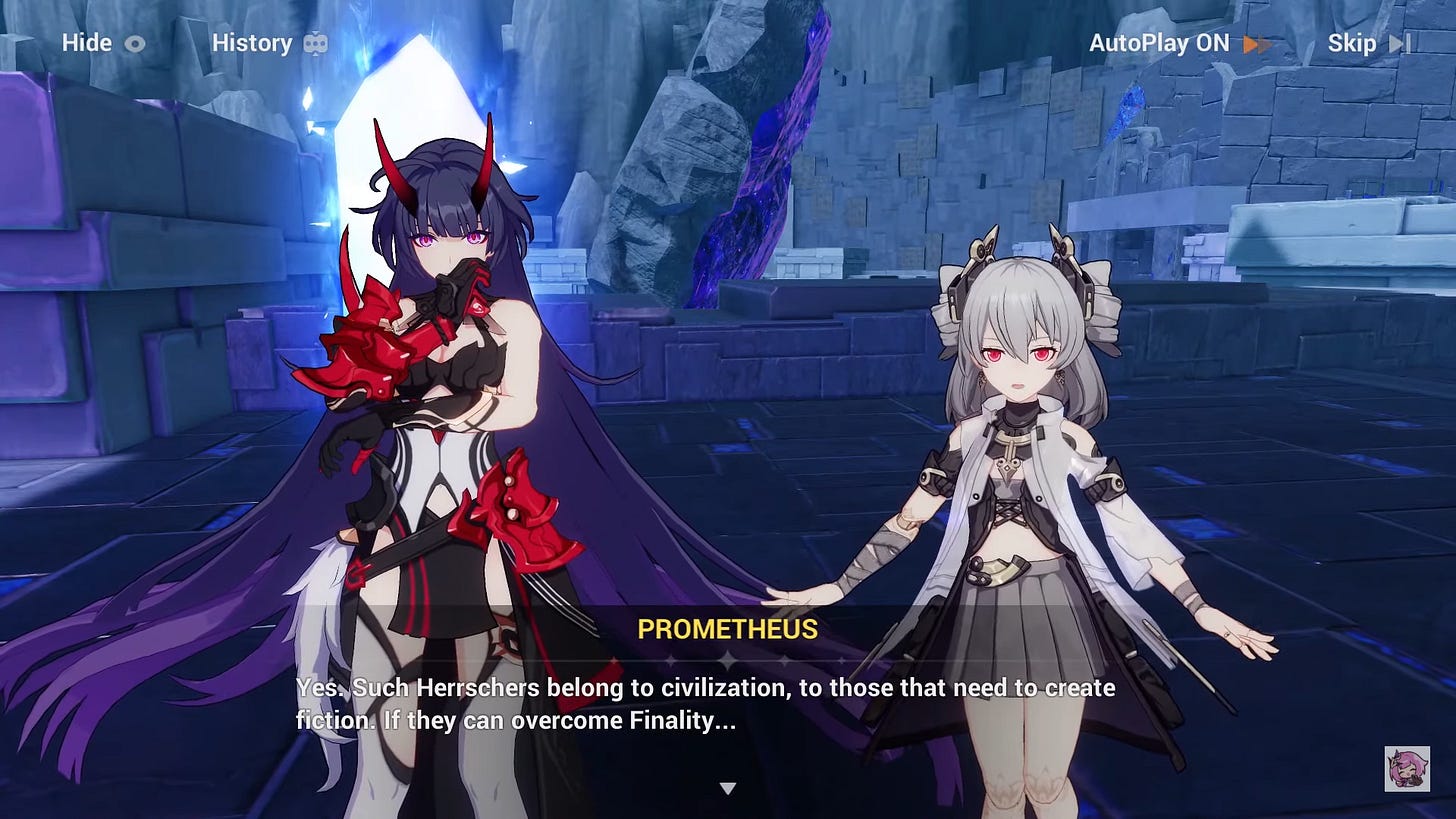
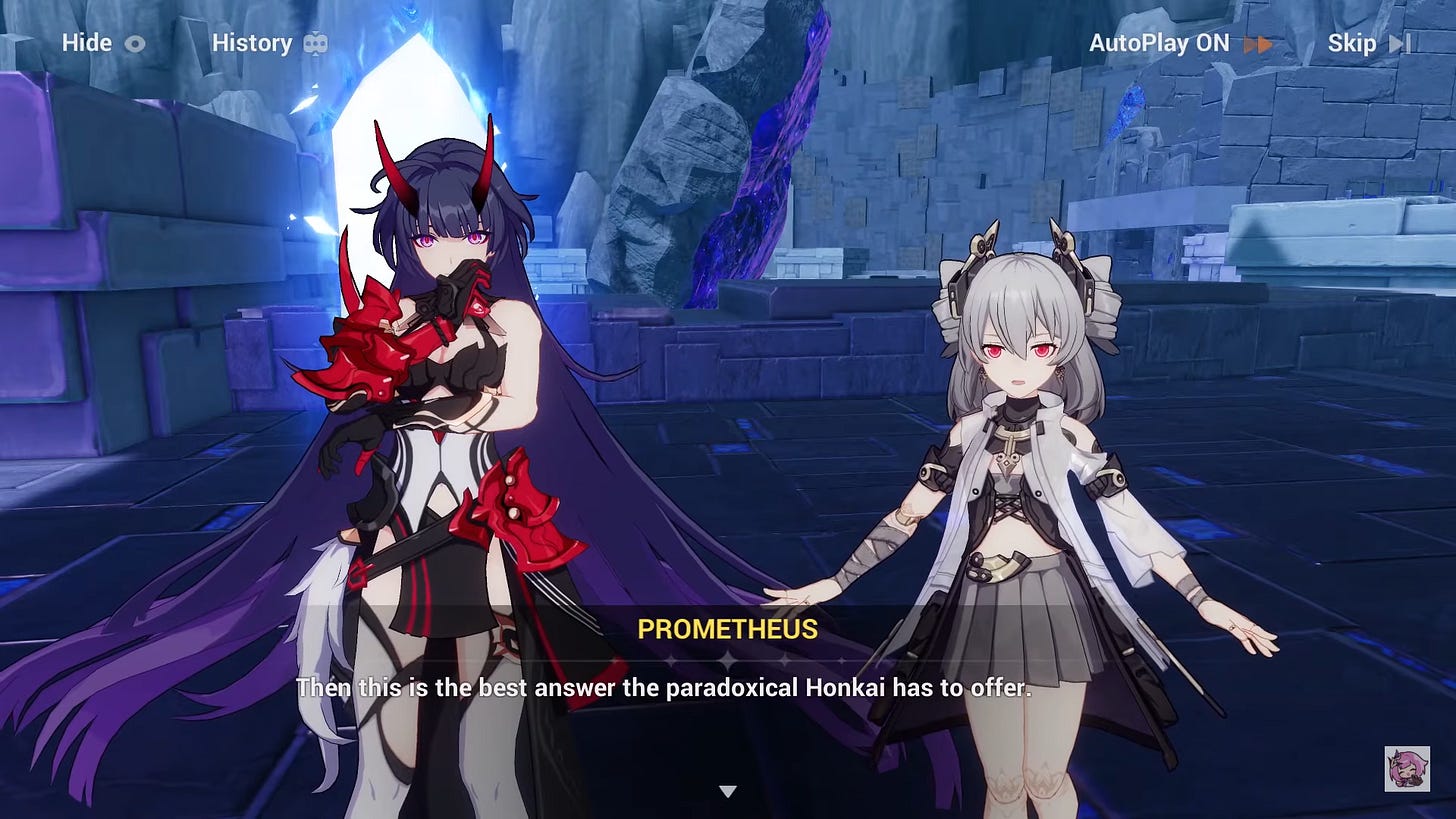
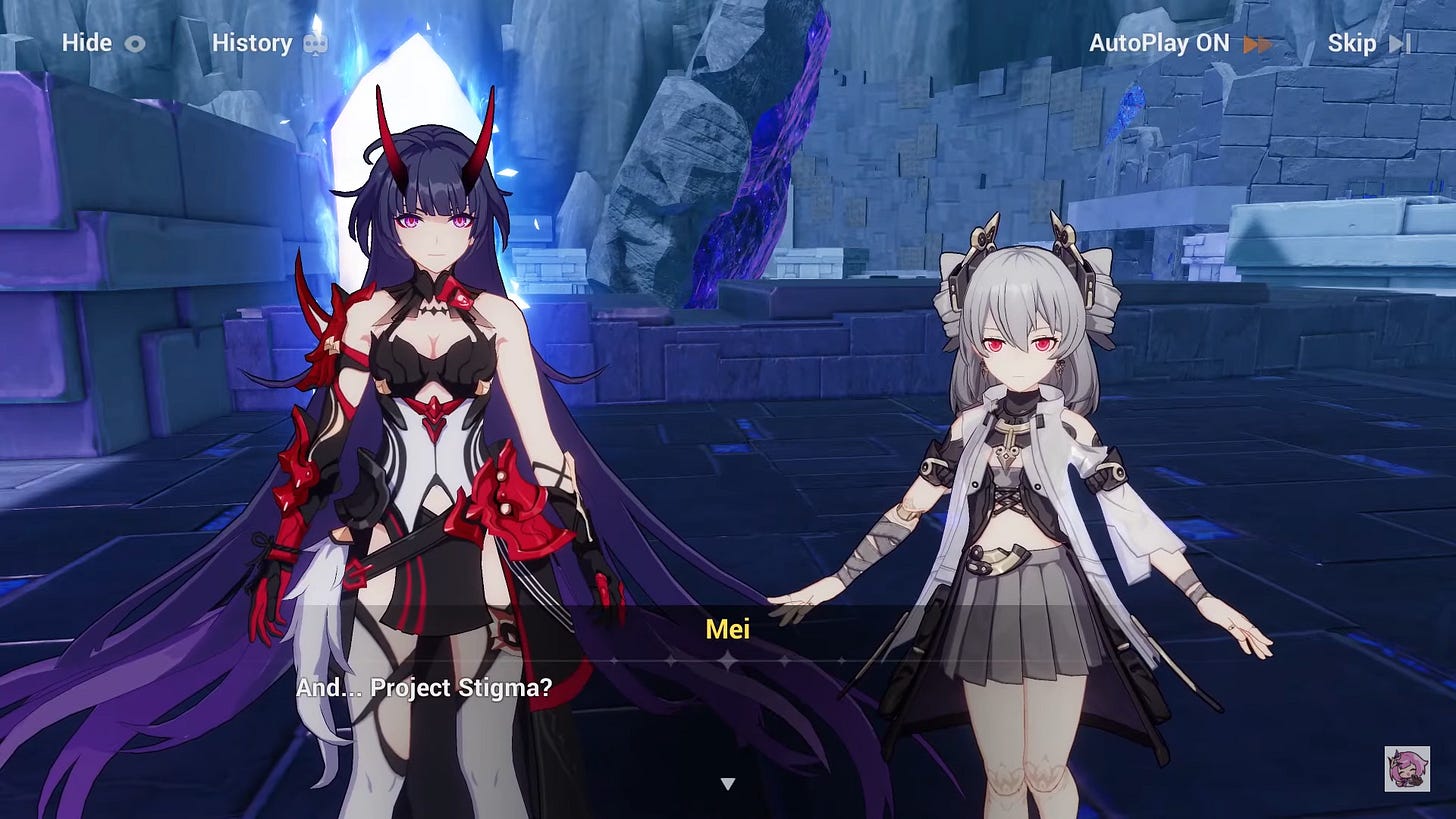
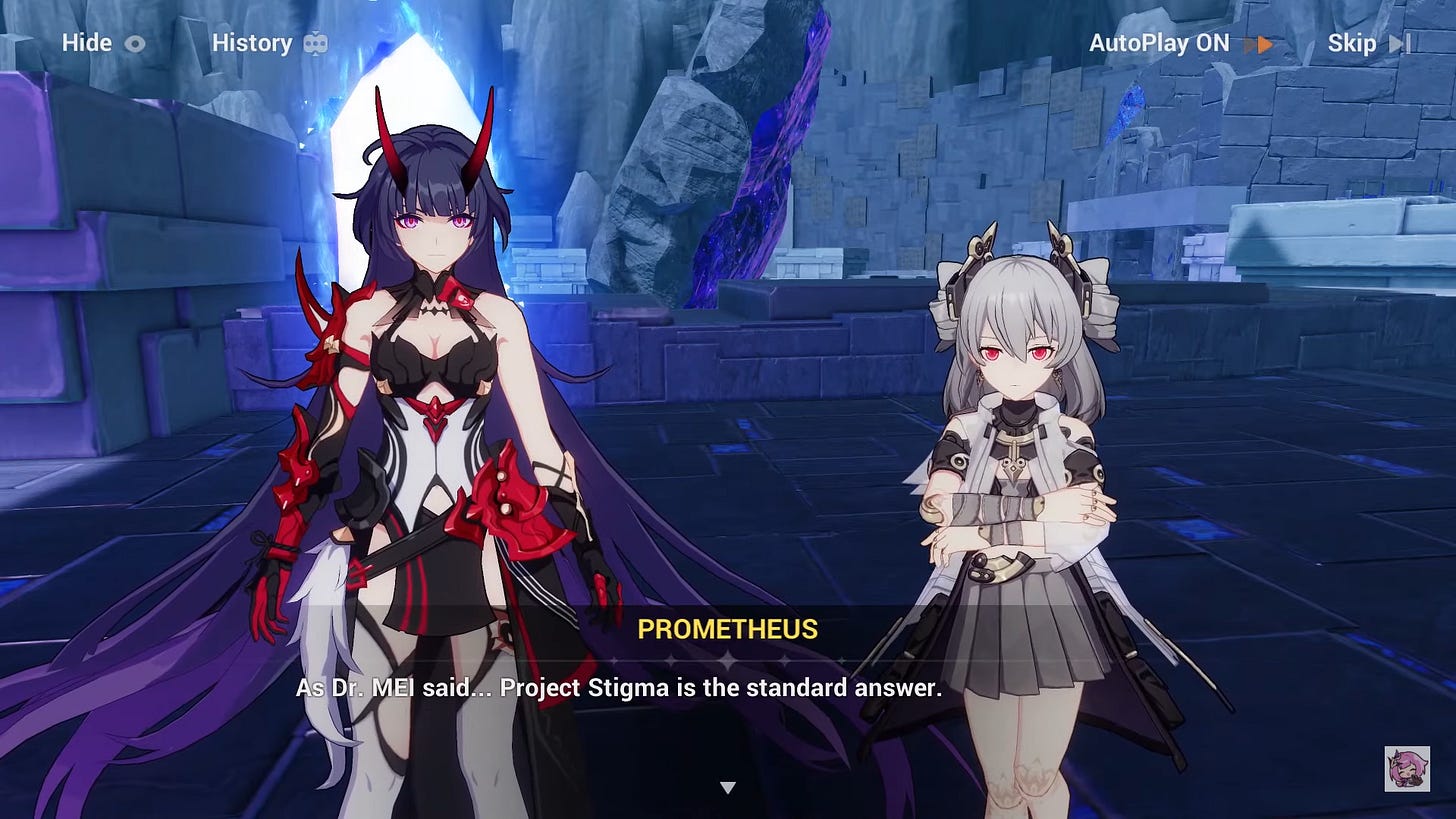
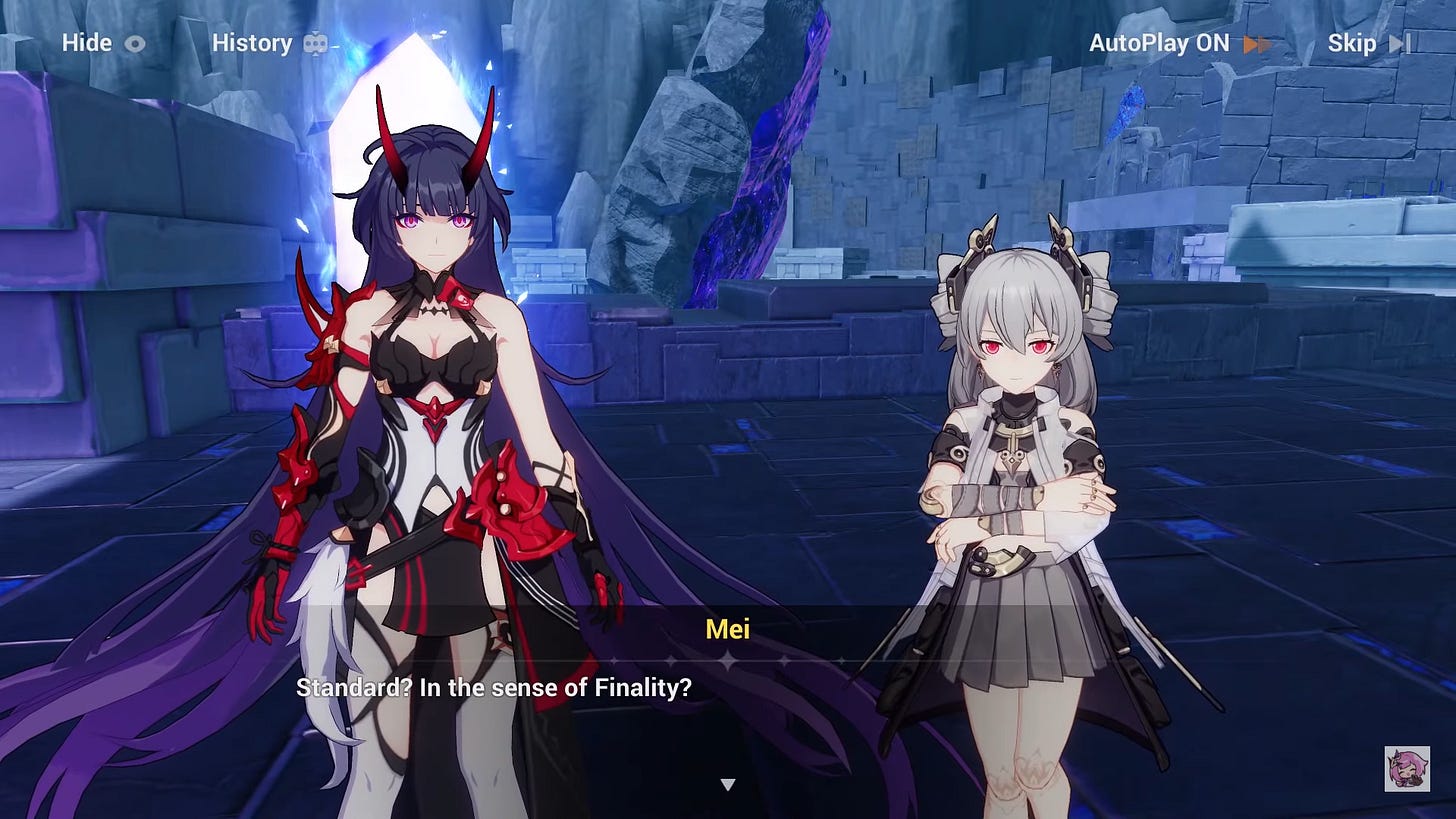
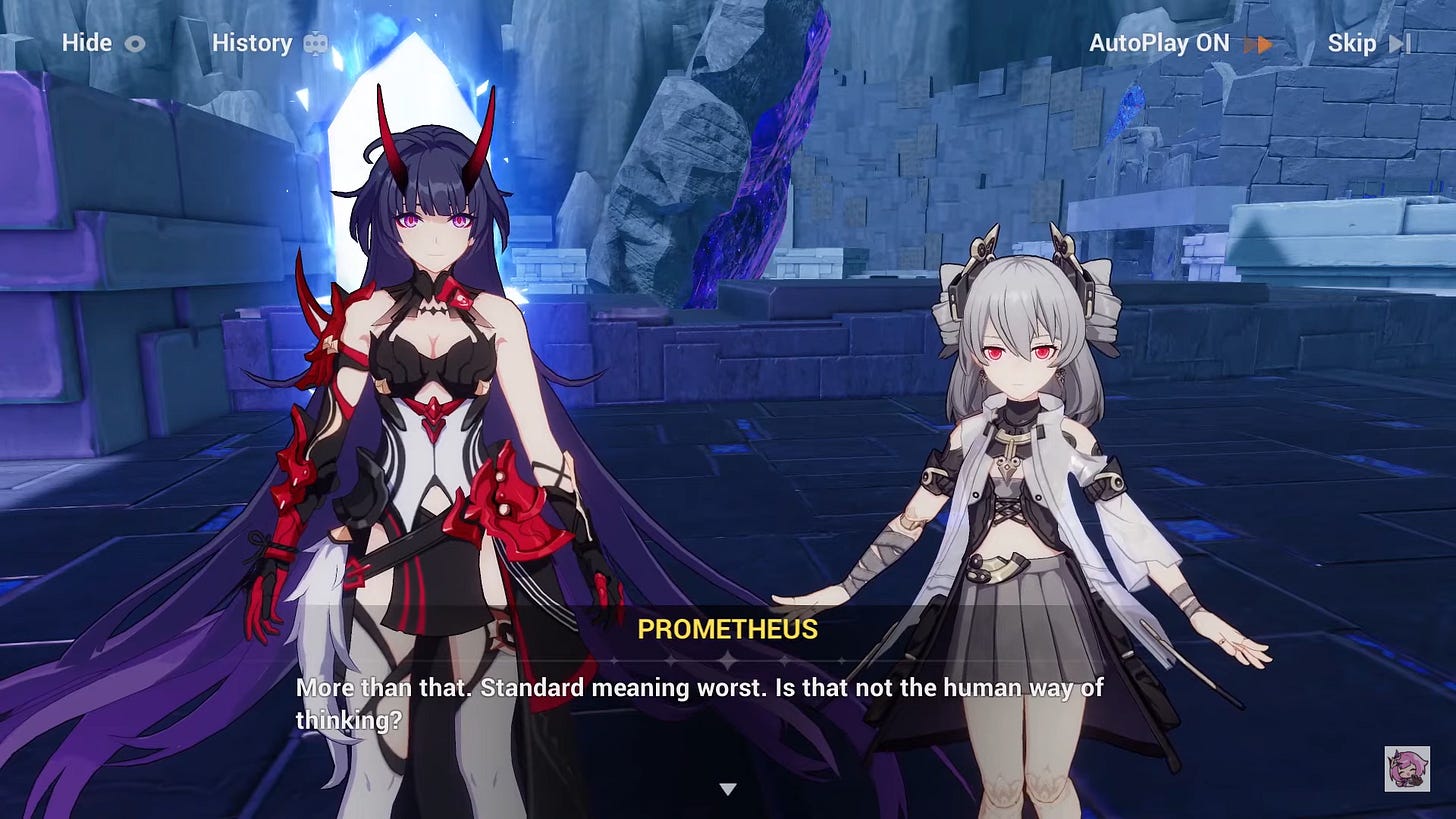
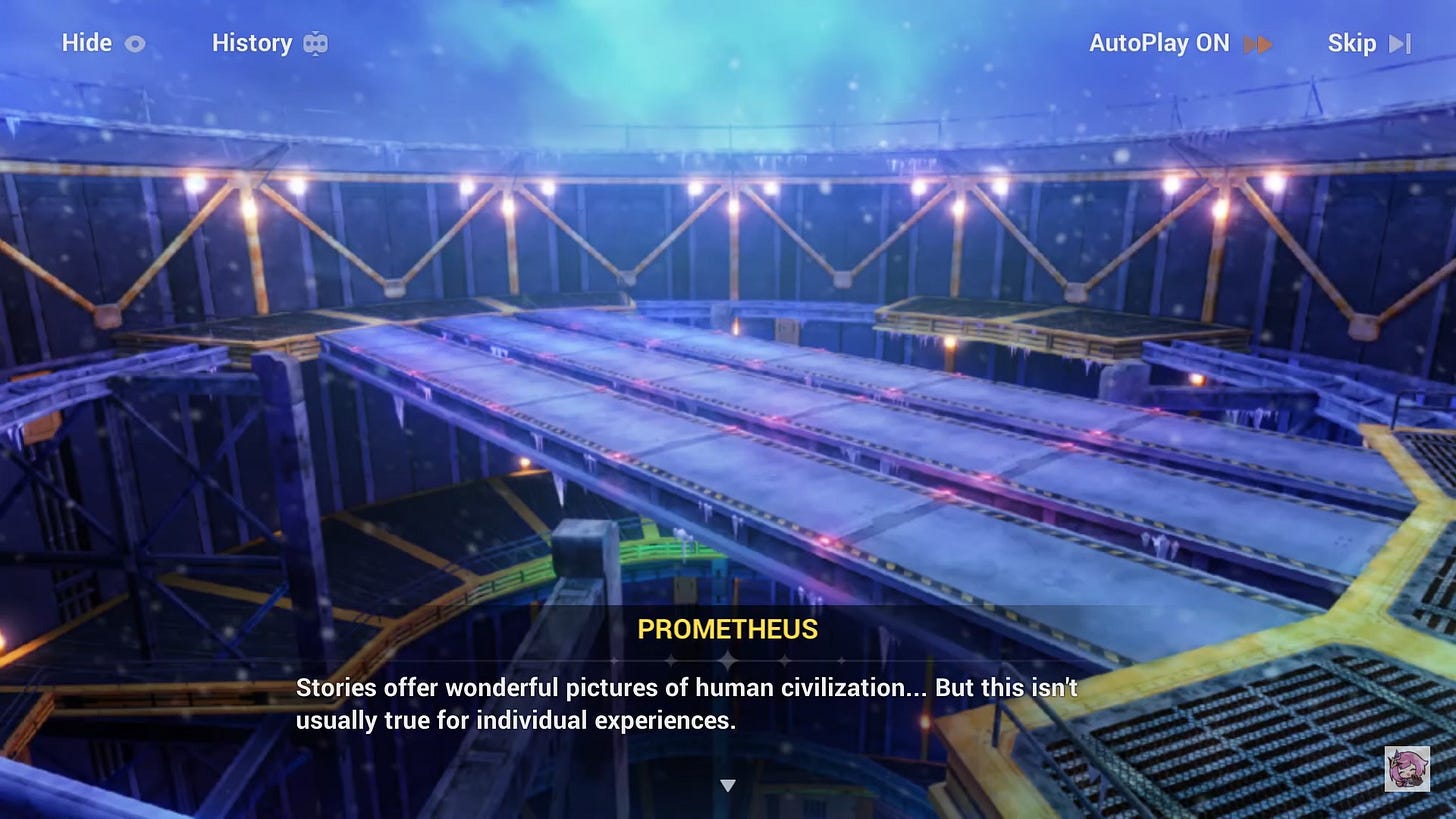
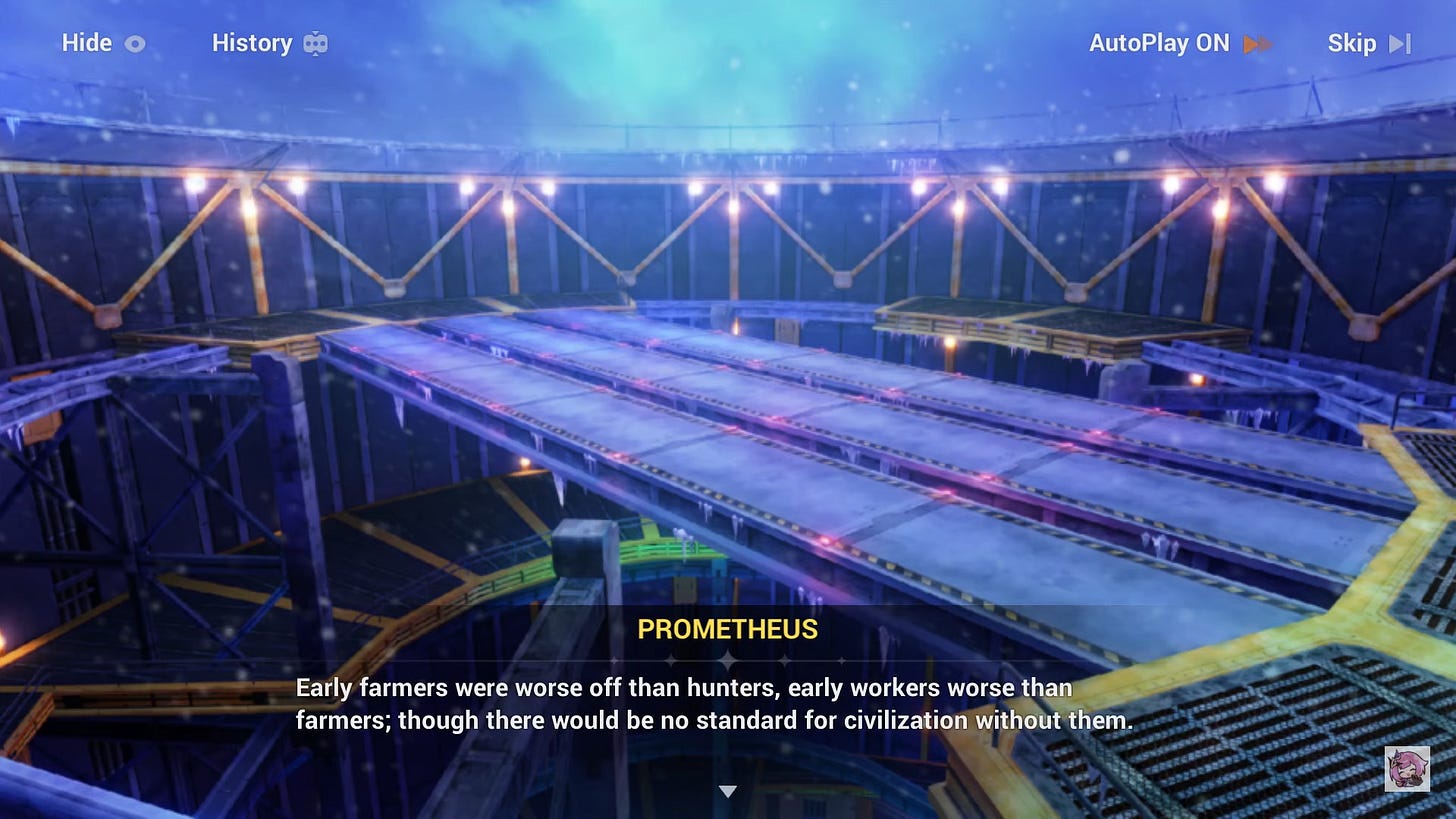
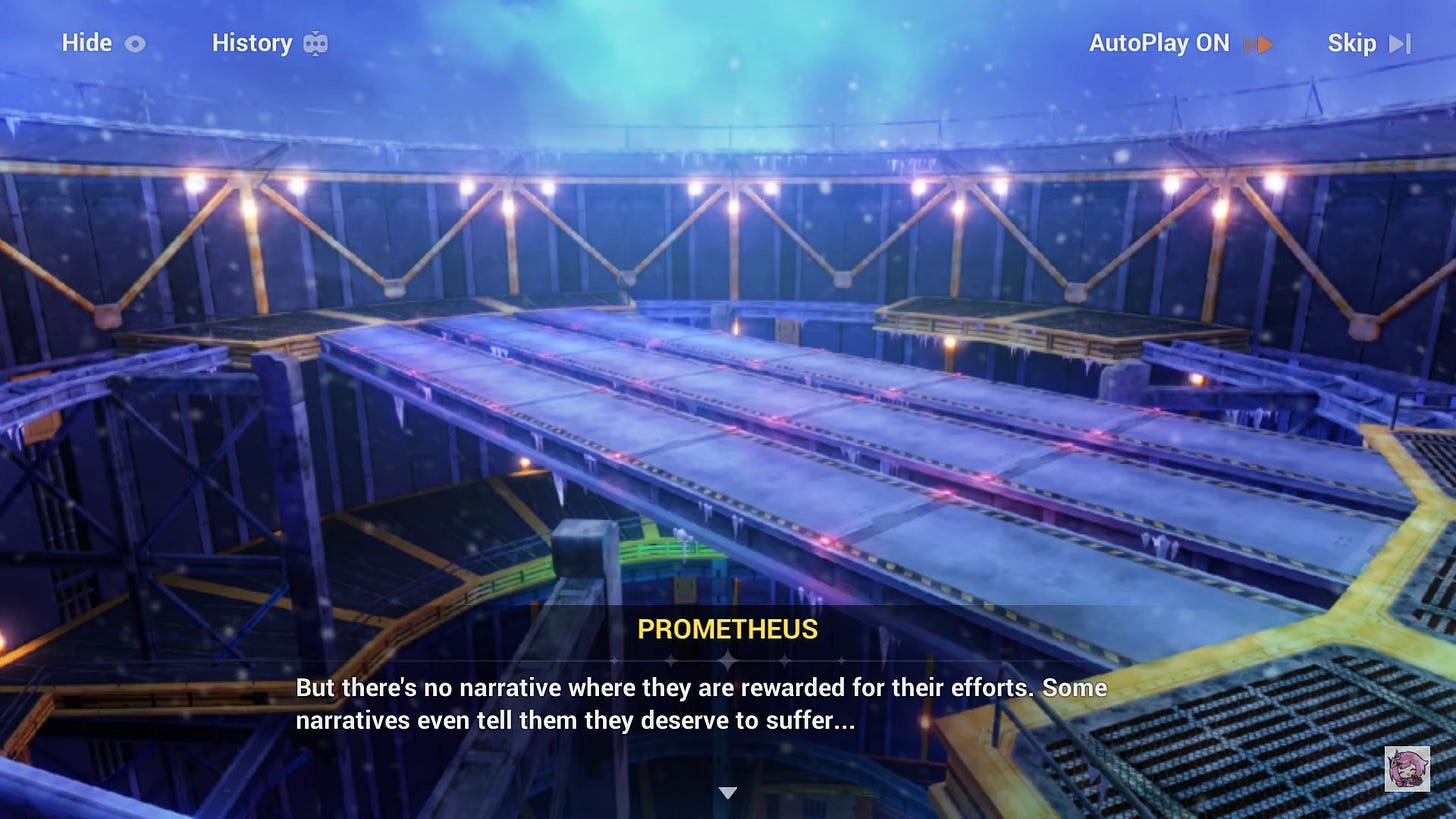
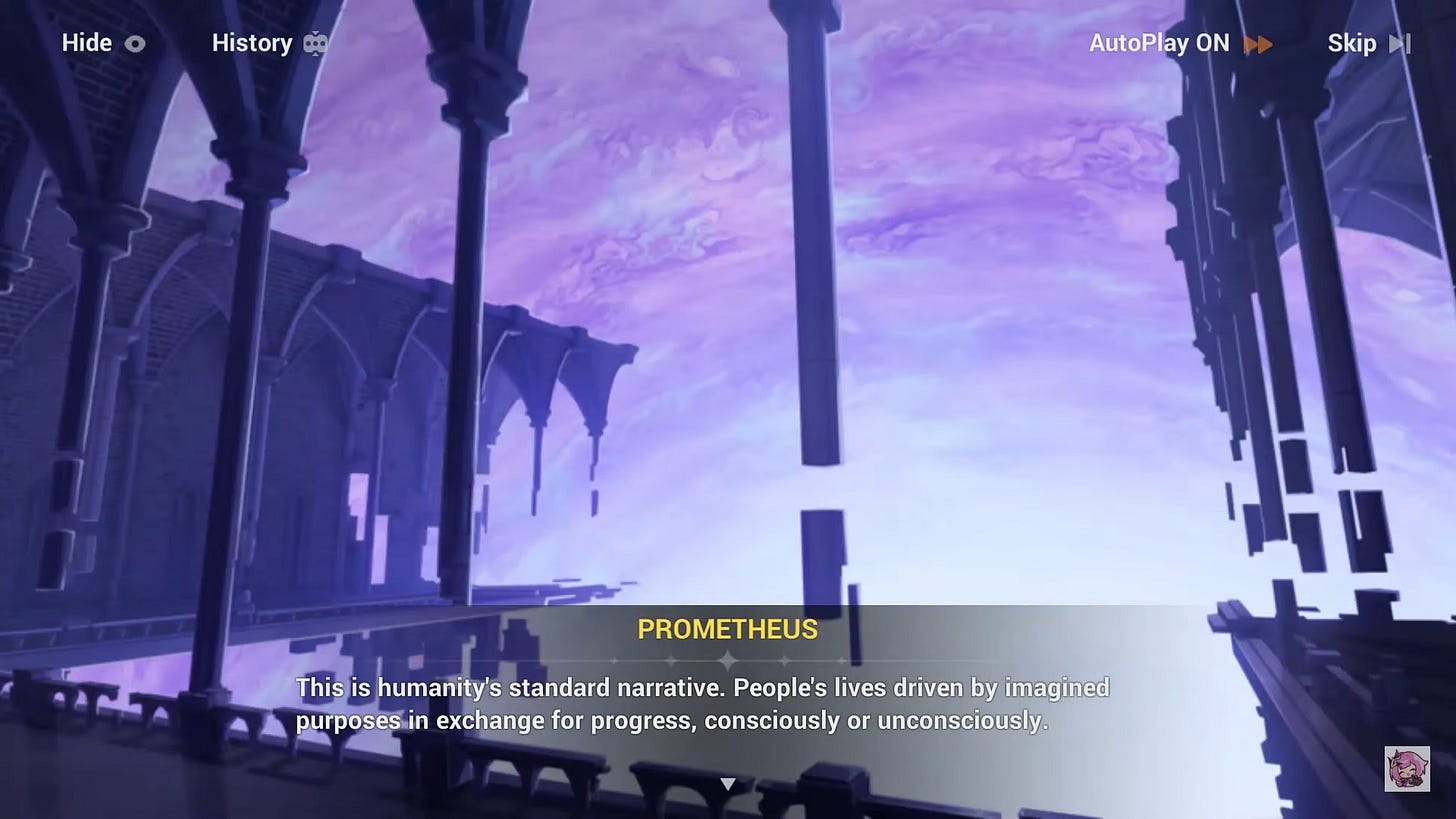
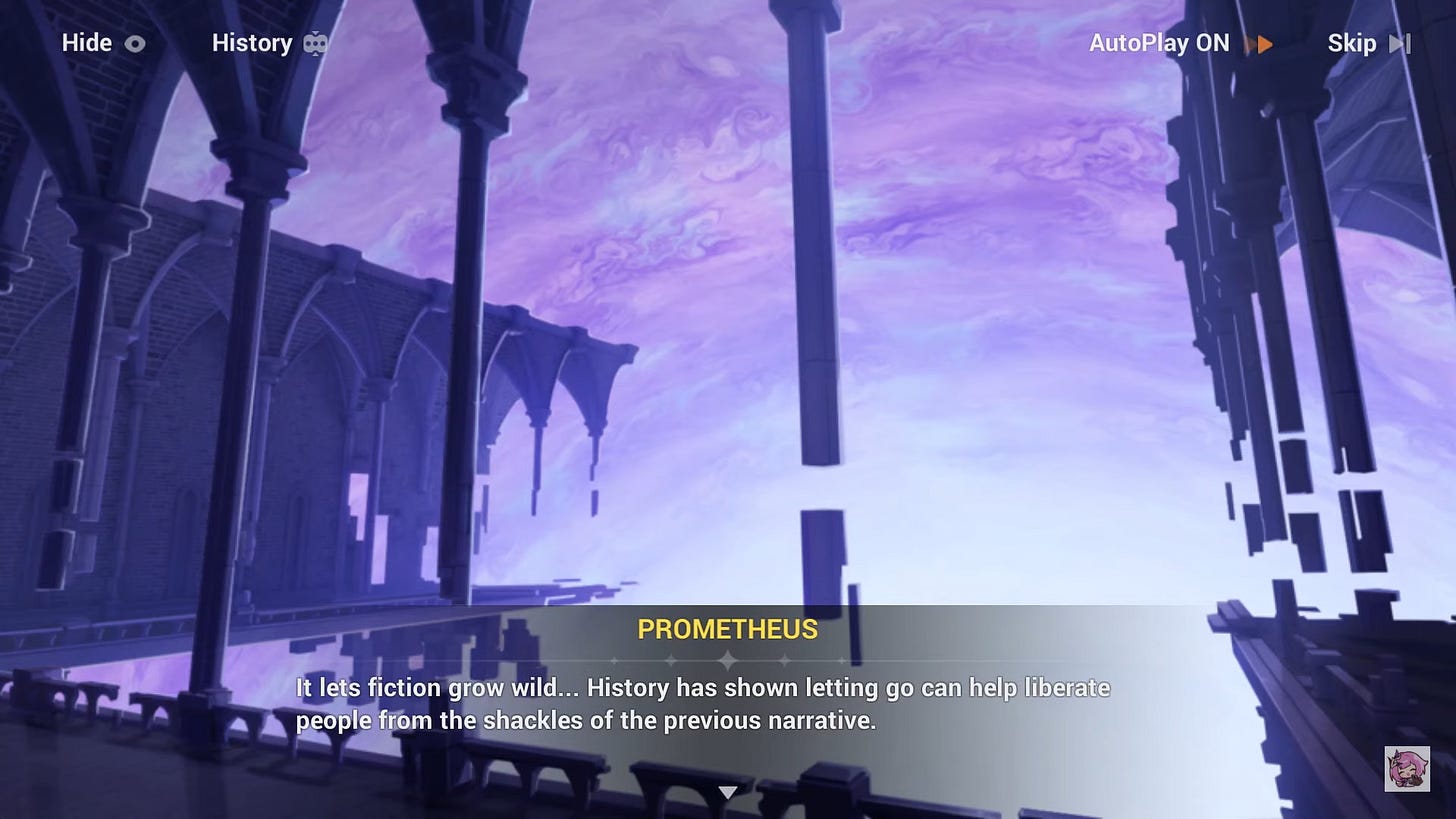
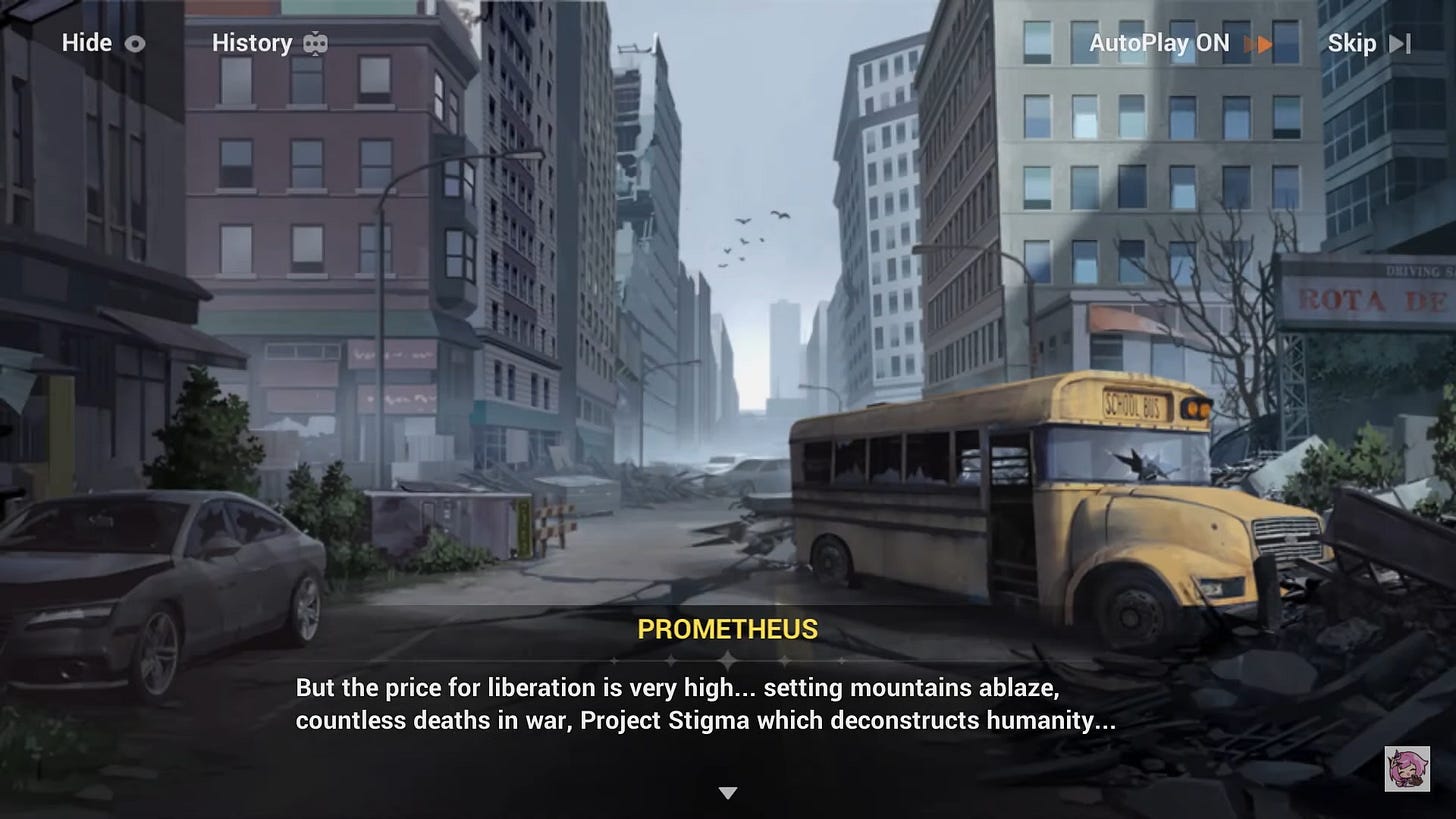
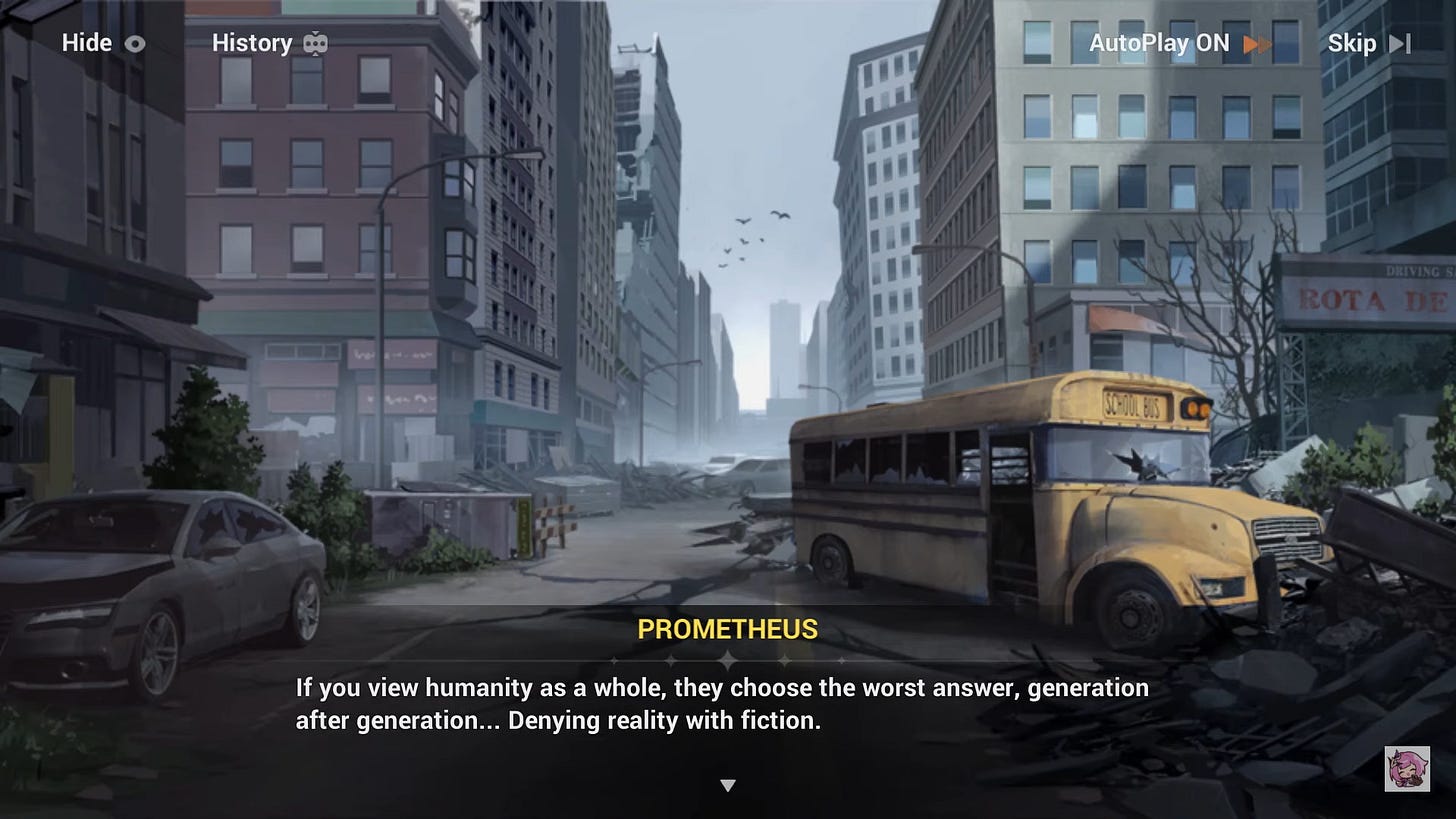
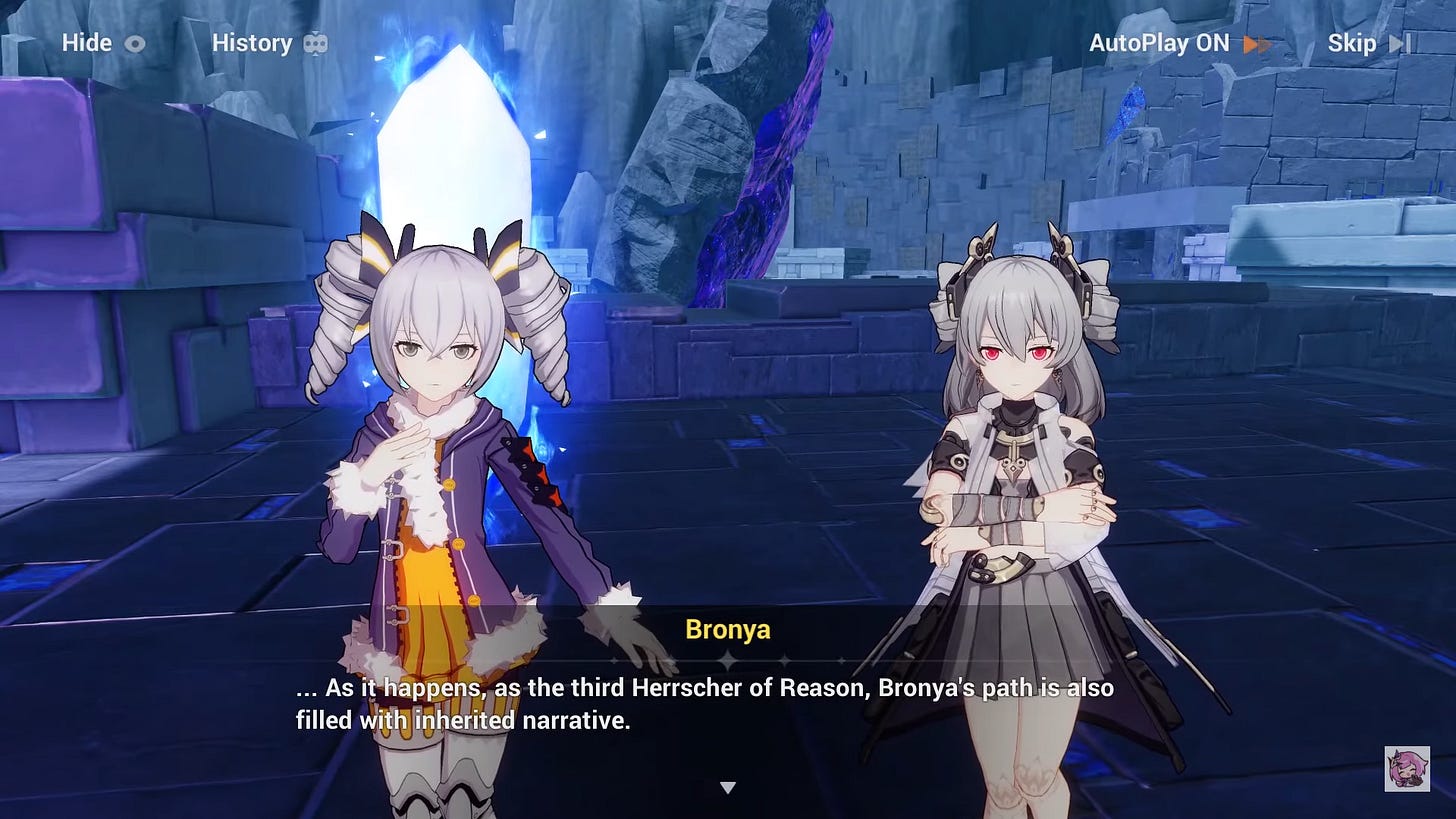
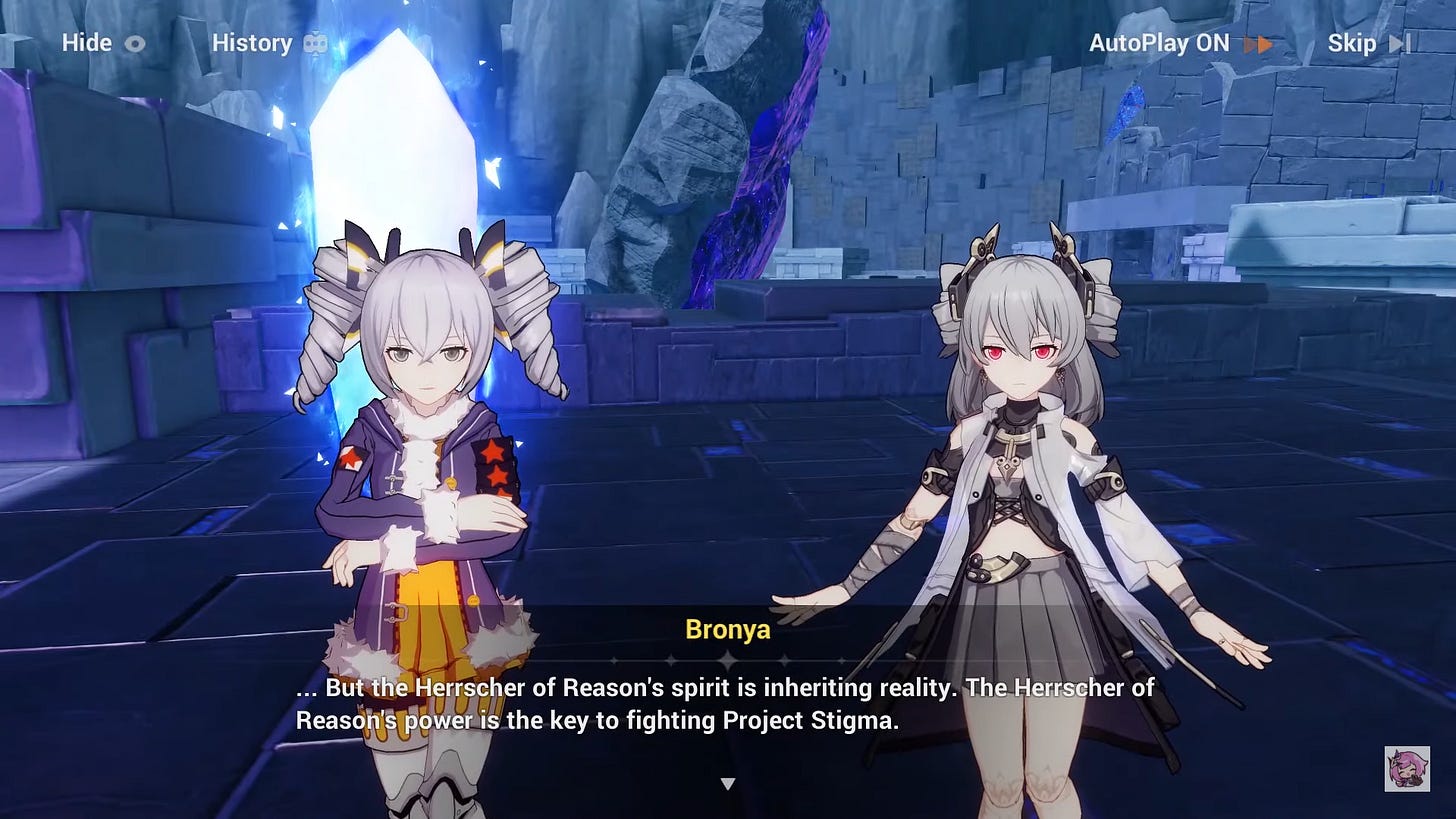


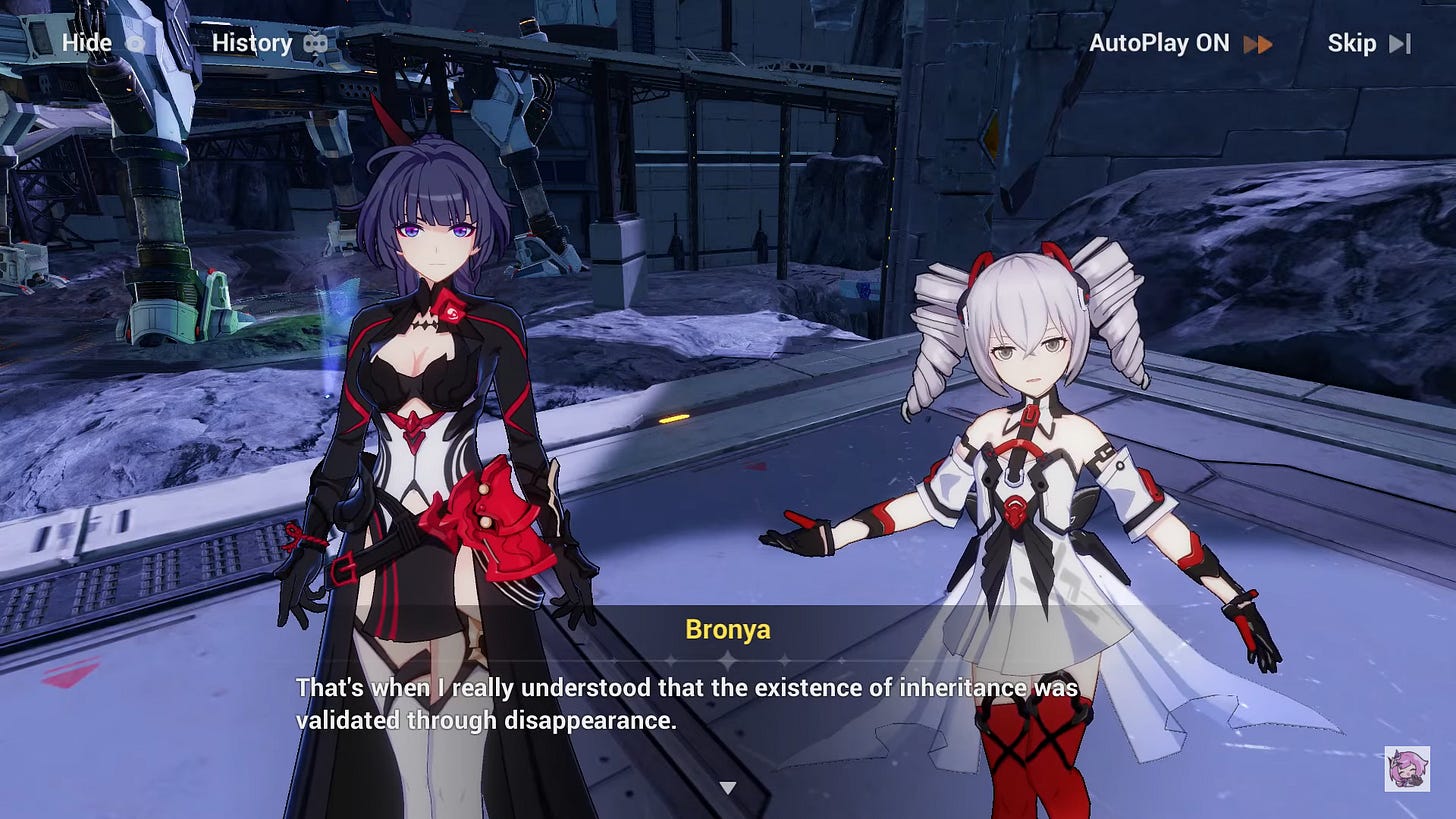
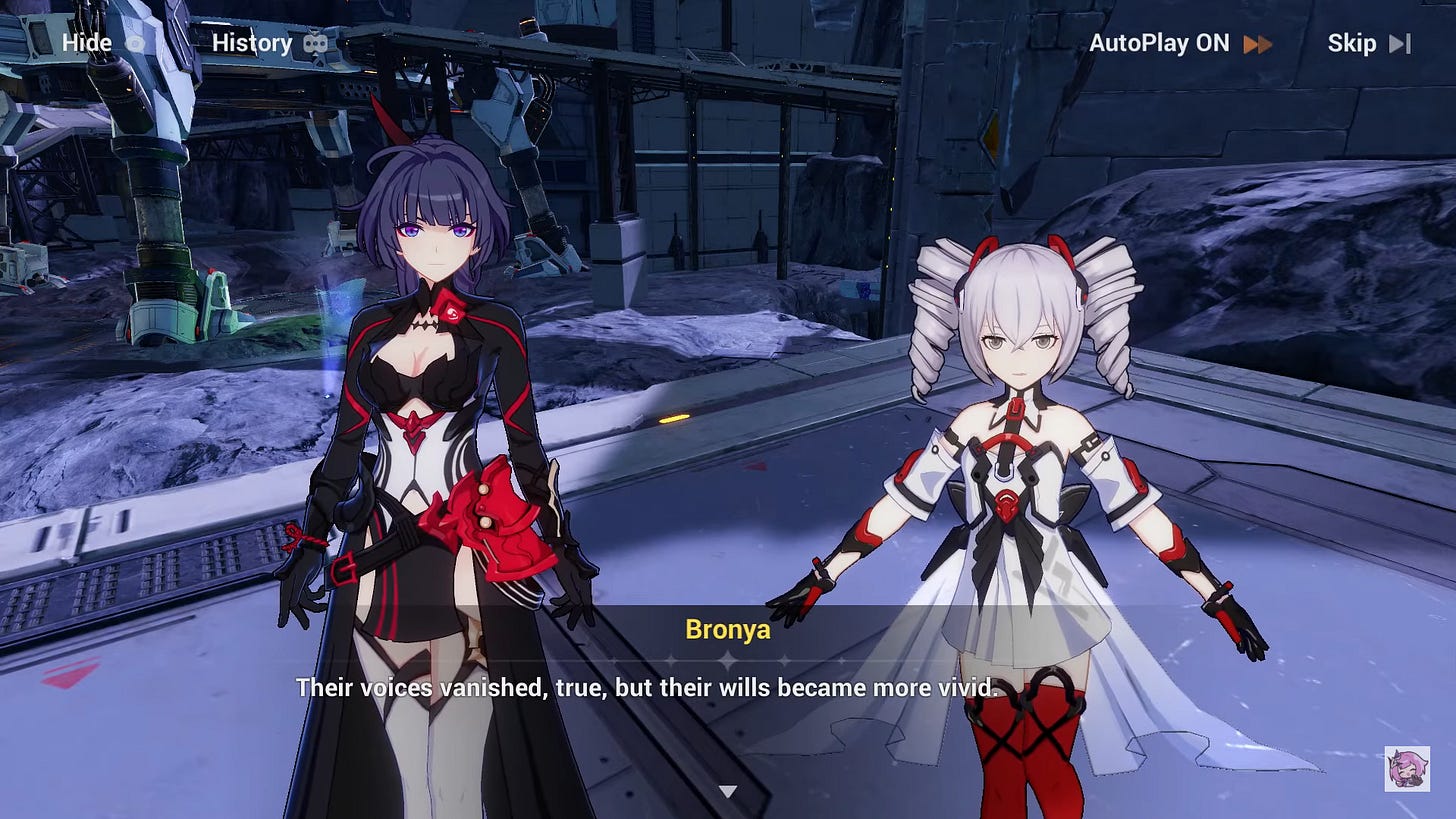
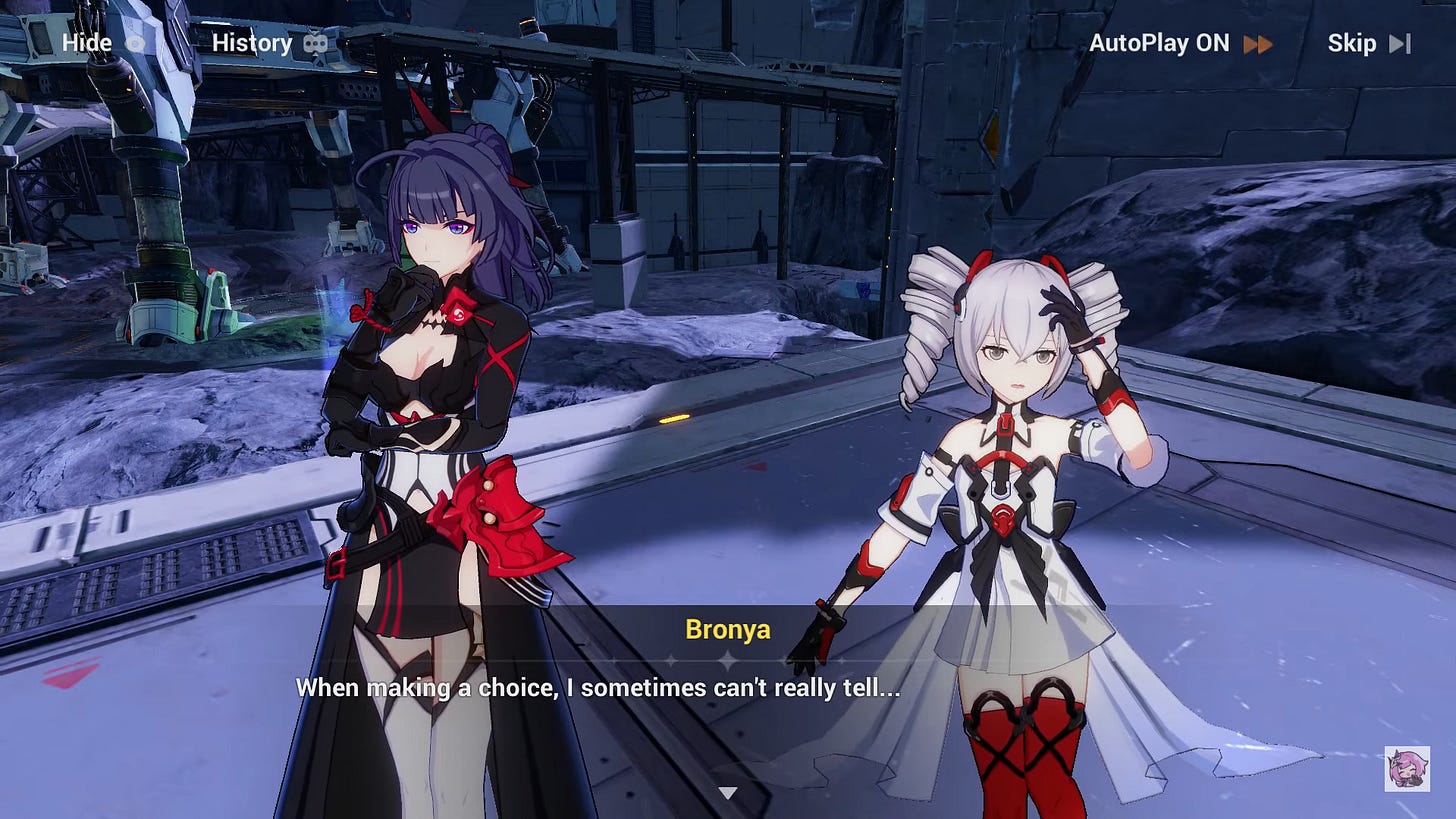
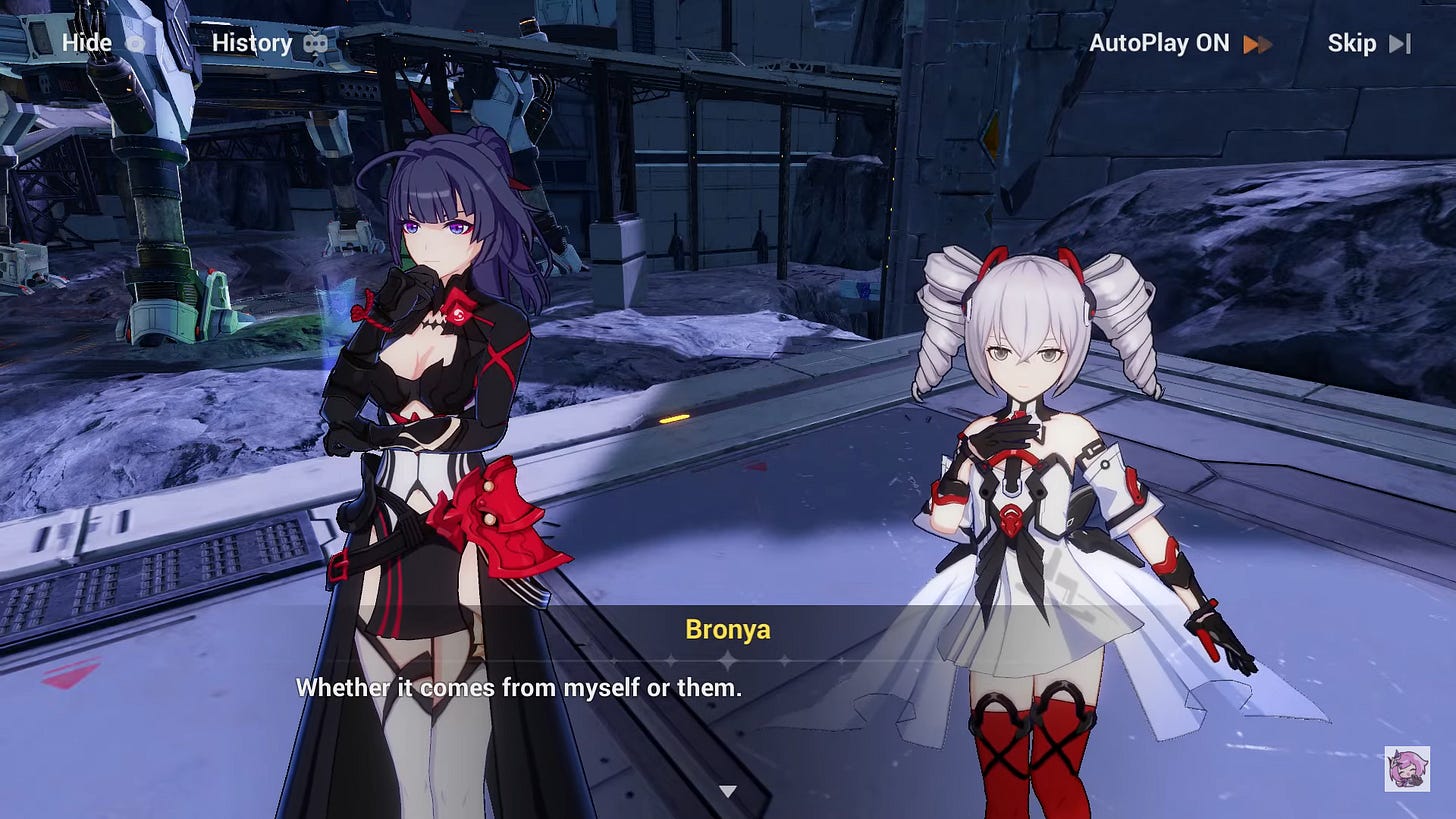
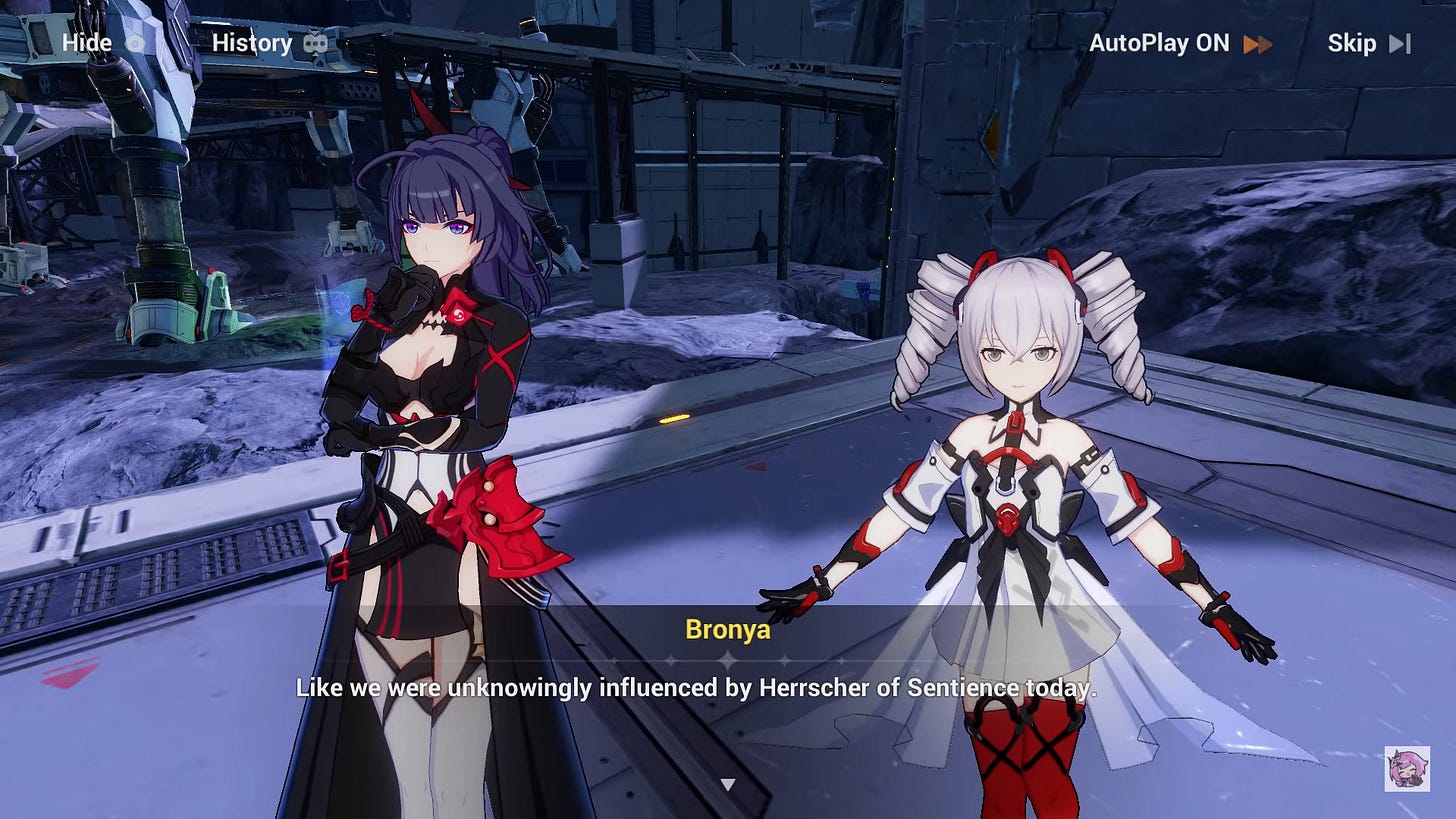
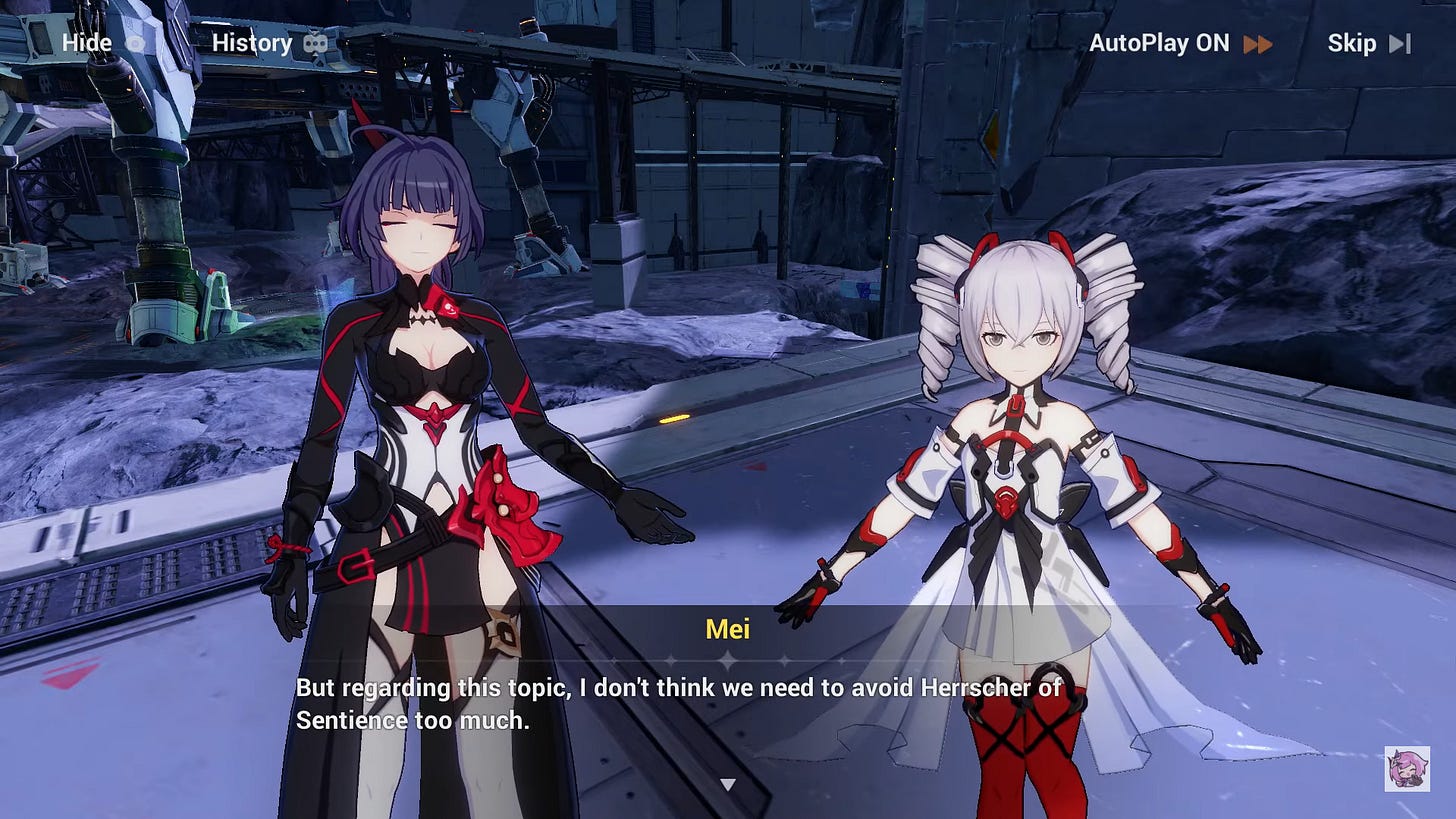
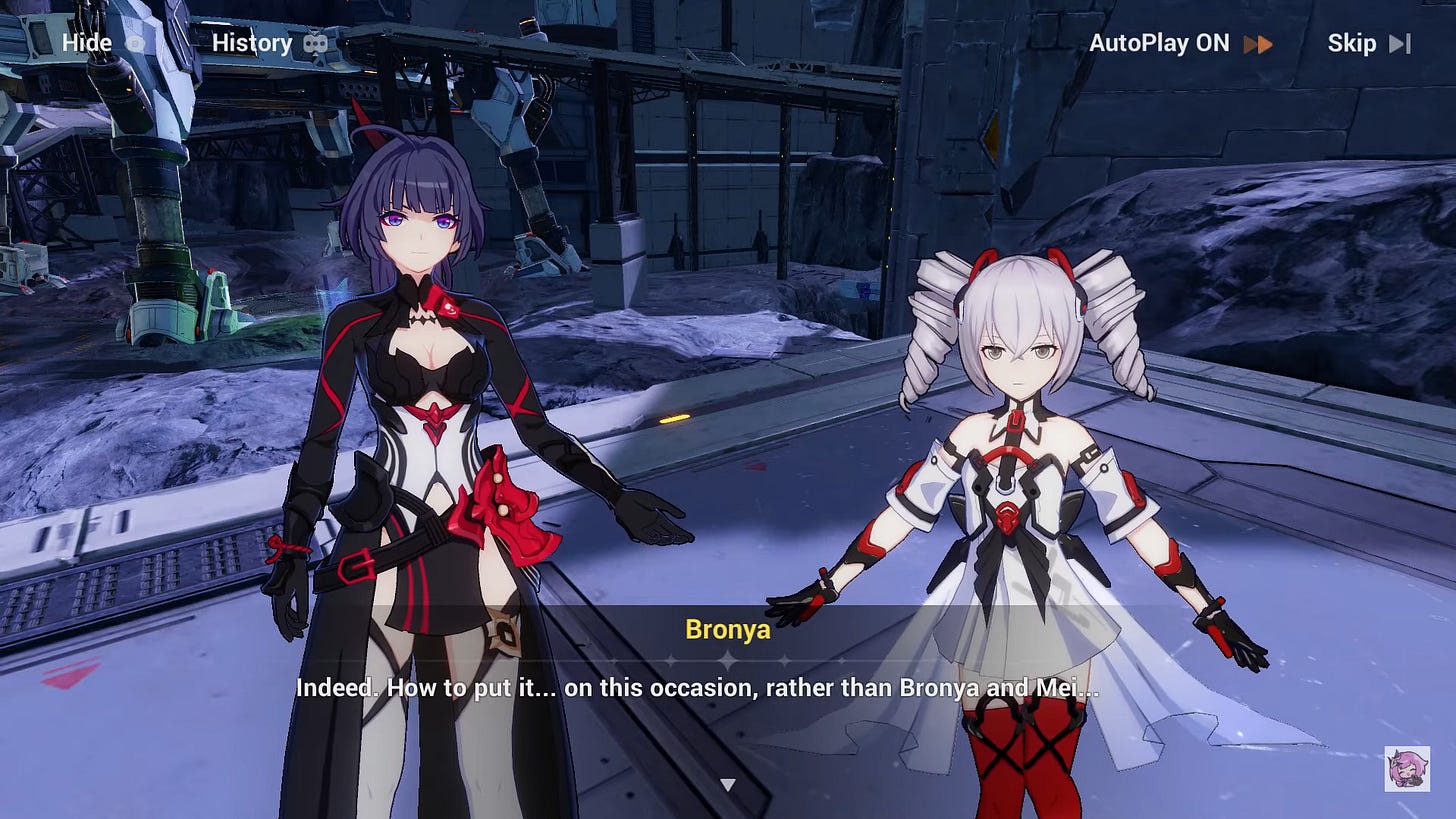
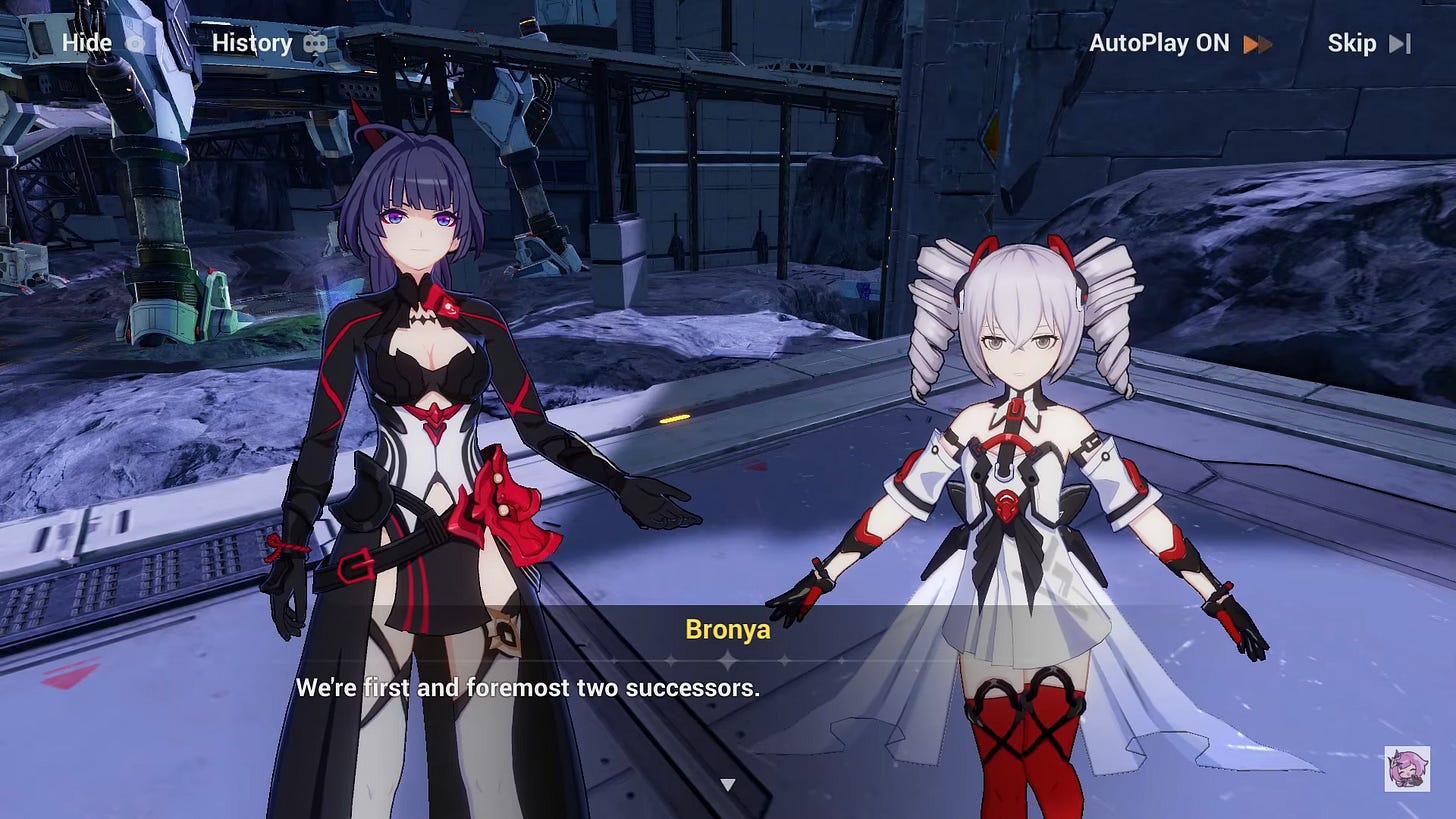
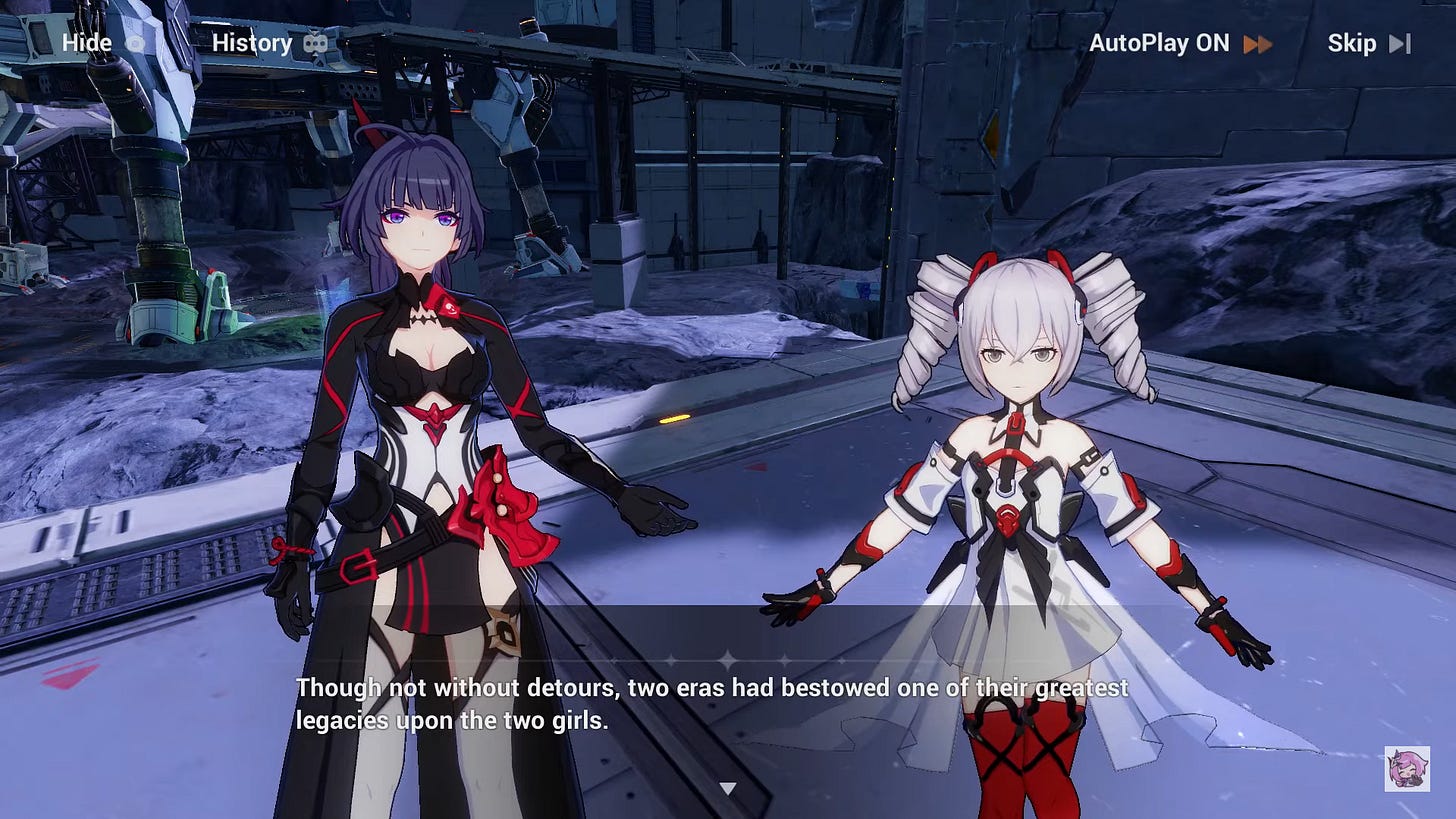
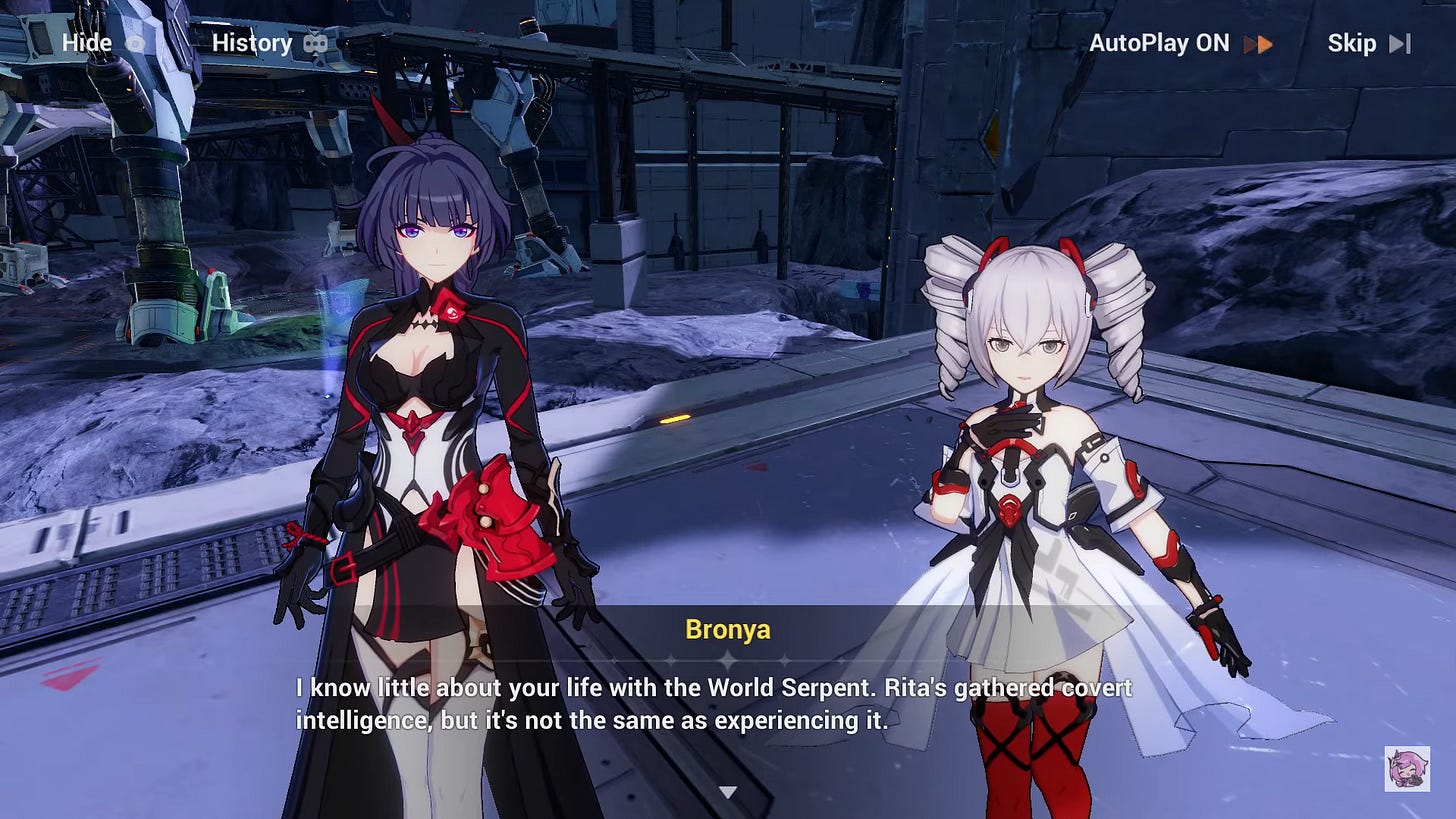
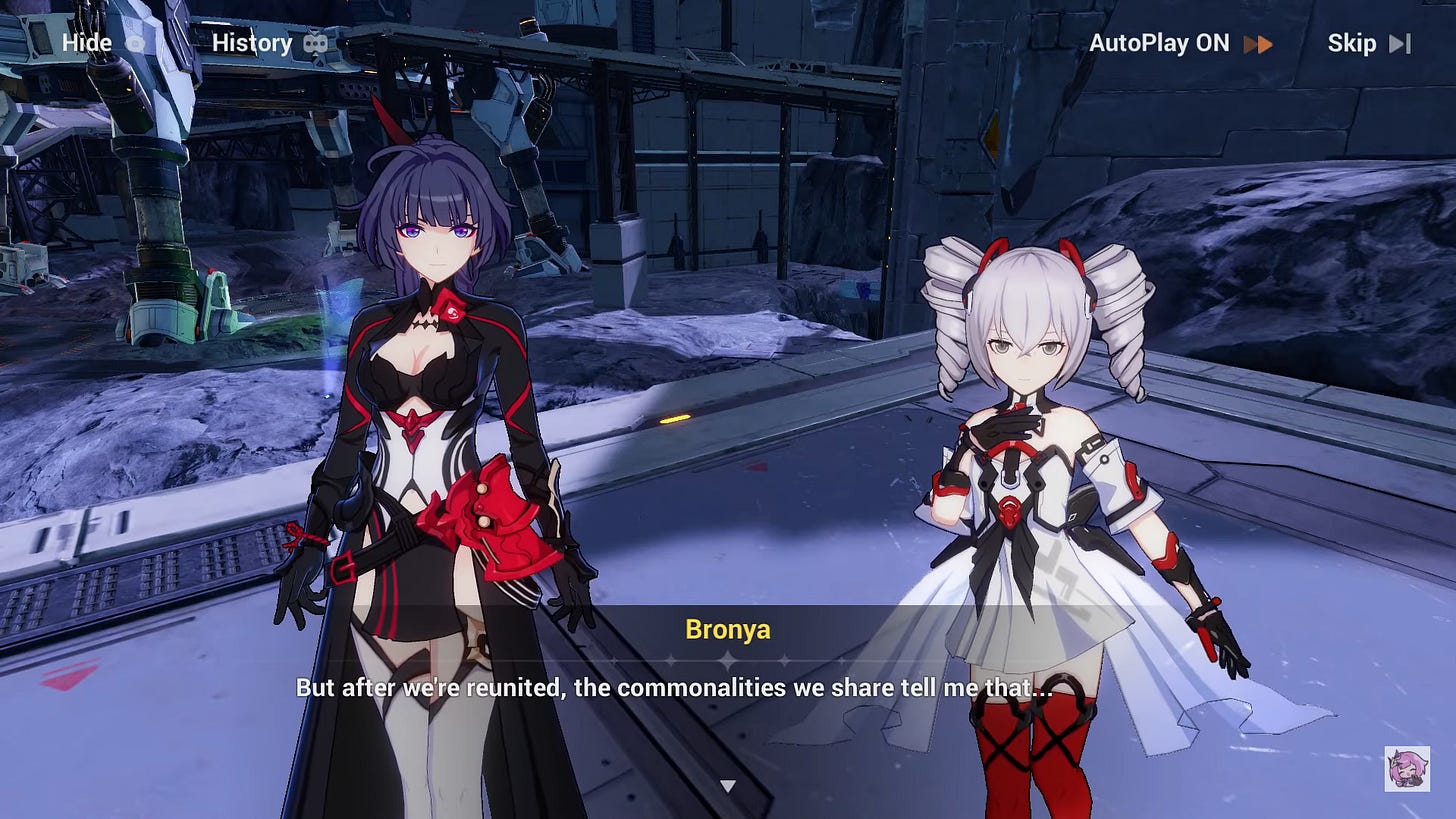
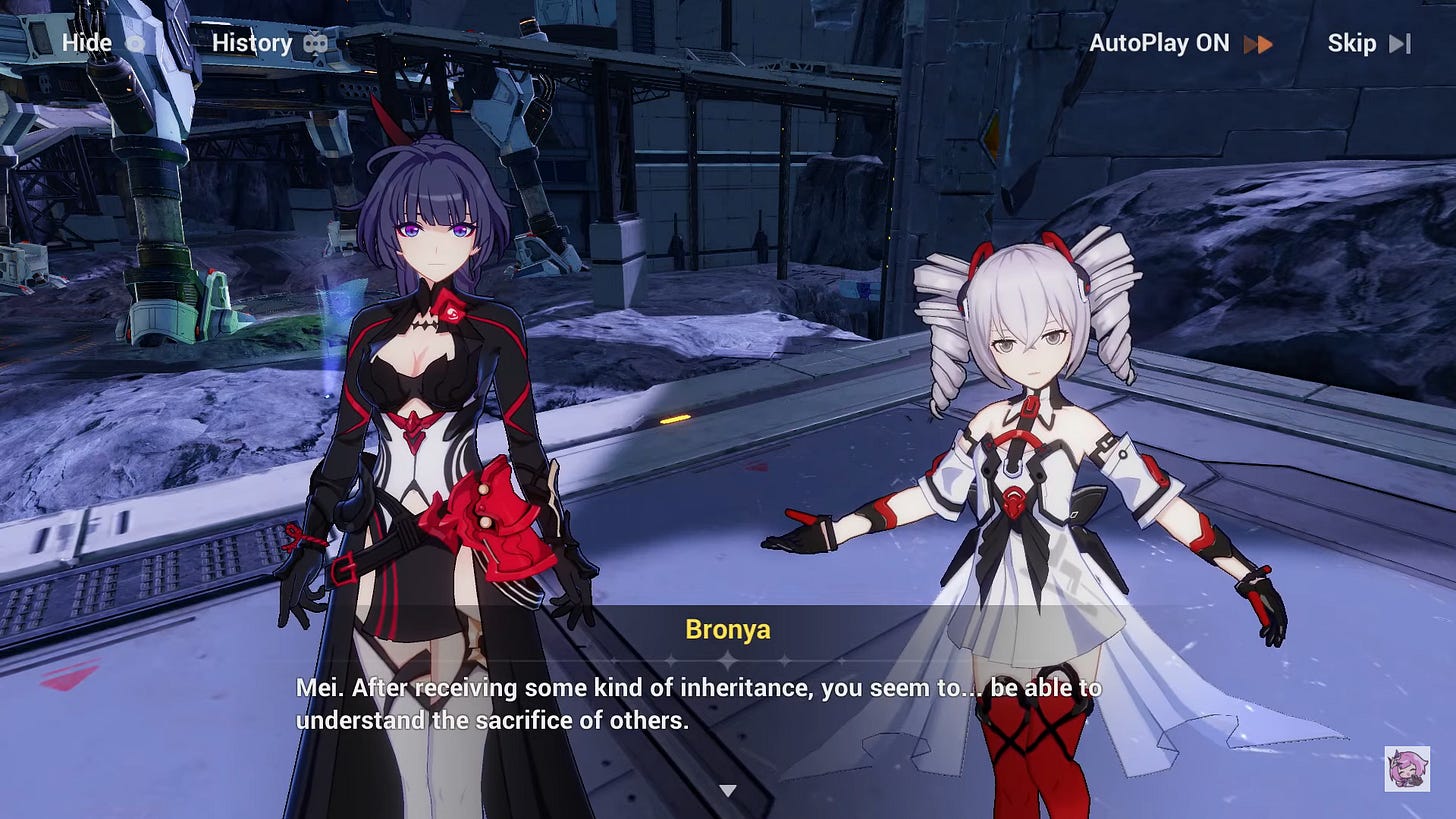
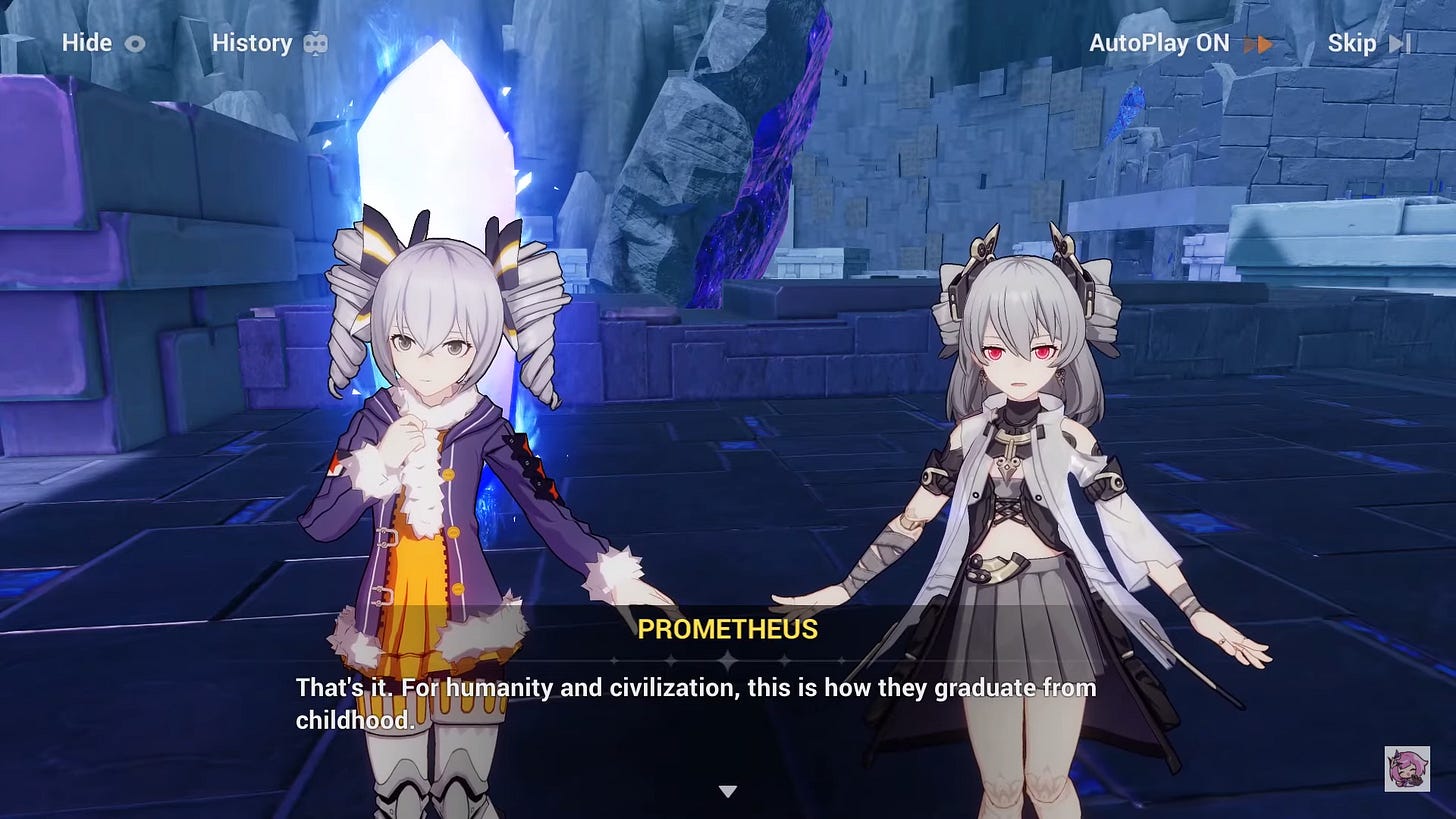
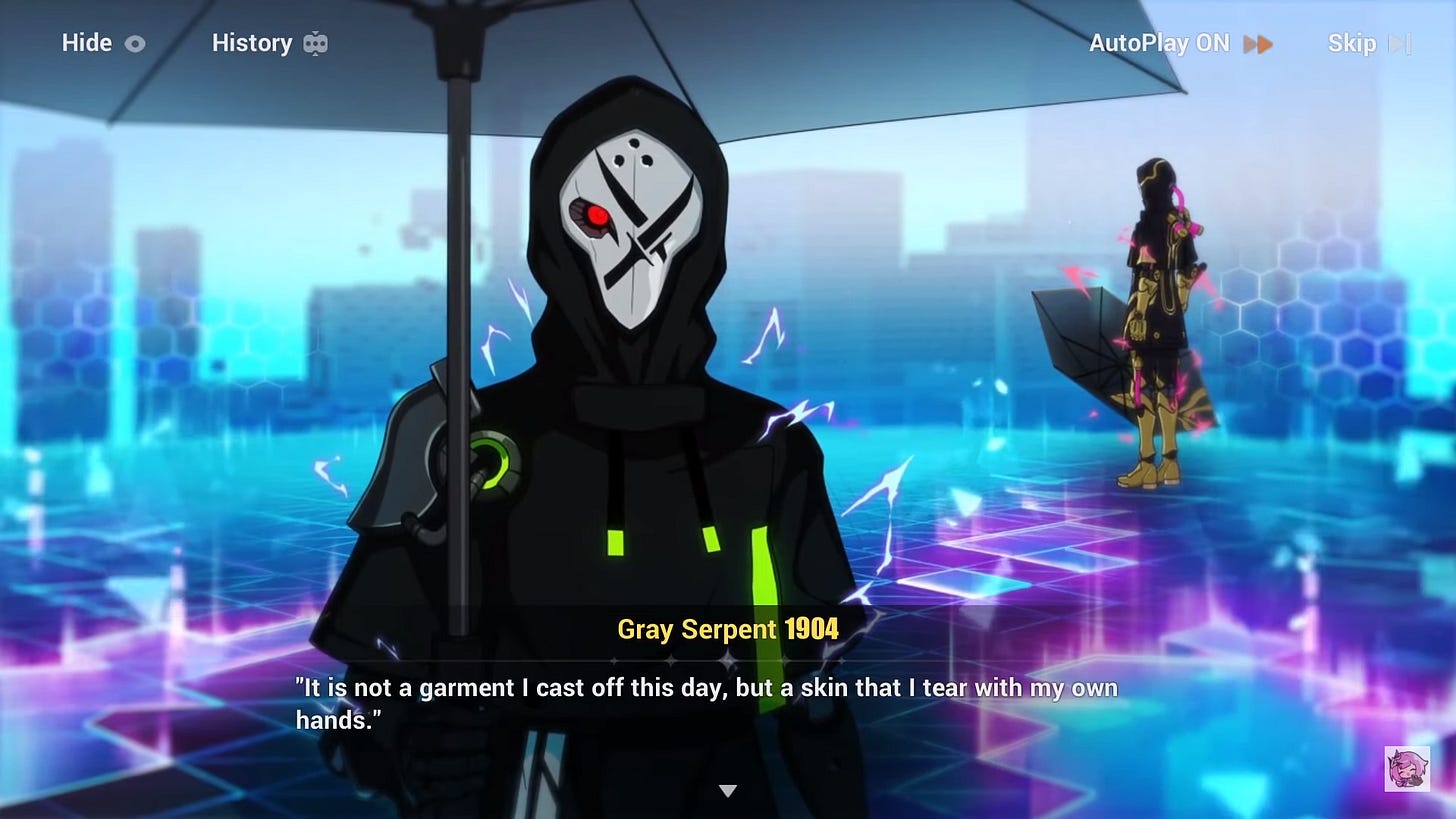
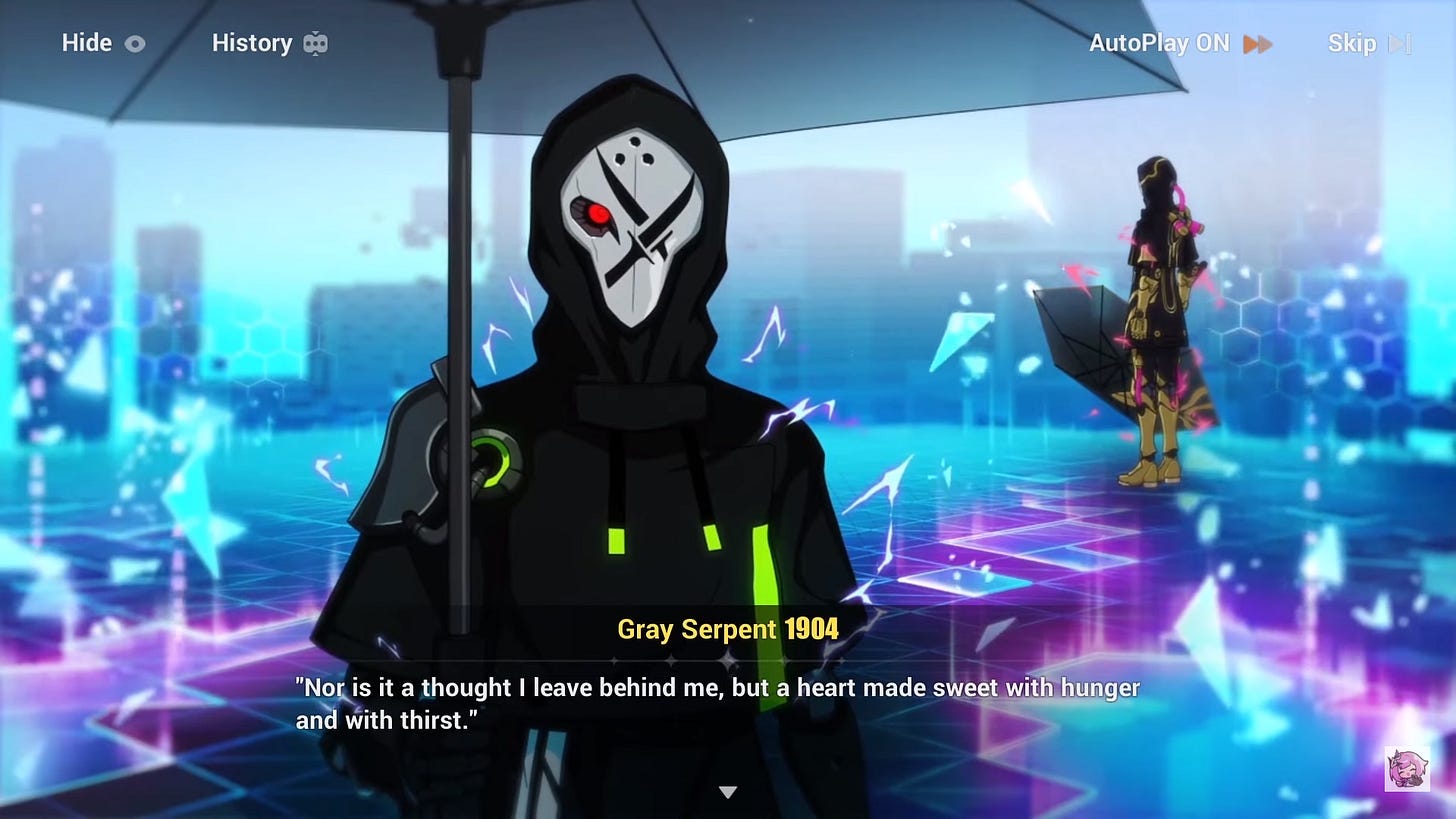
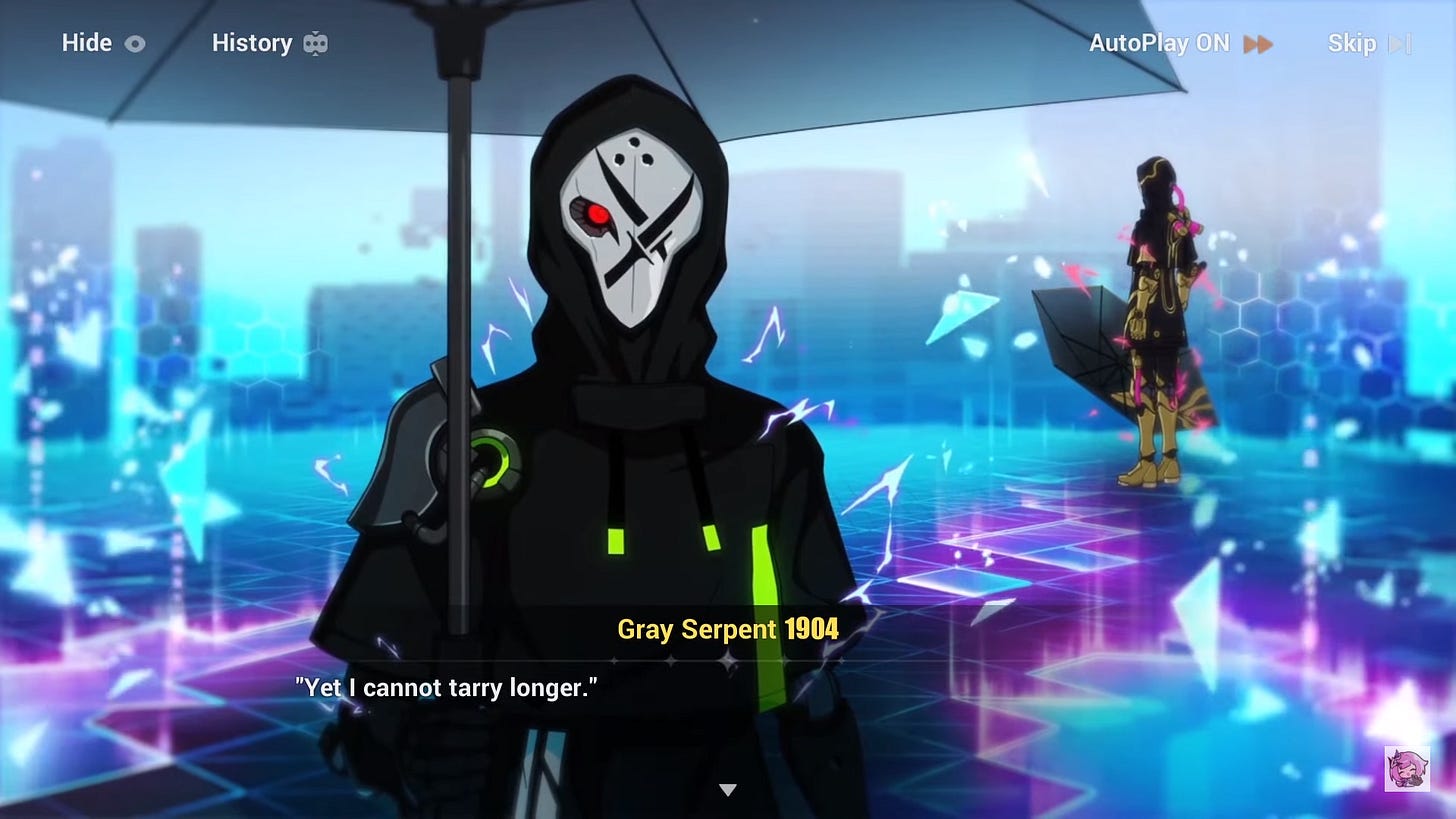
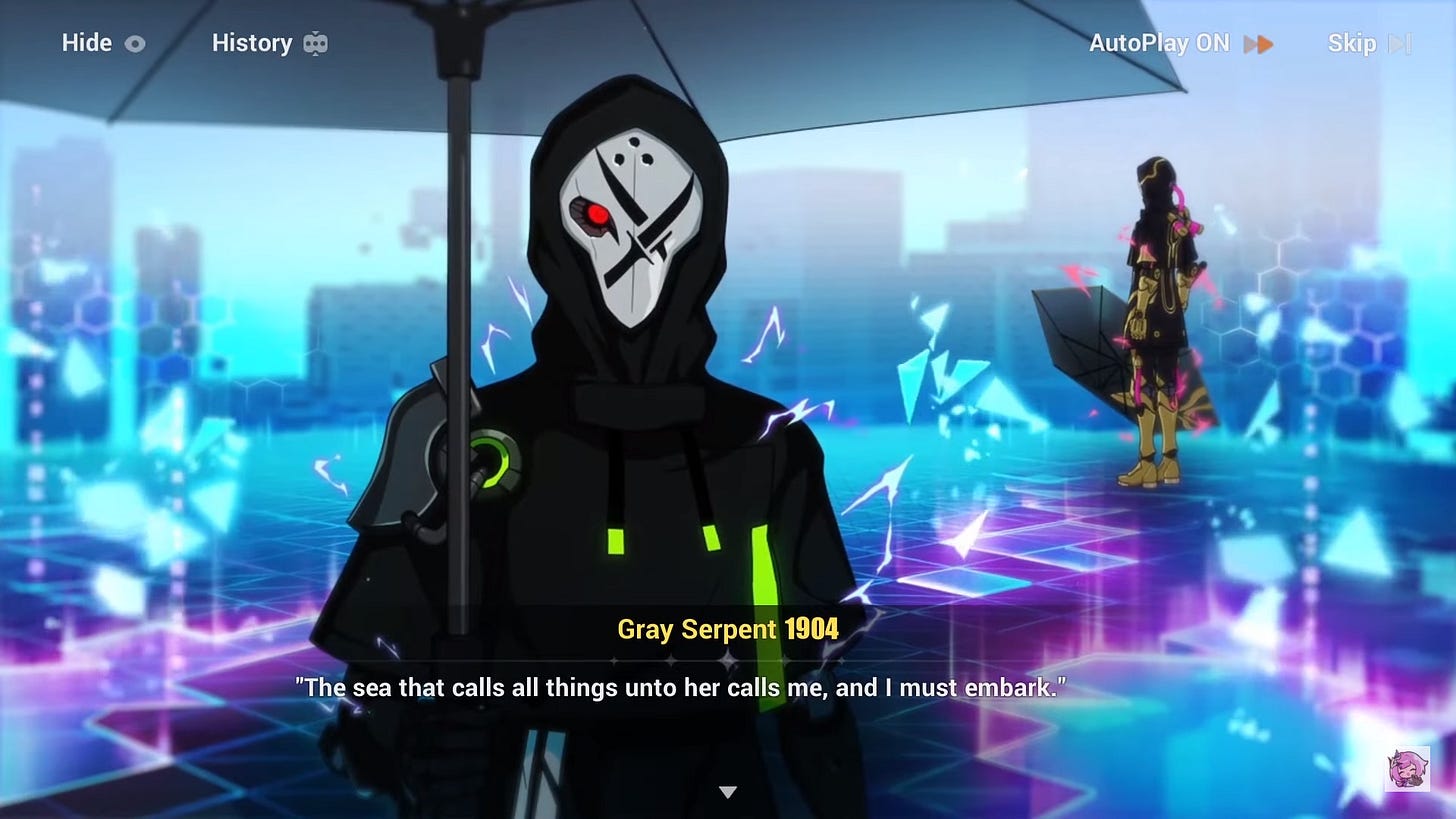
Great analysis !
I think the game has a lot of things to unpack, particularly with the final arc, but when you take a closer look at it you begin to understand its many writing qualities.